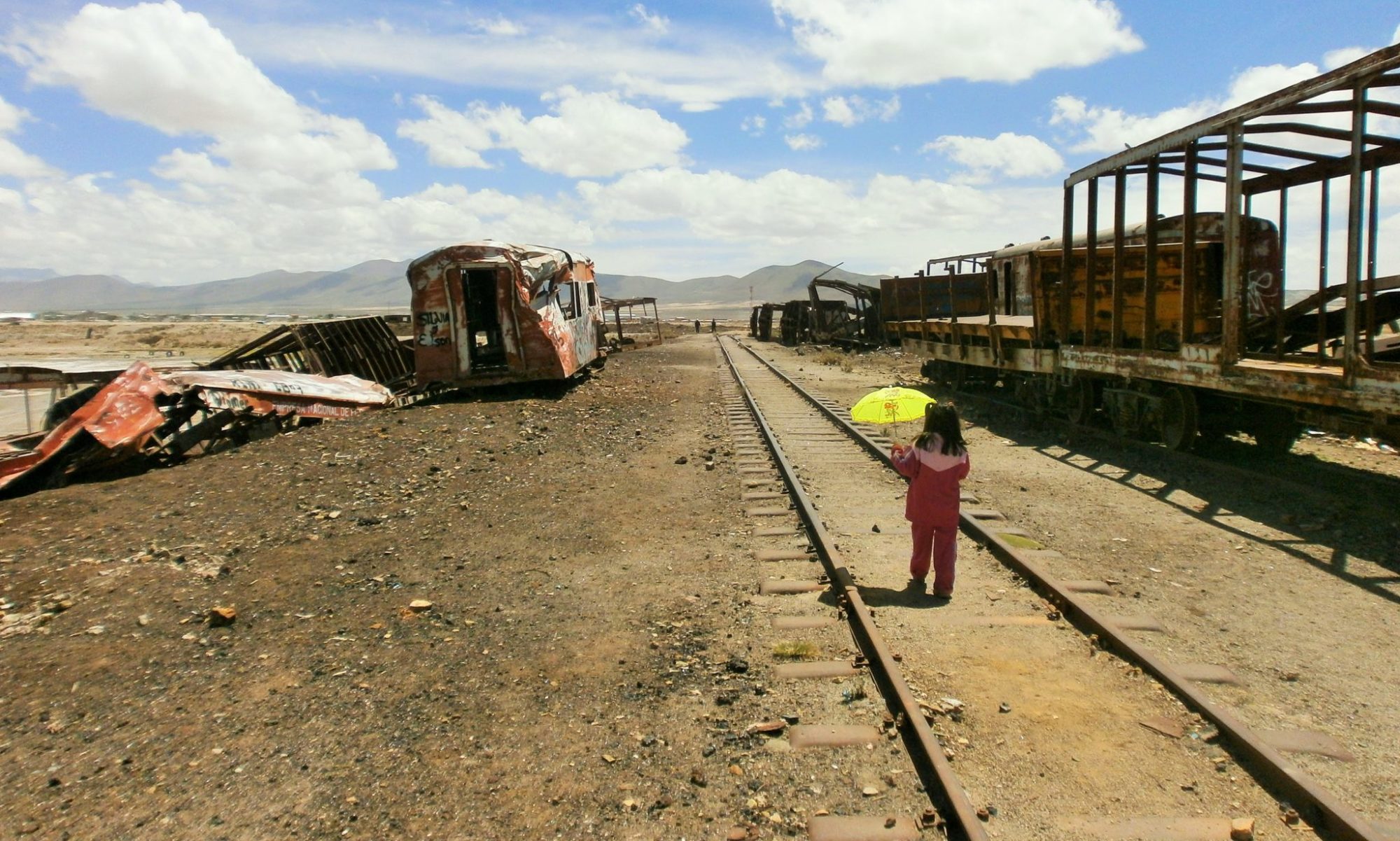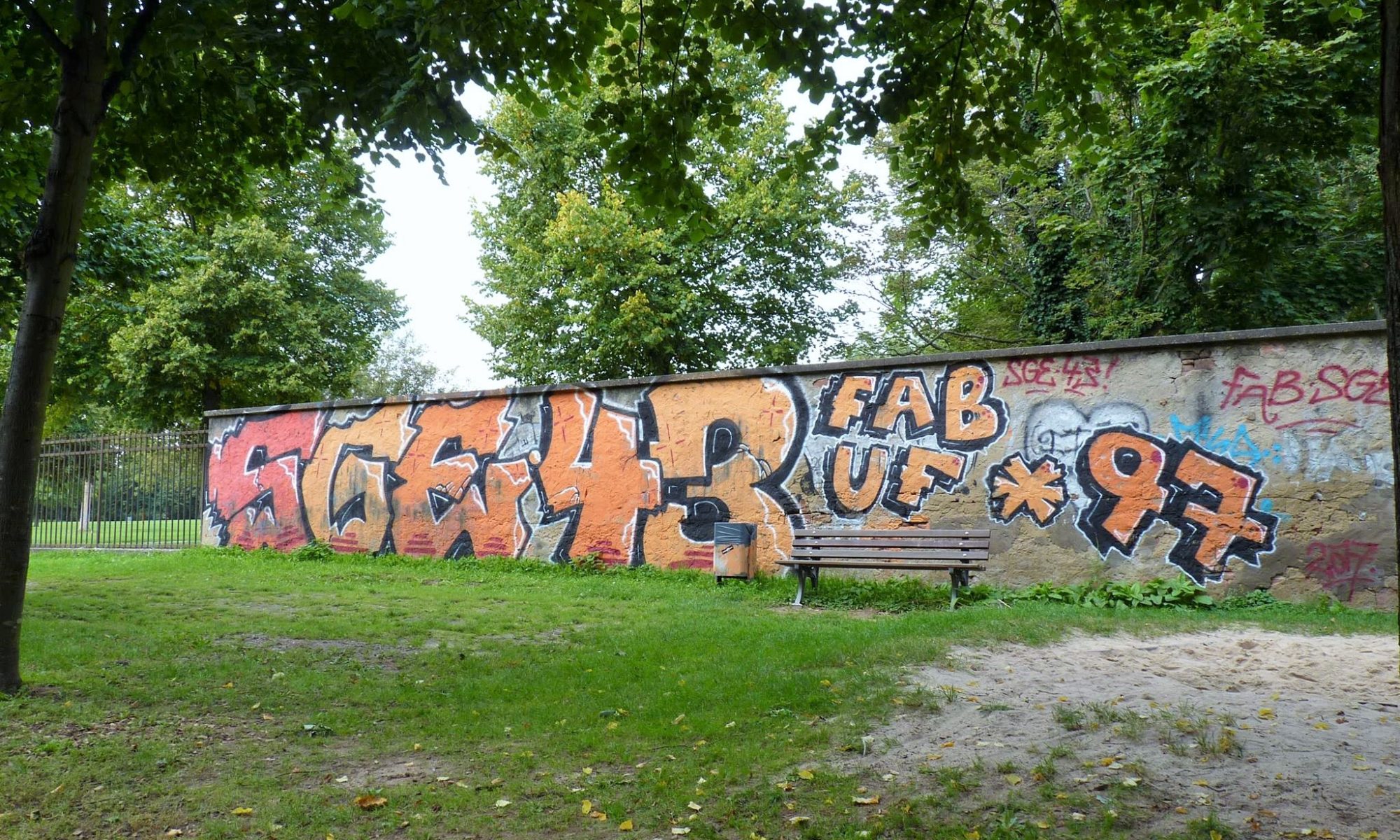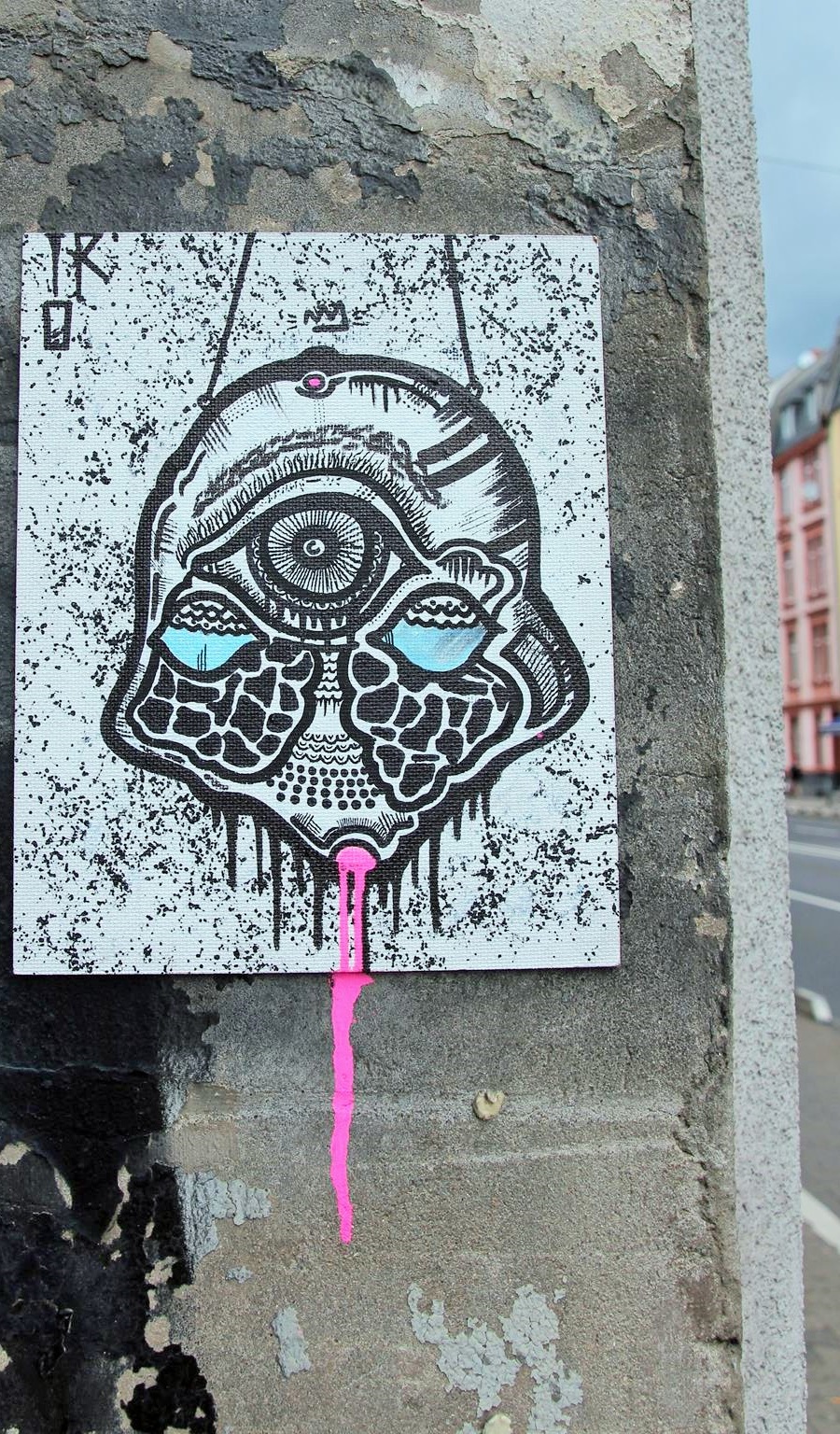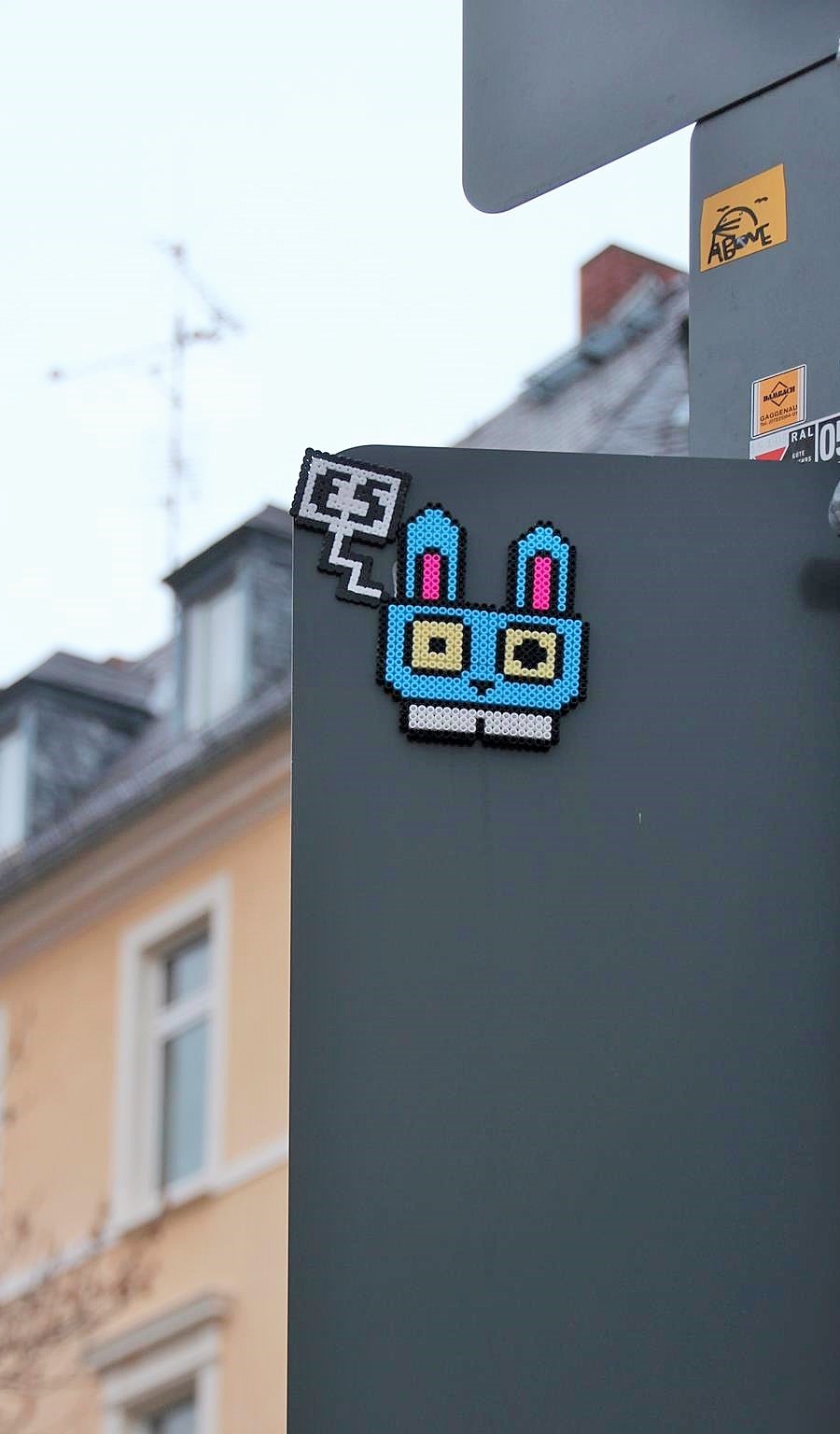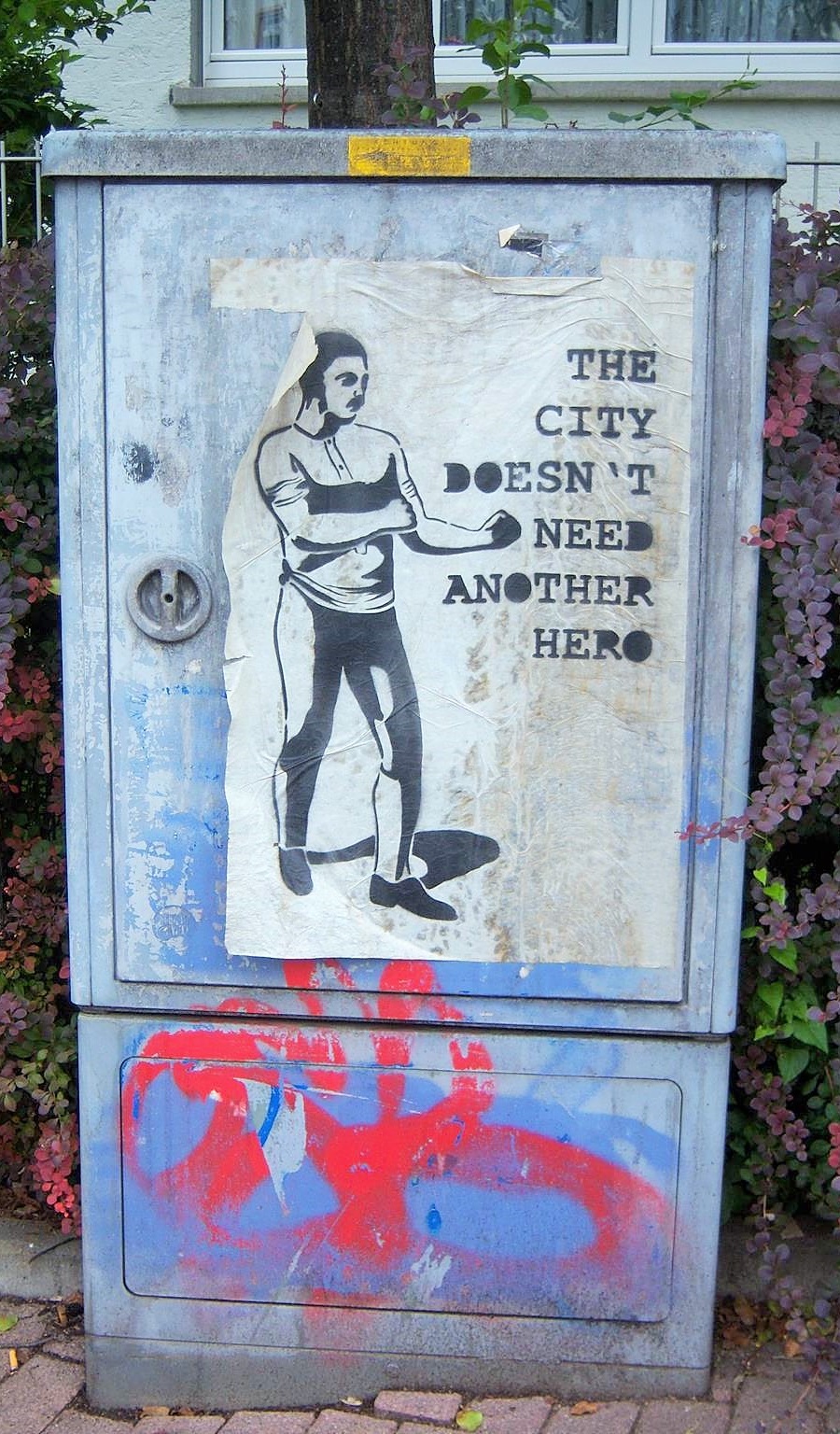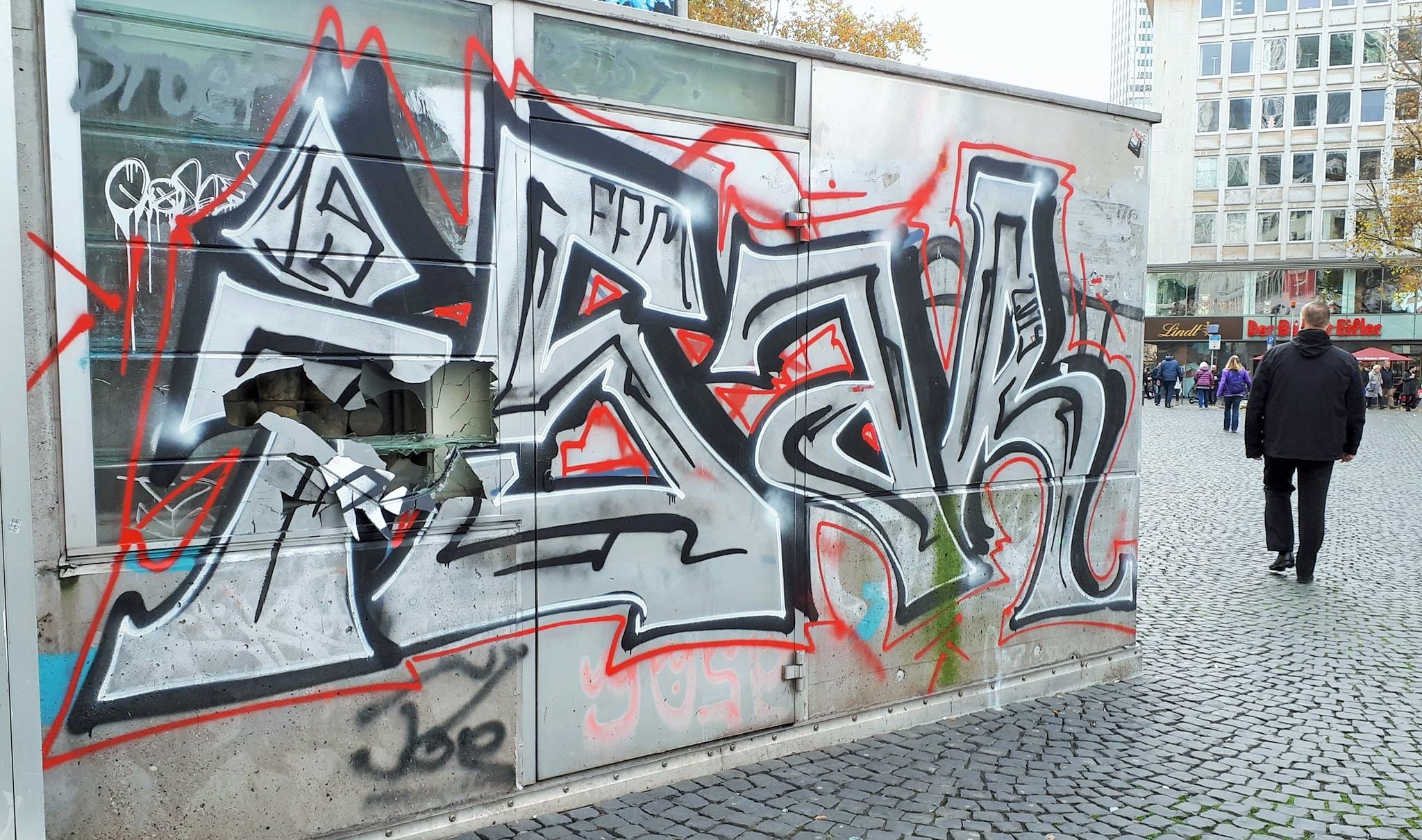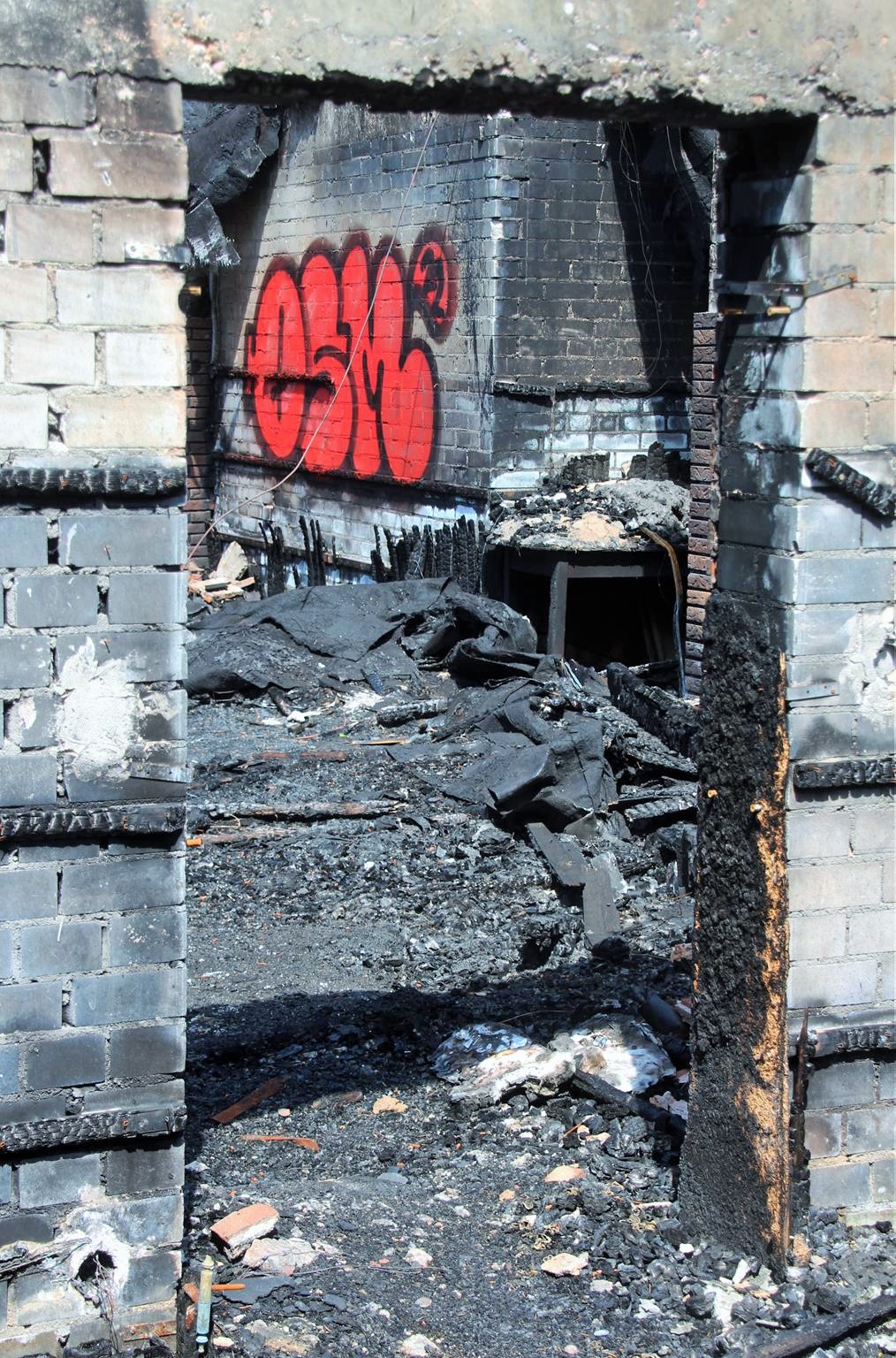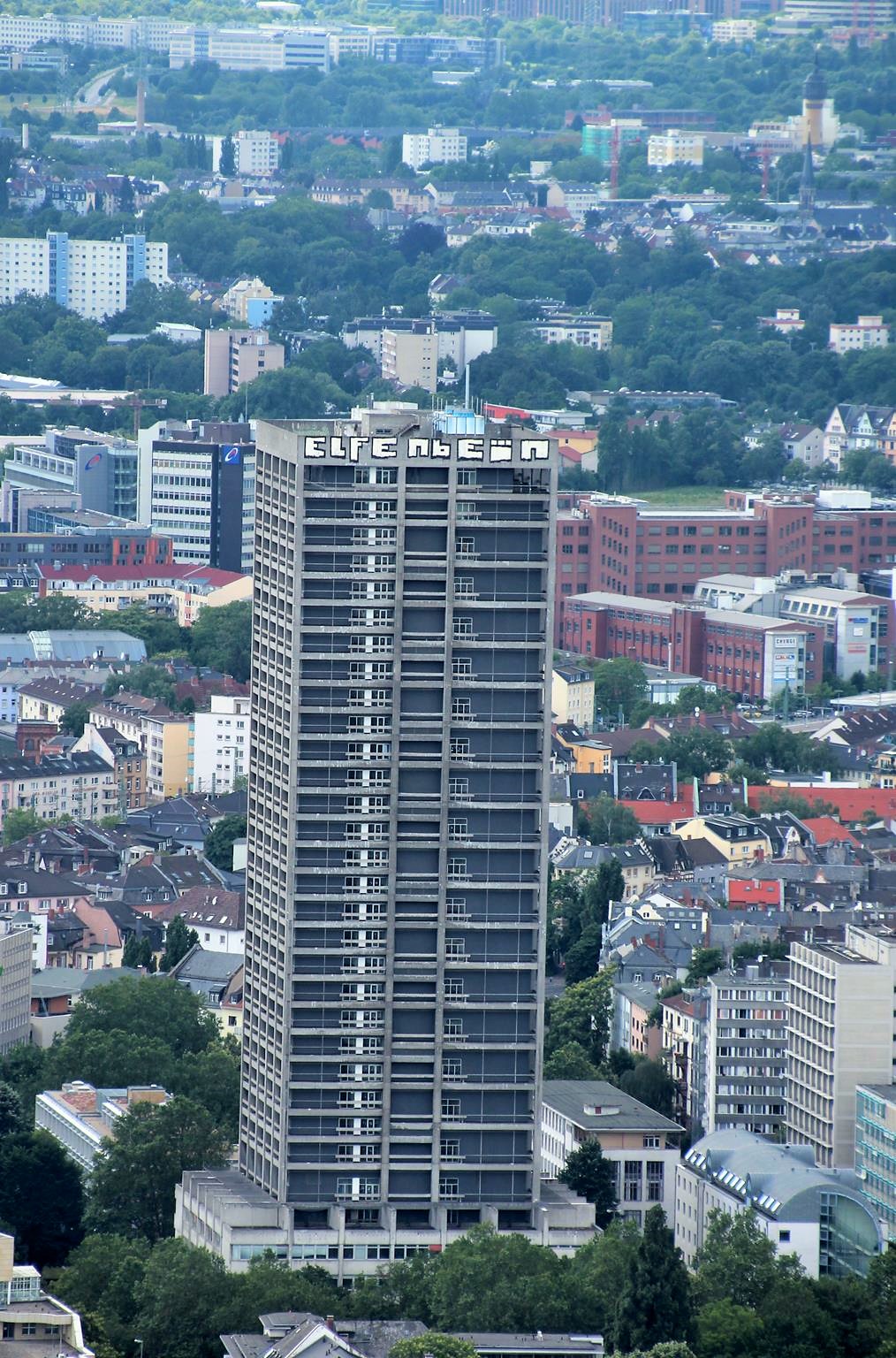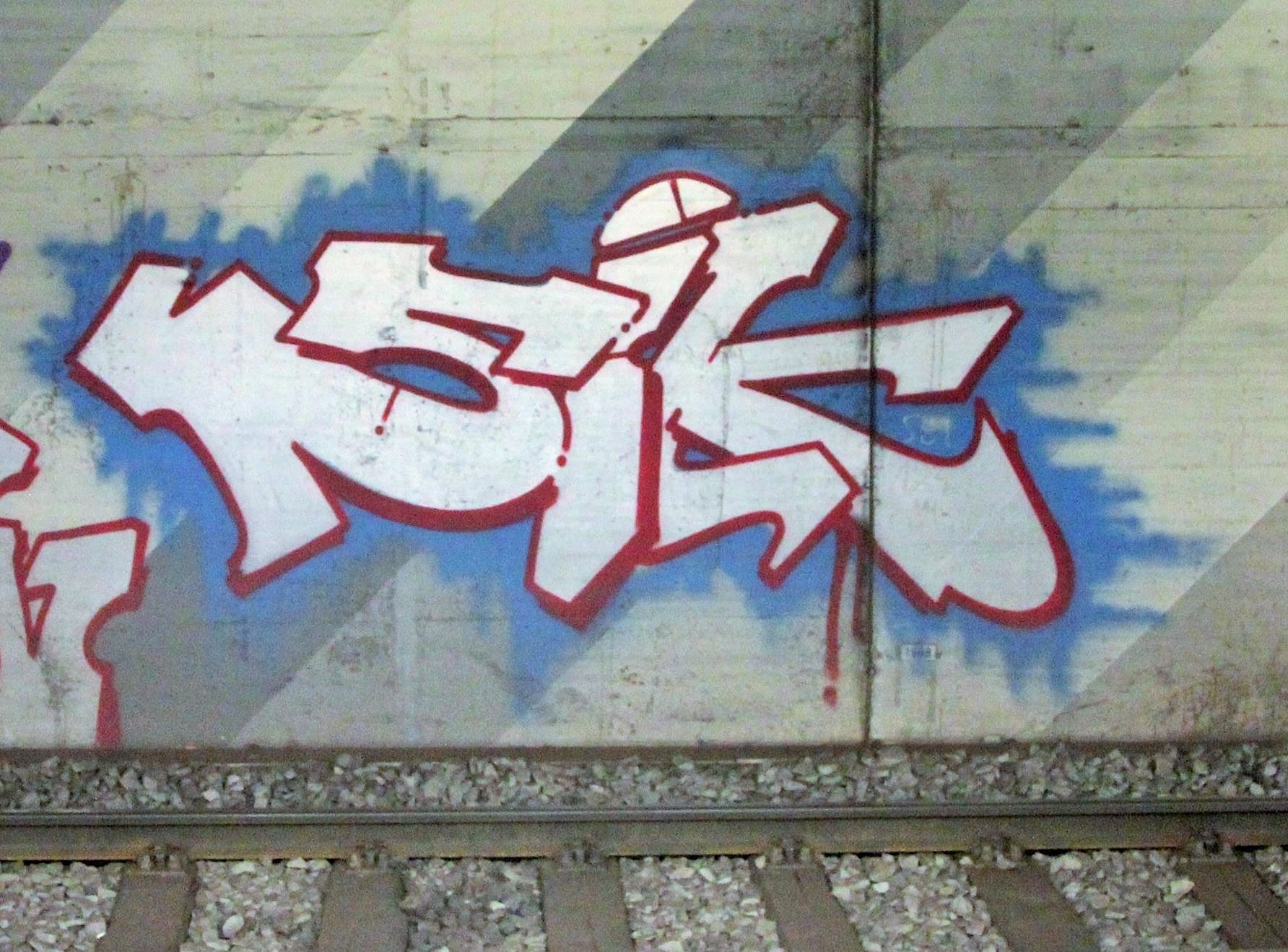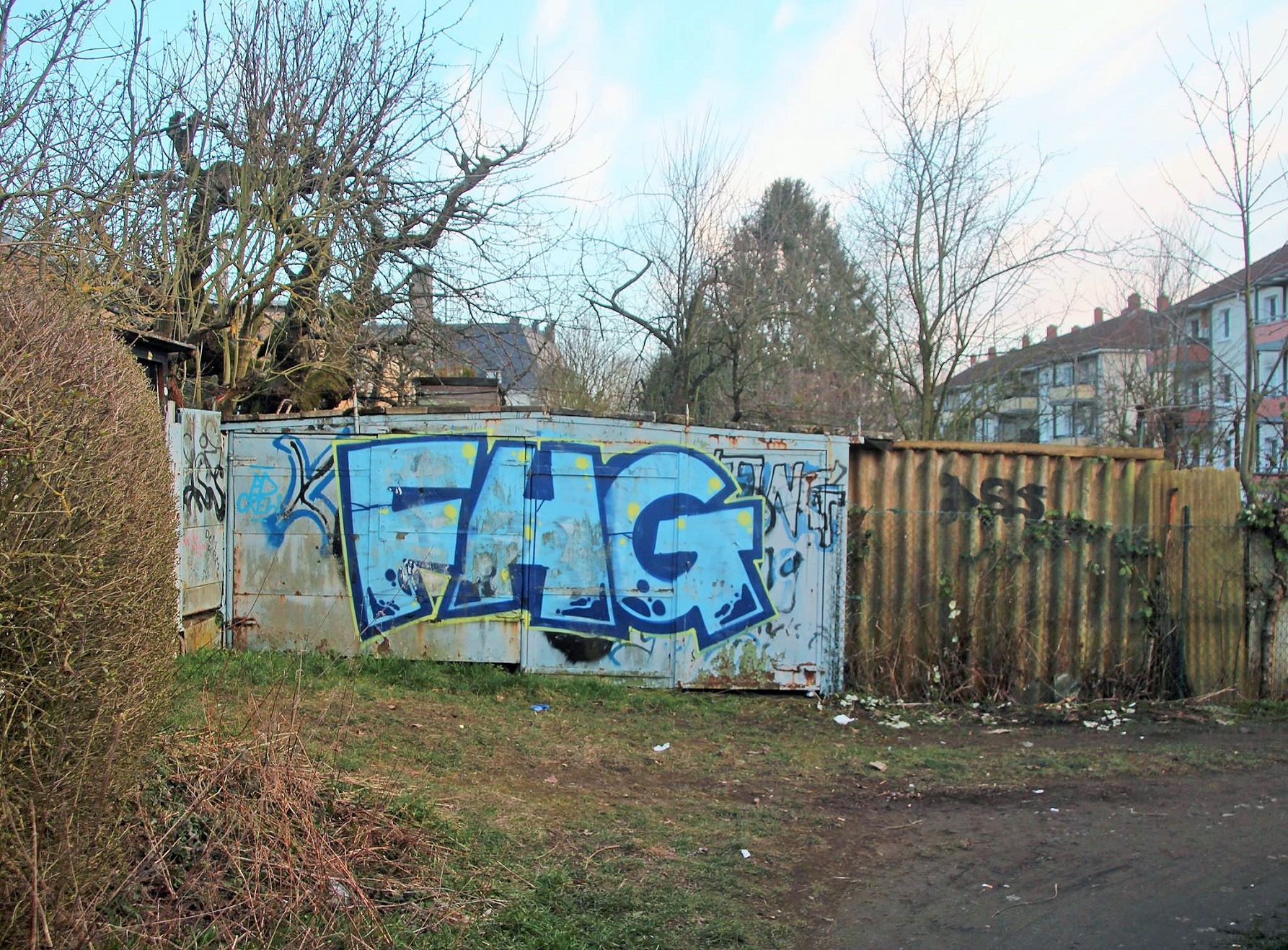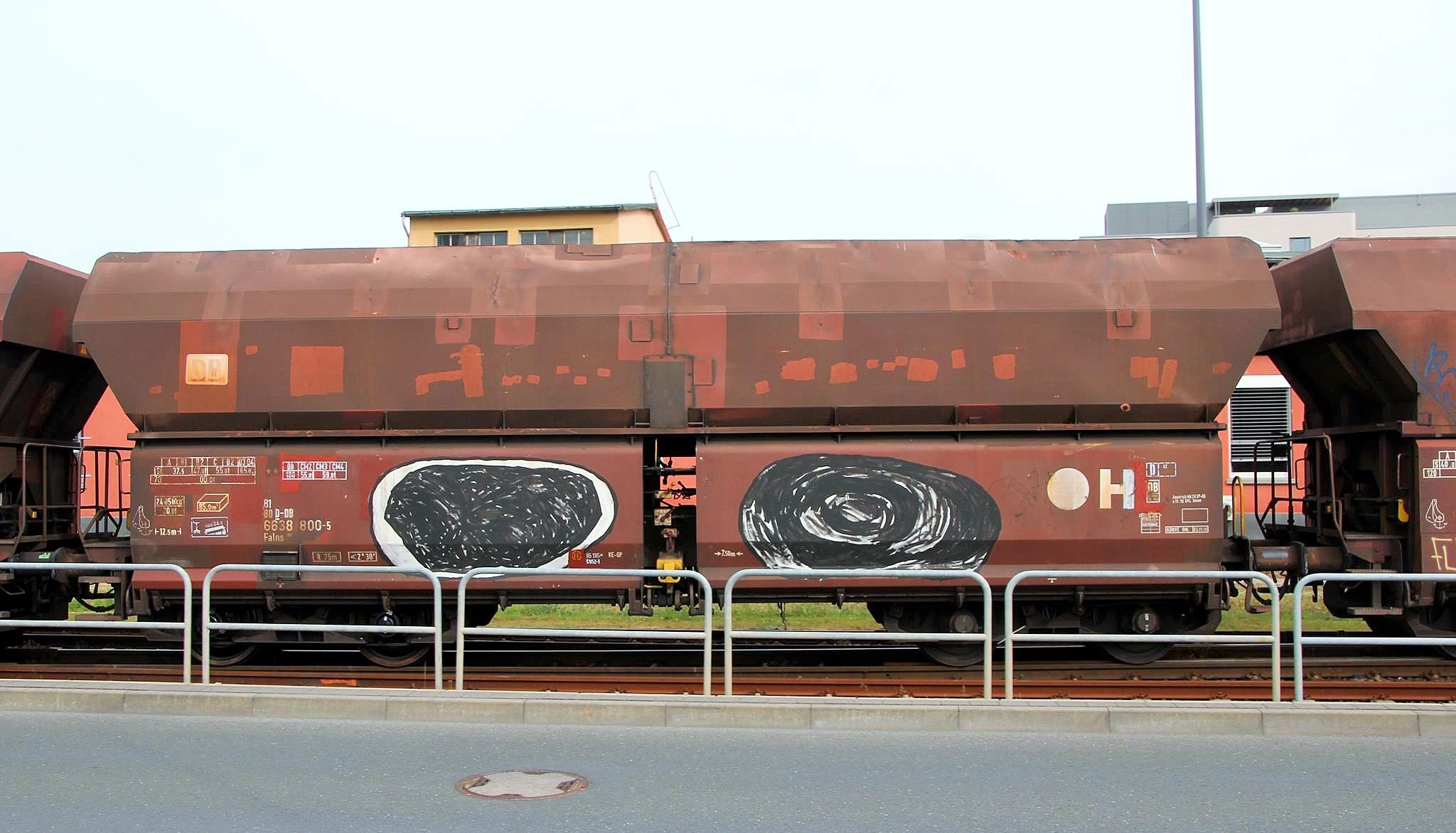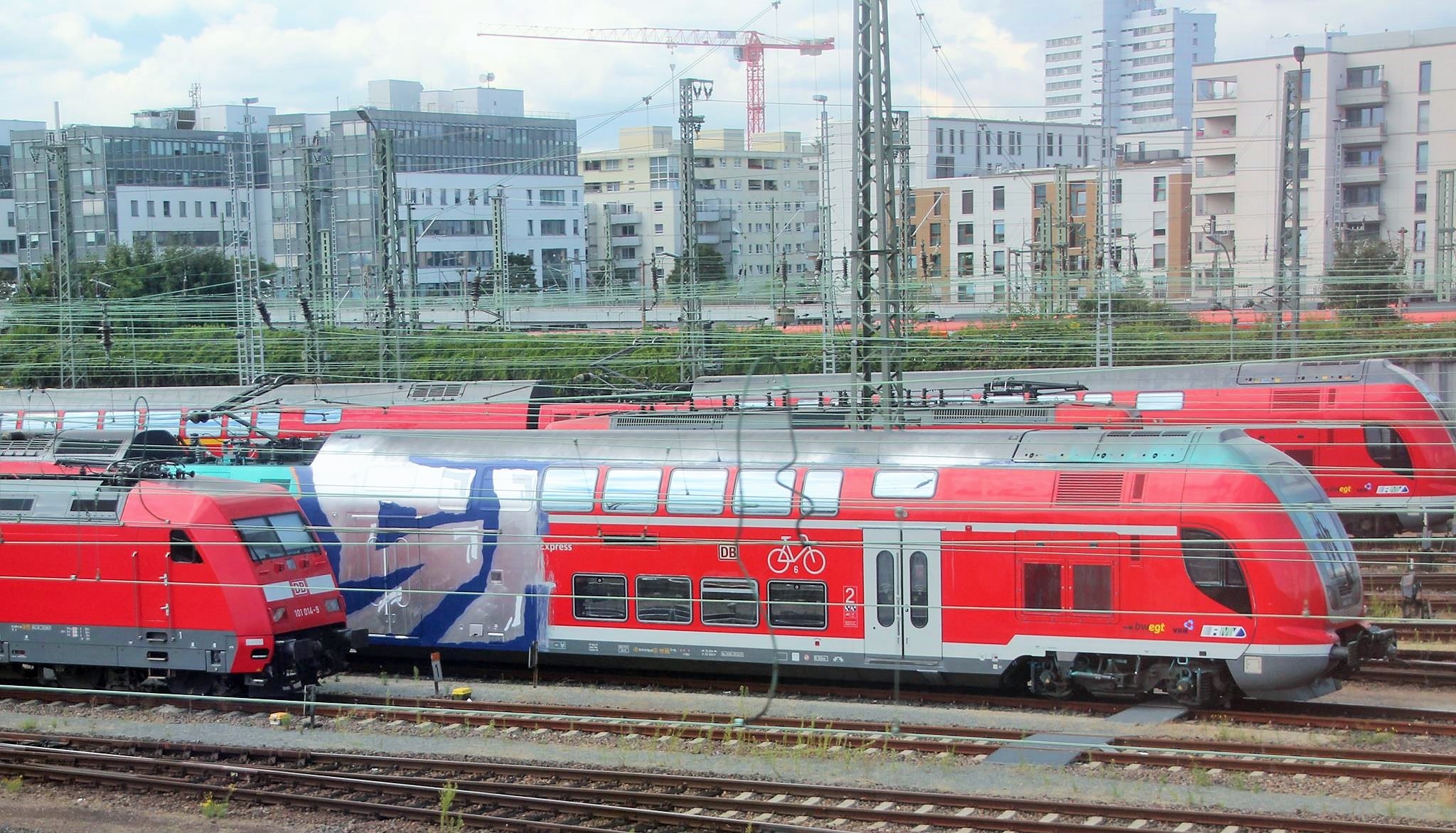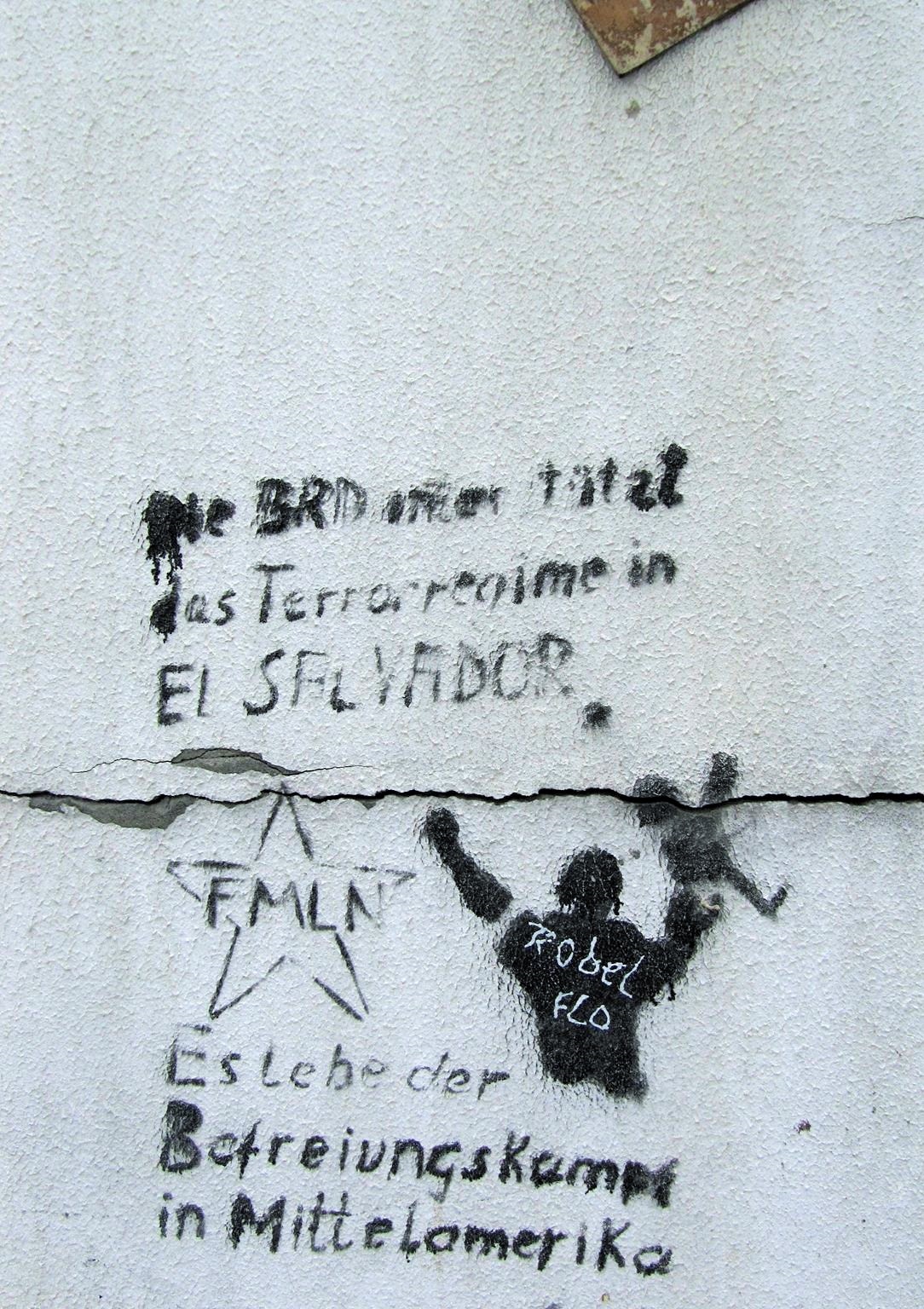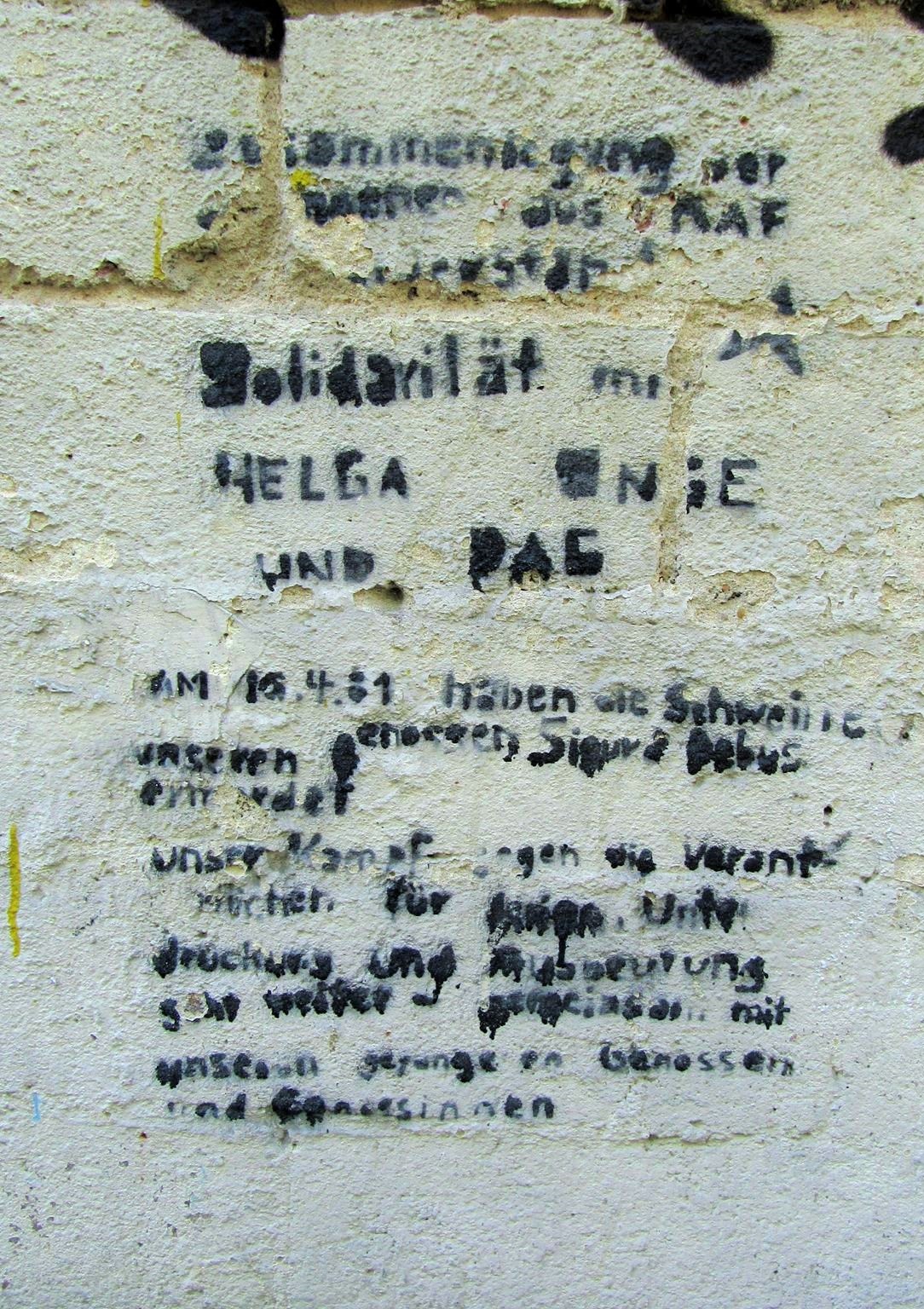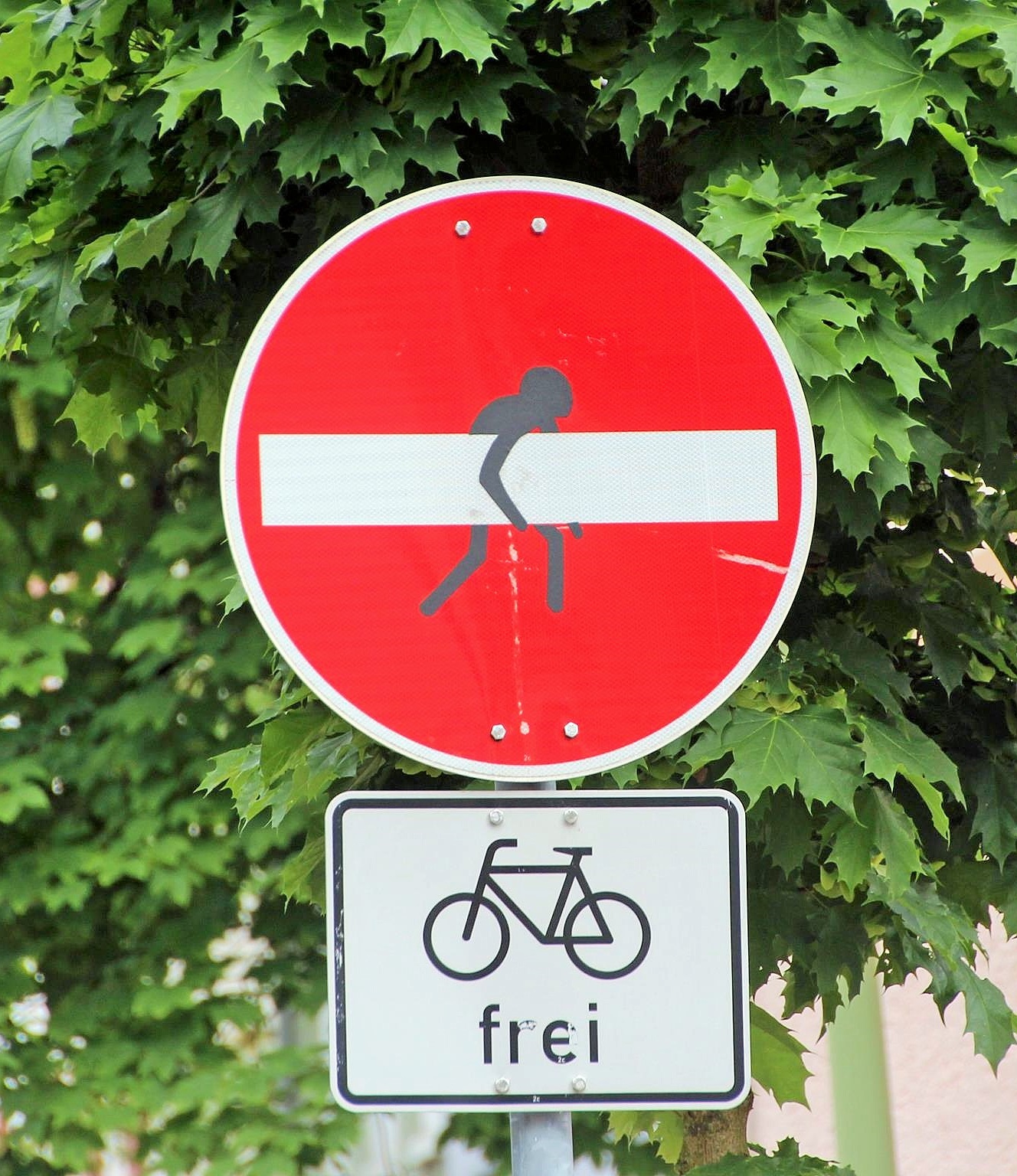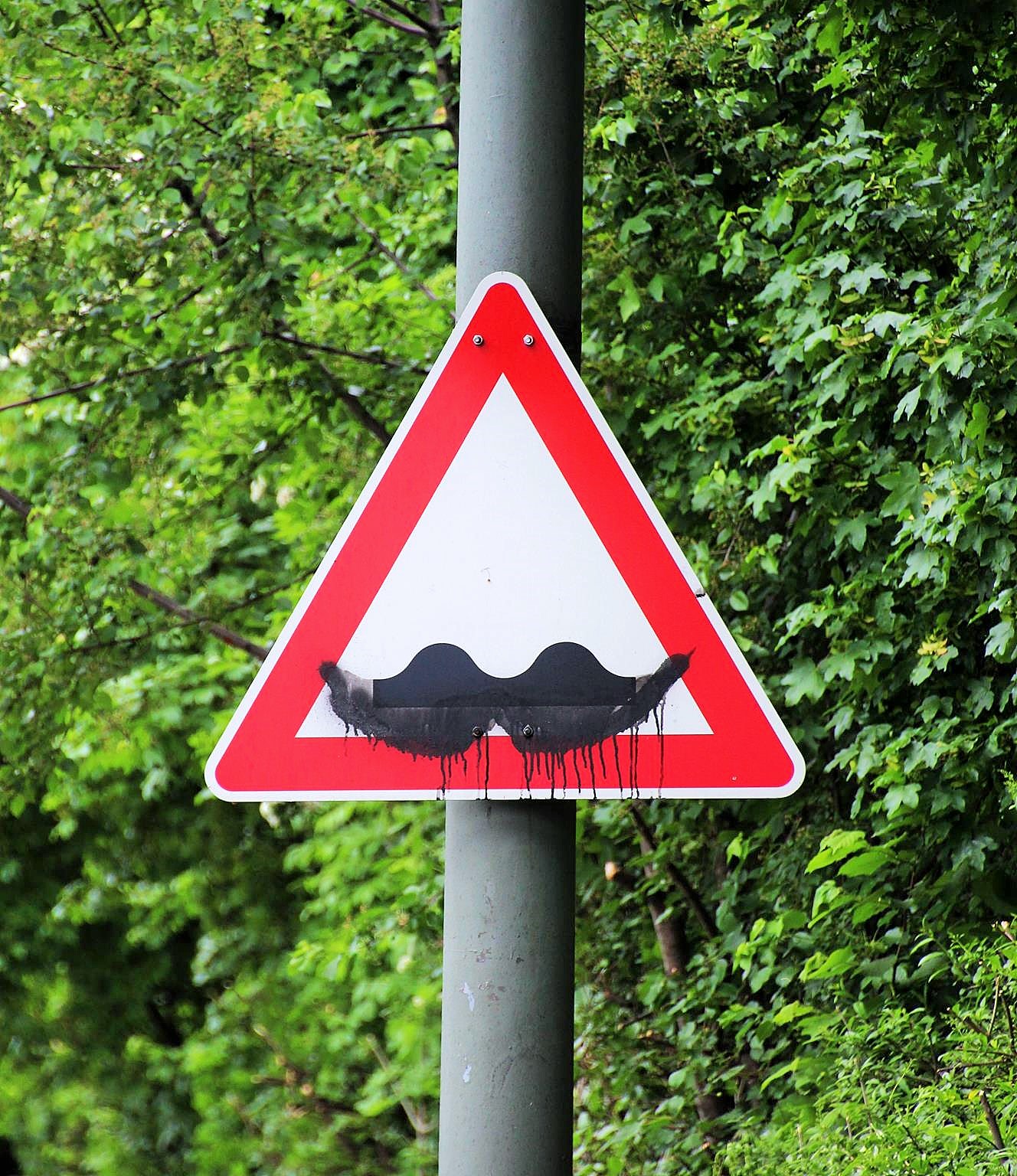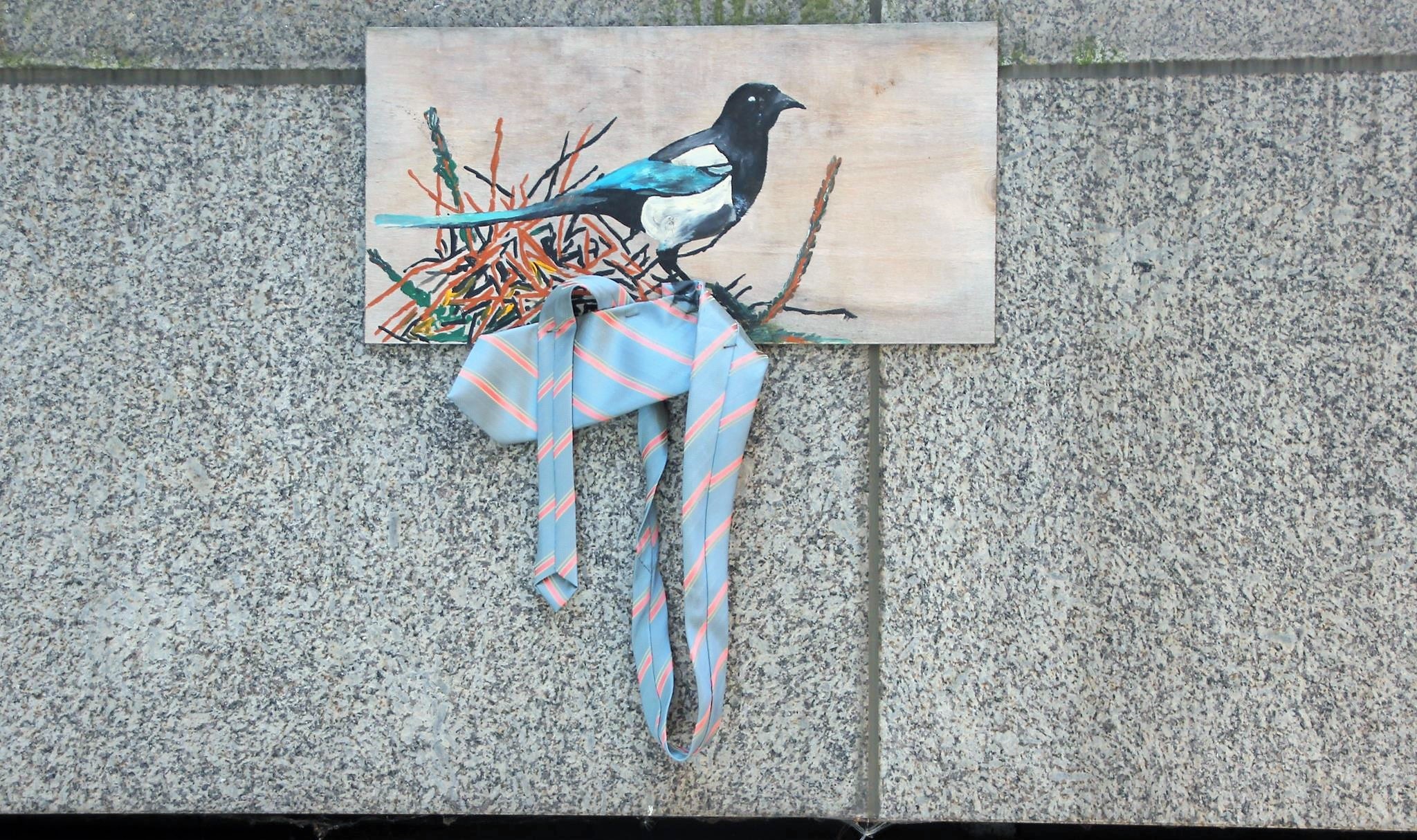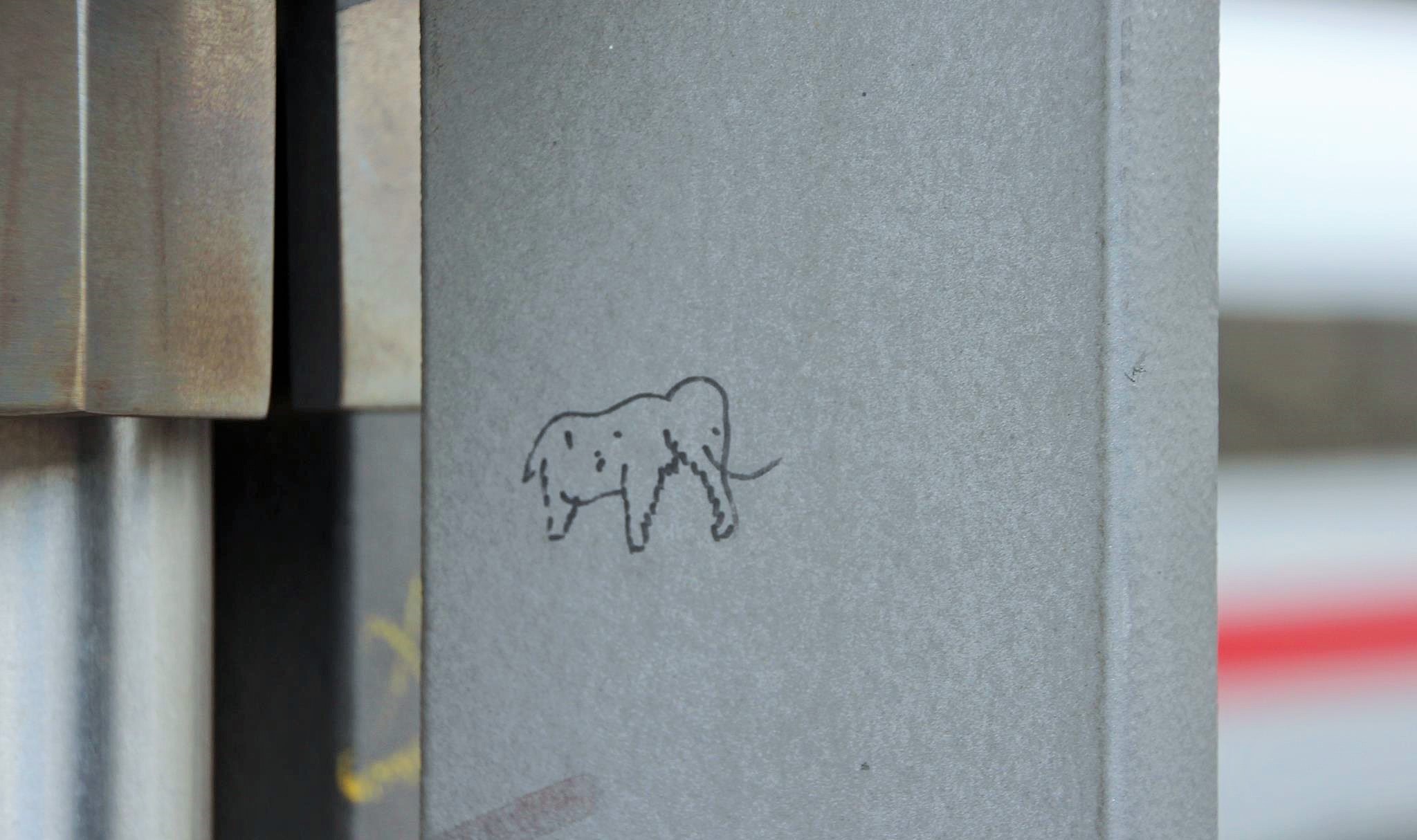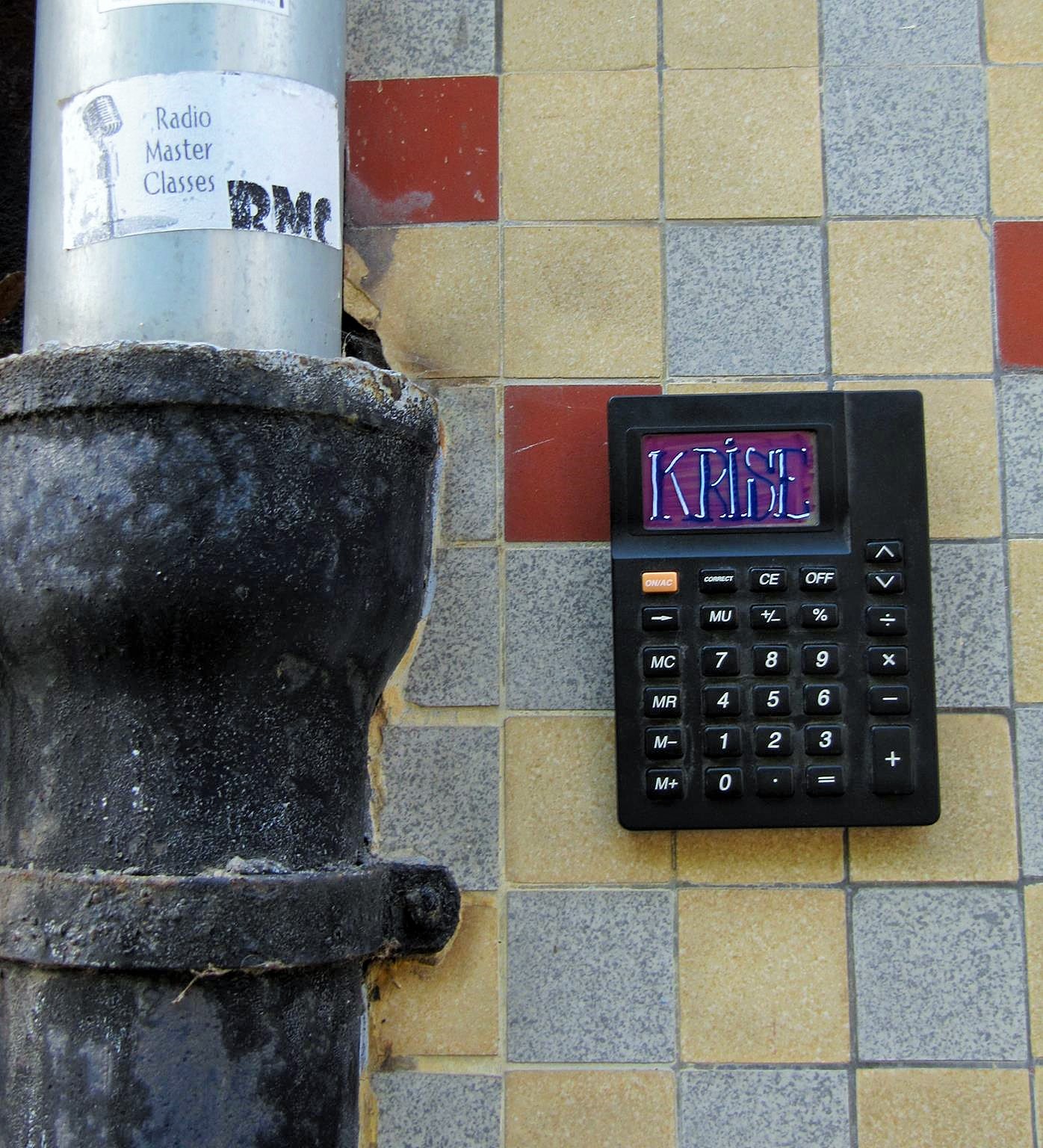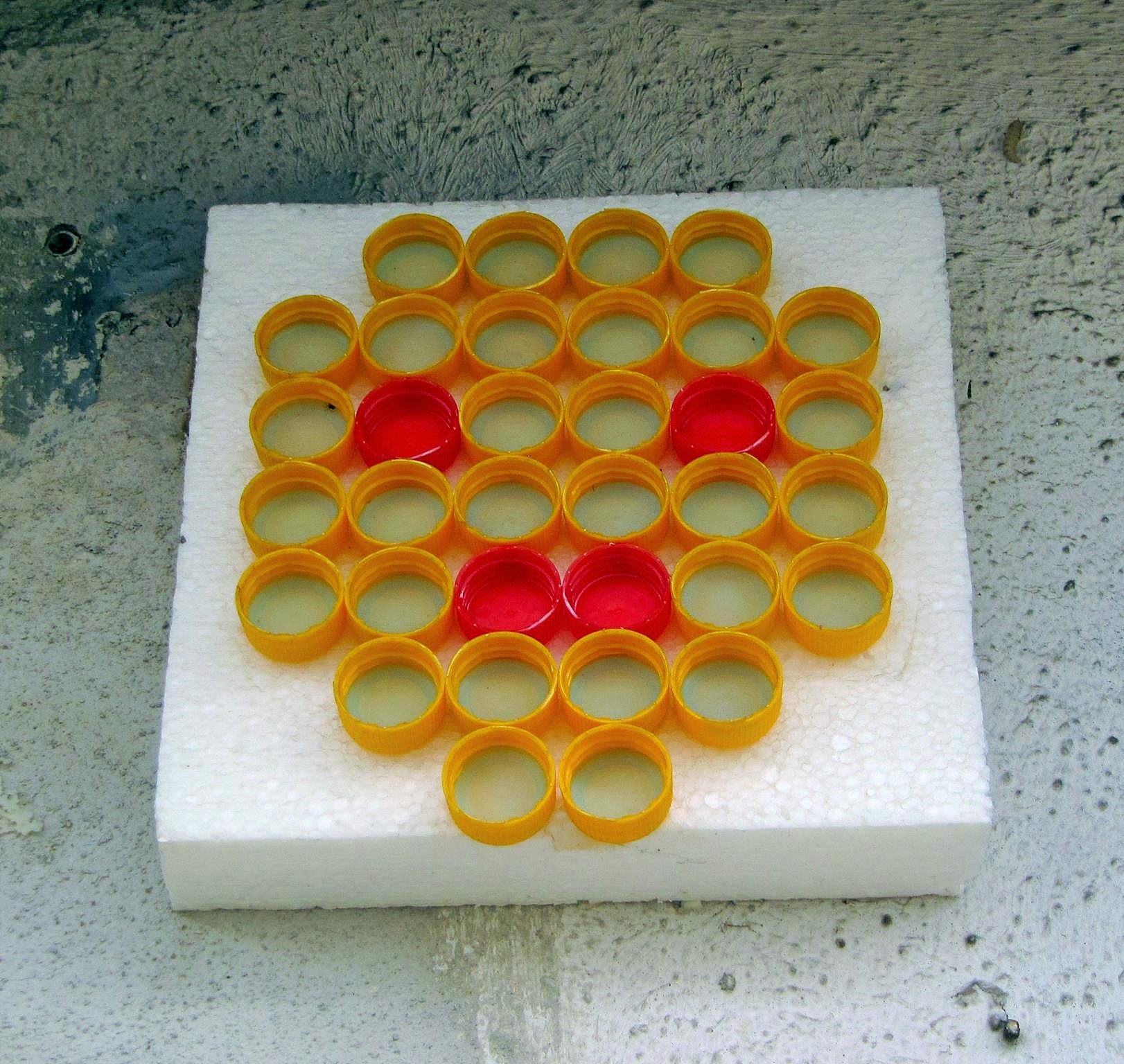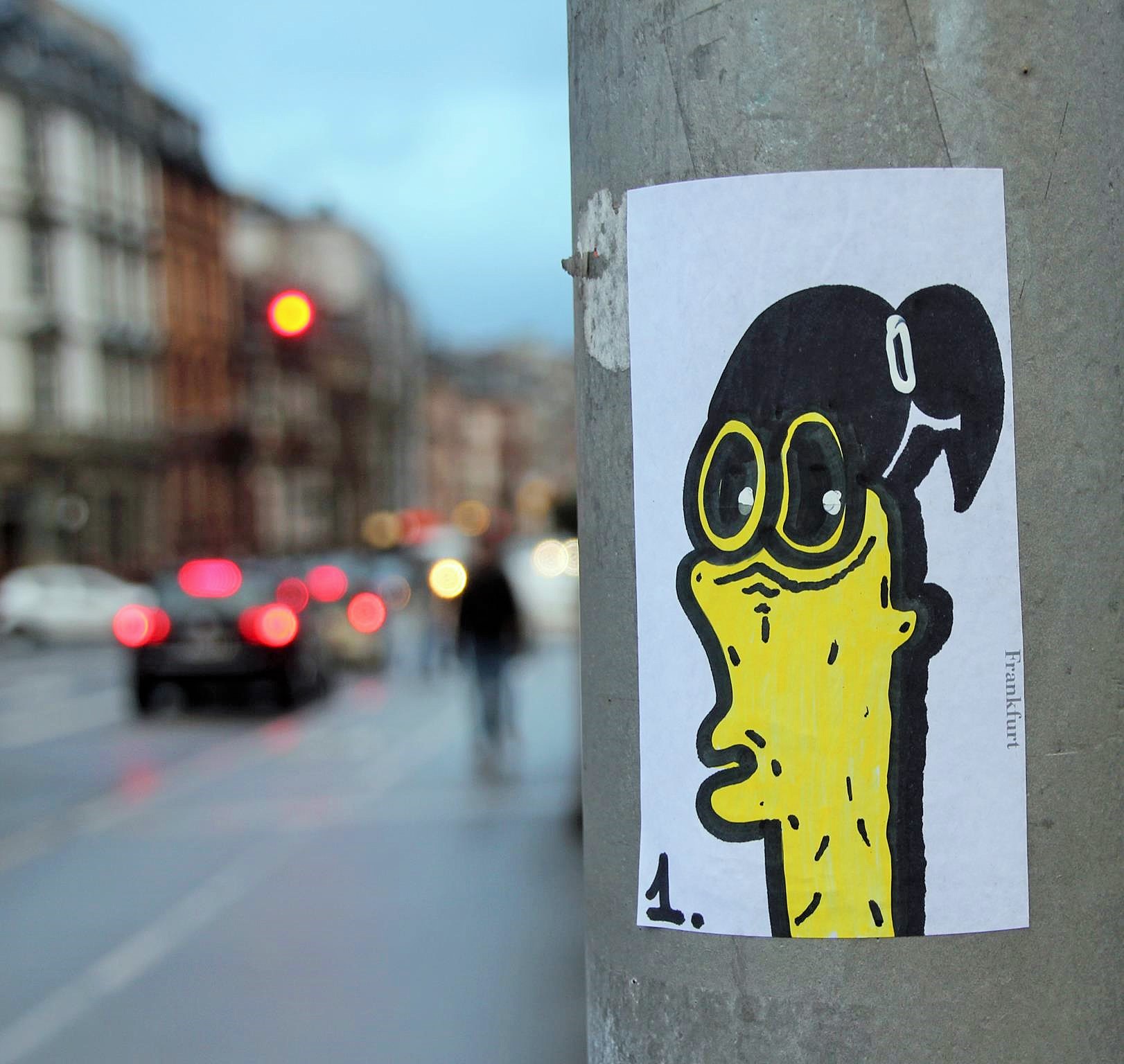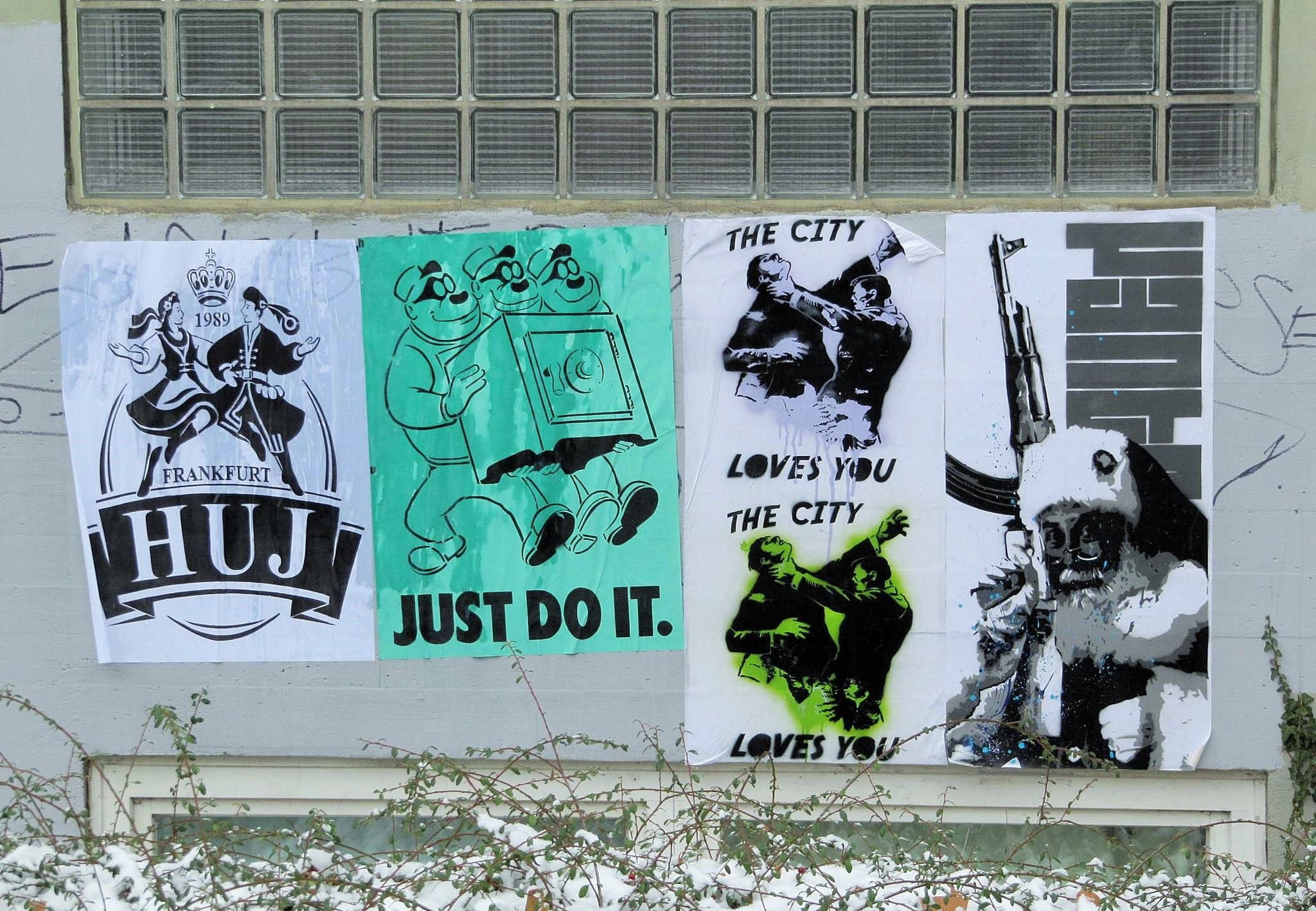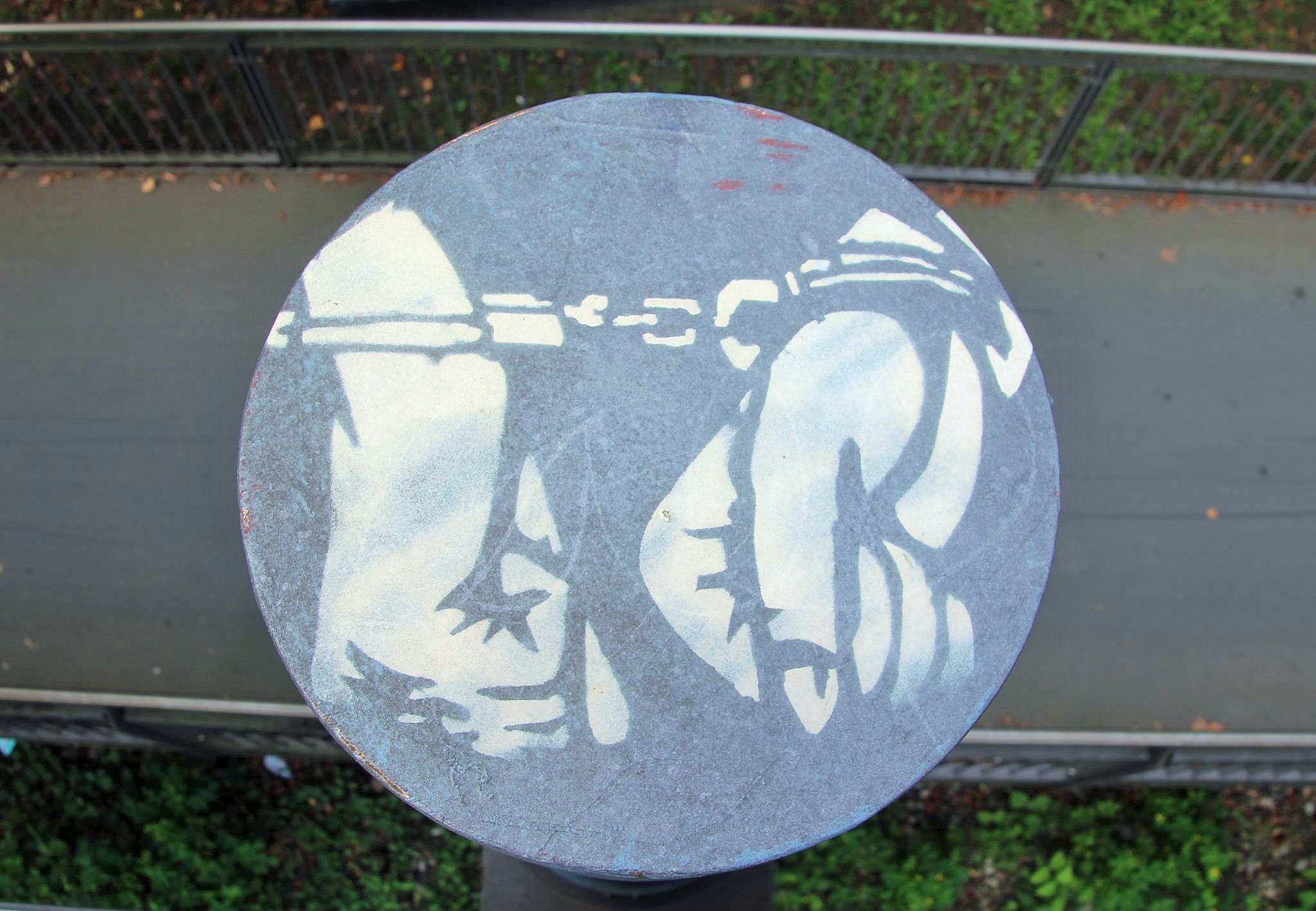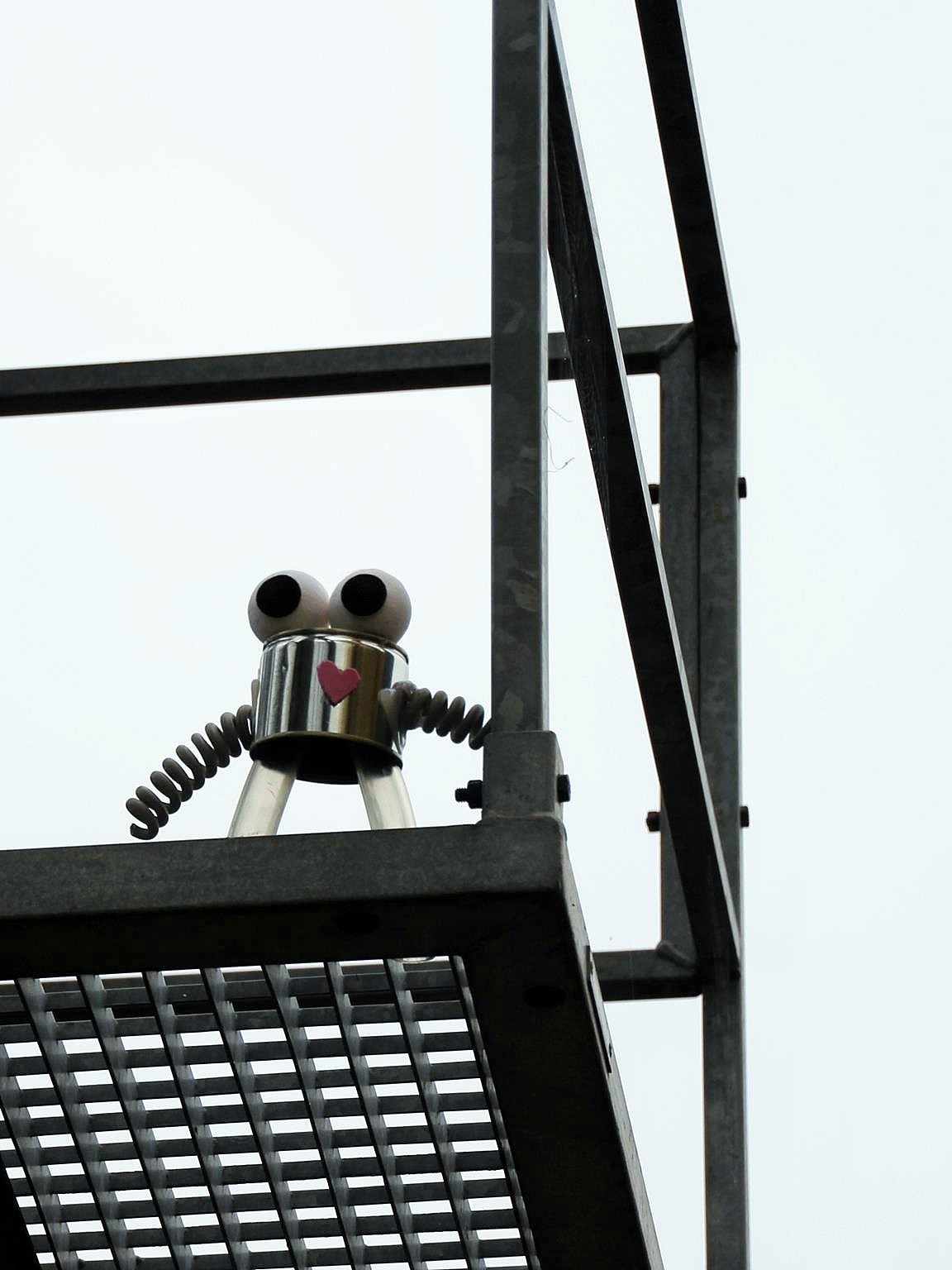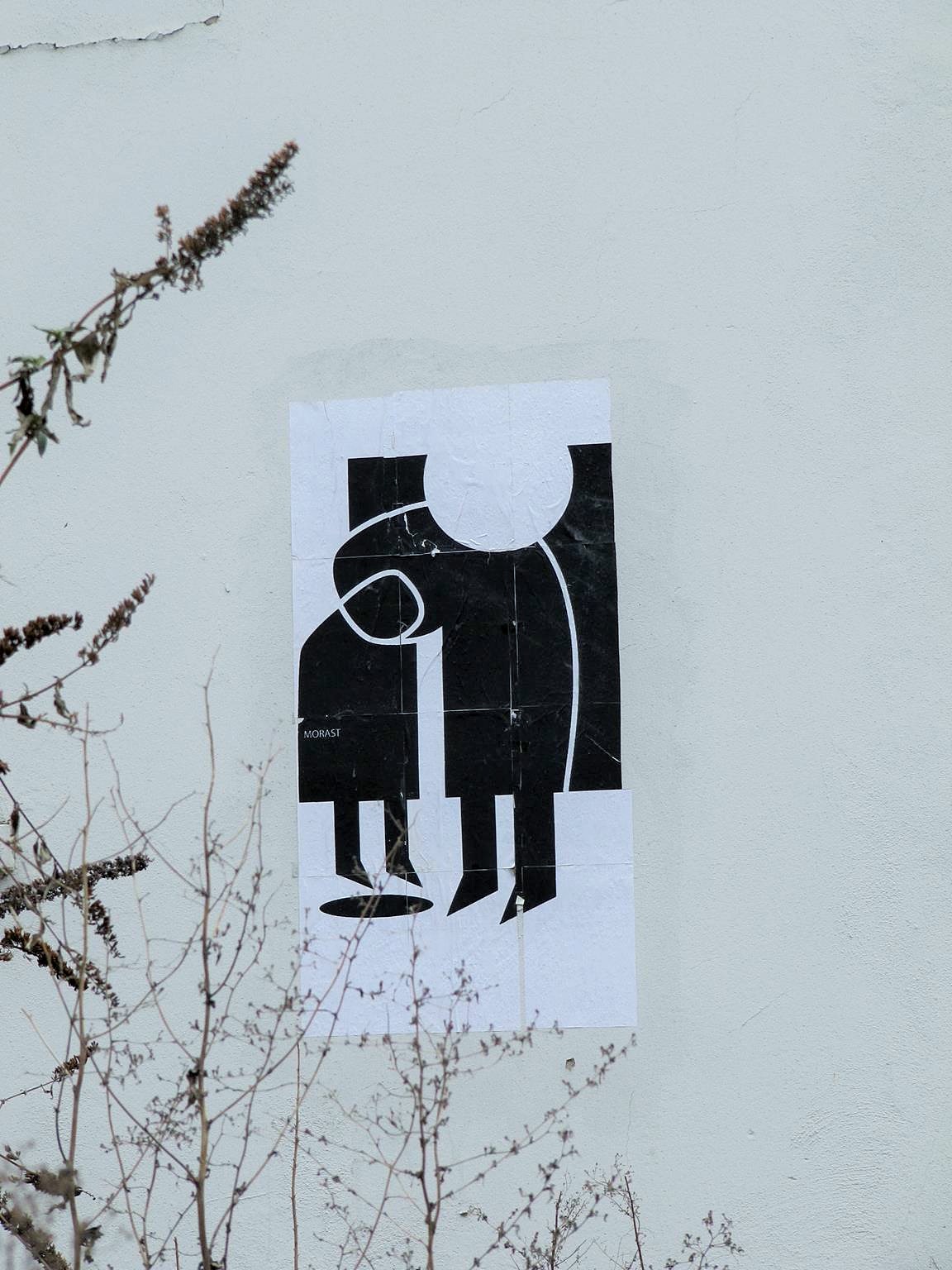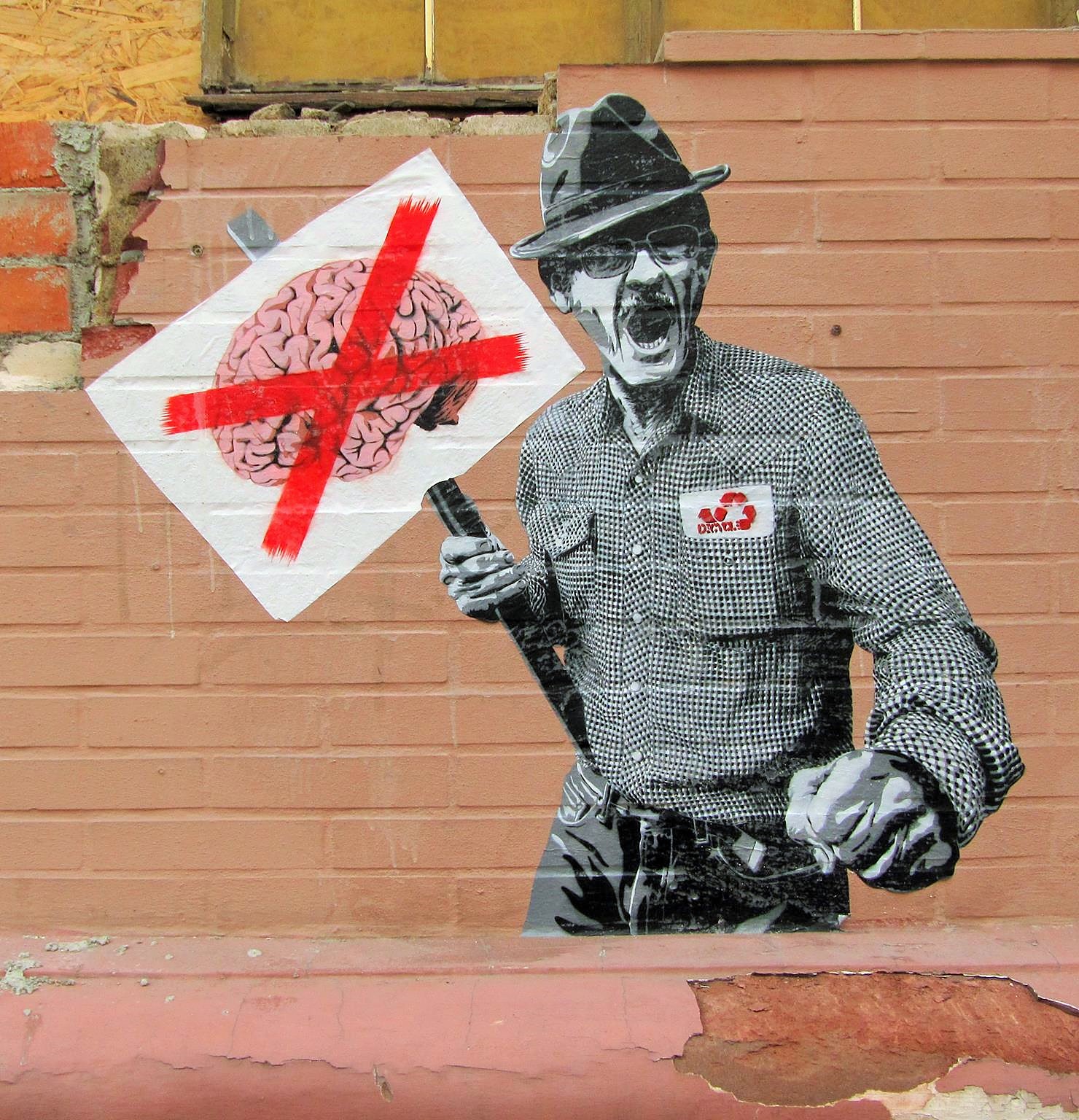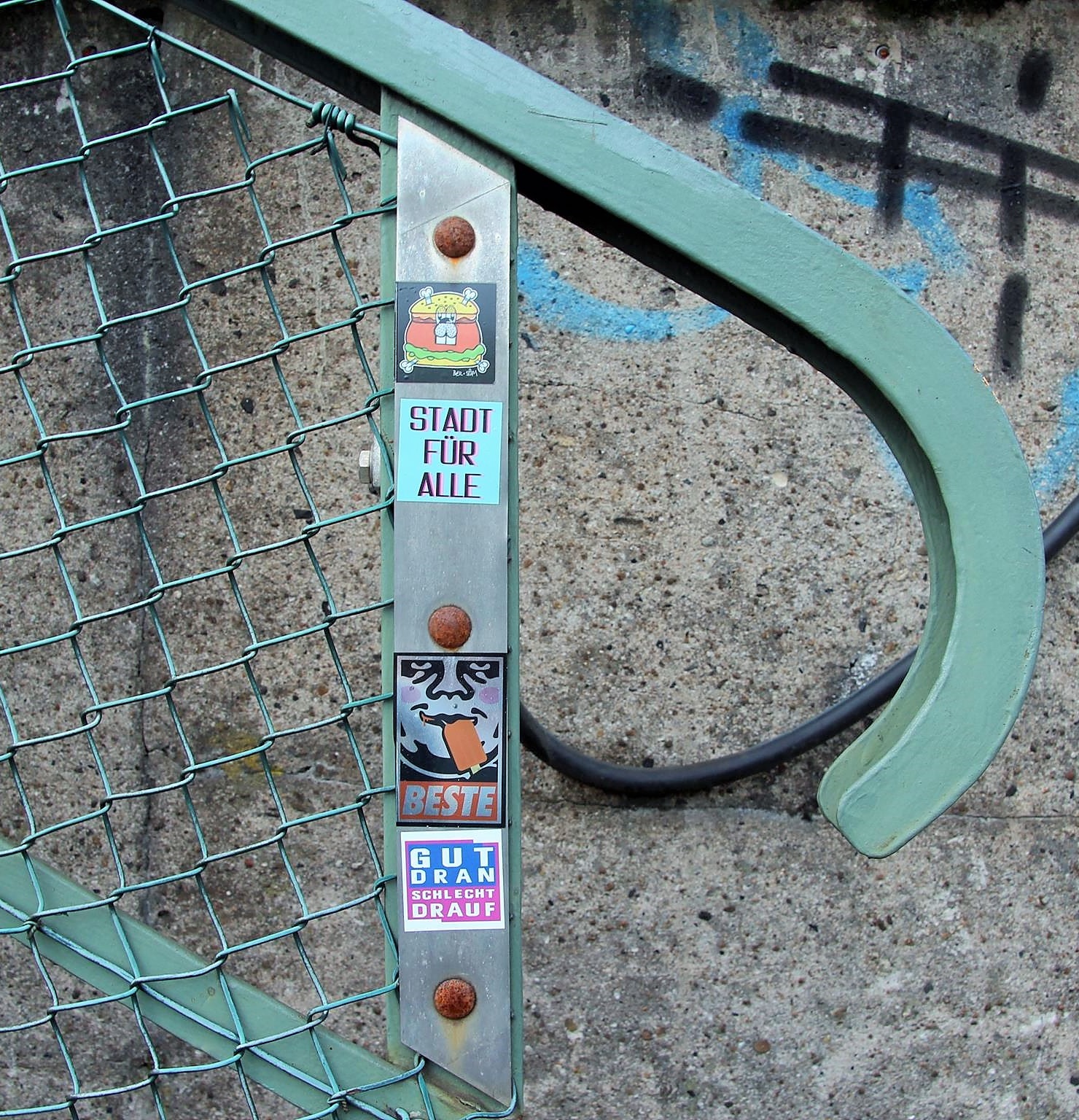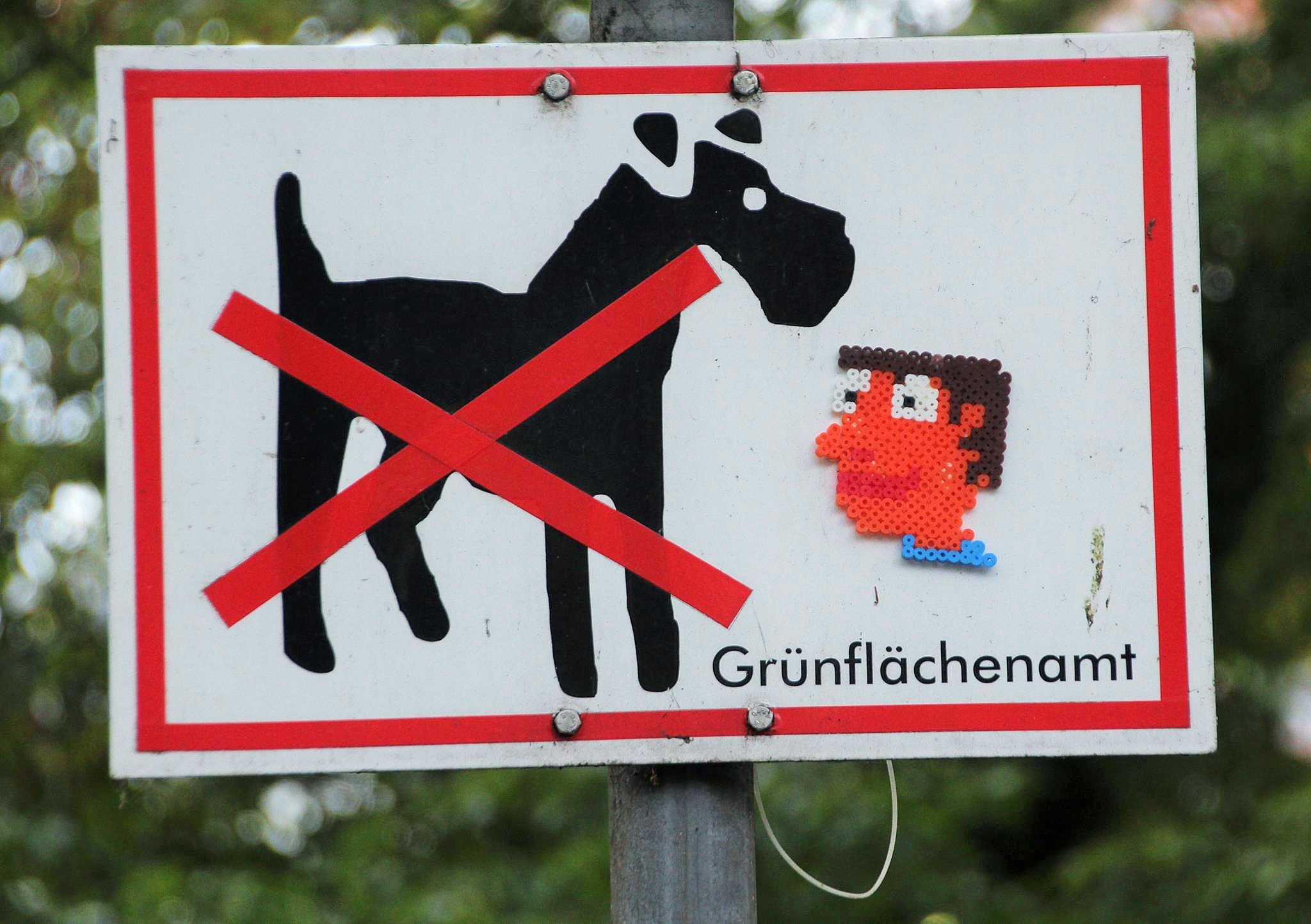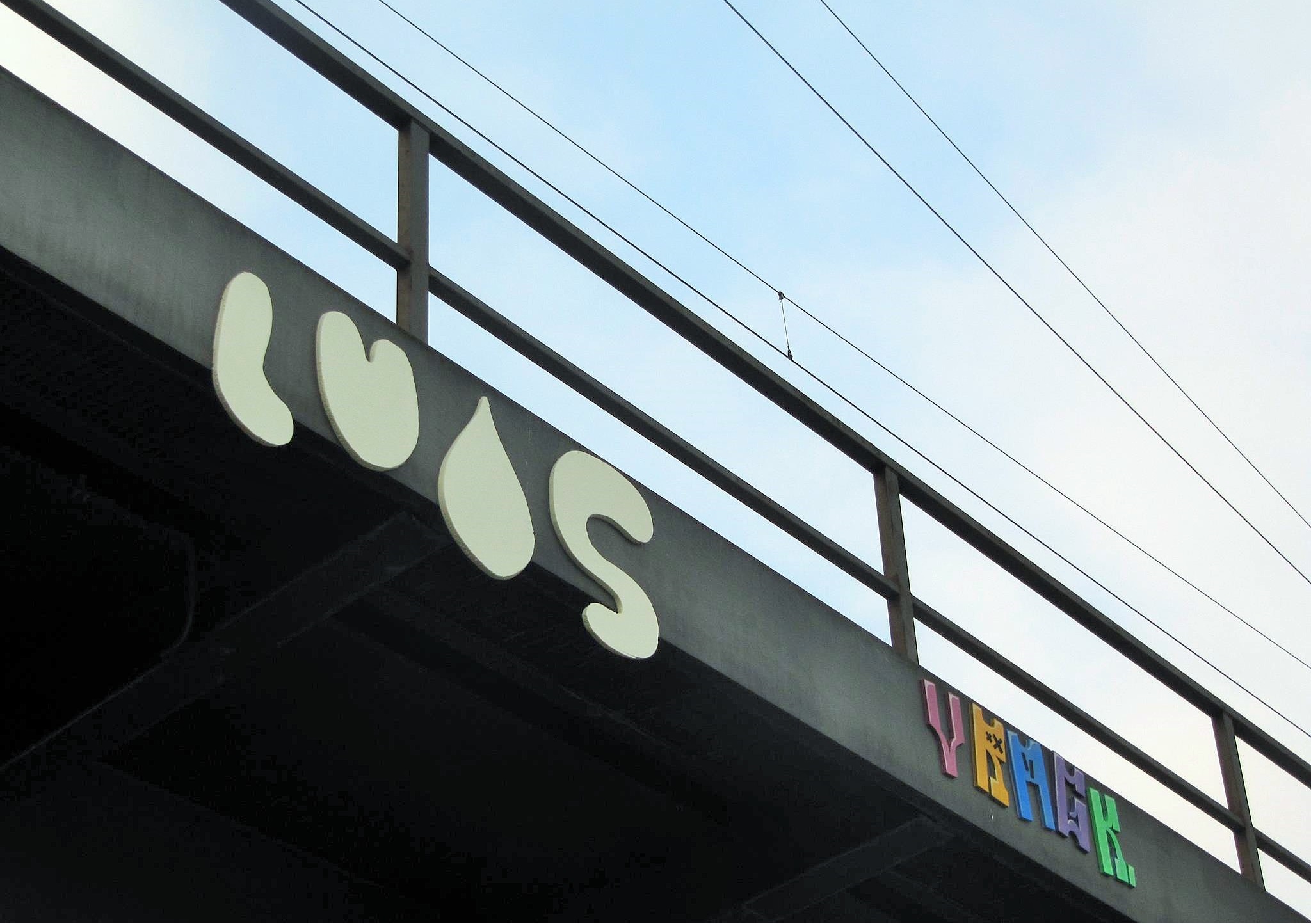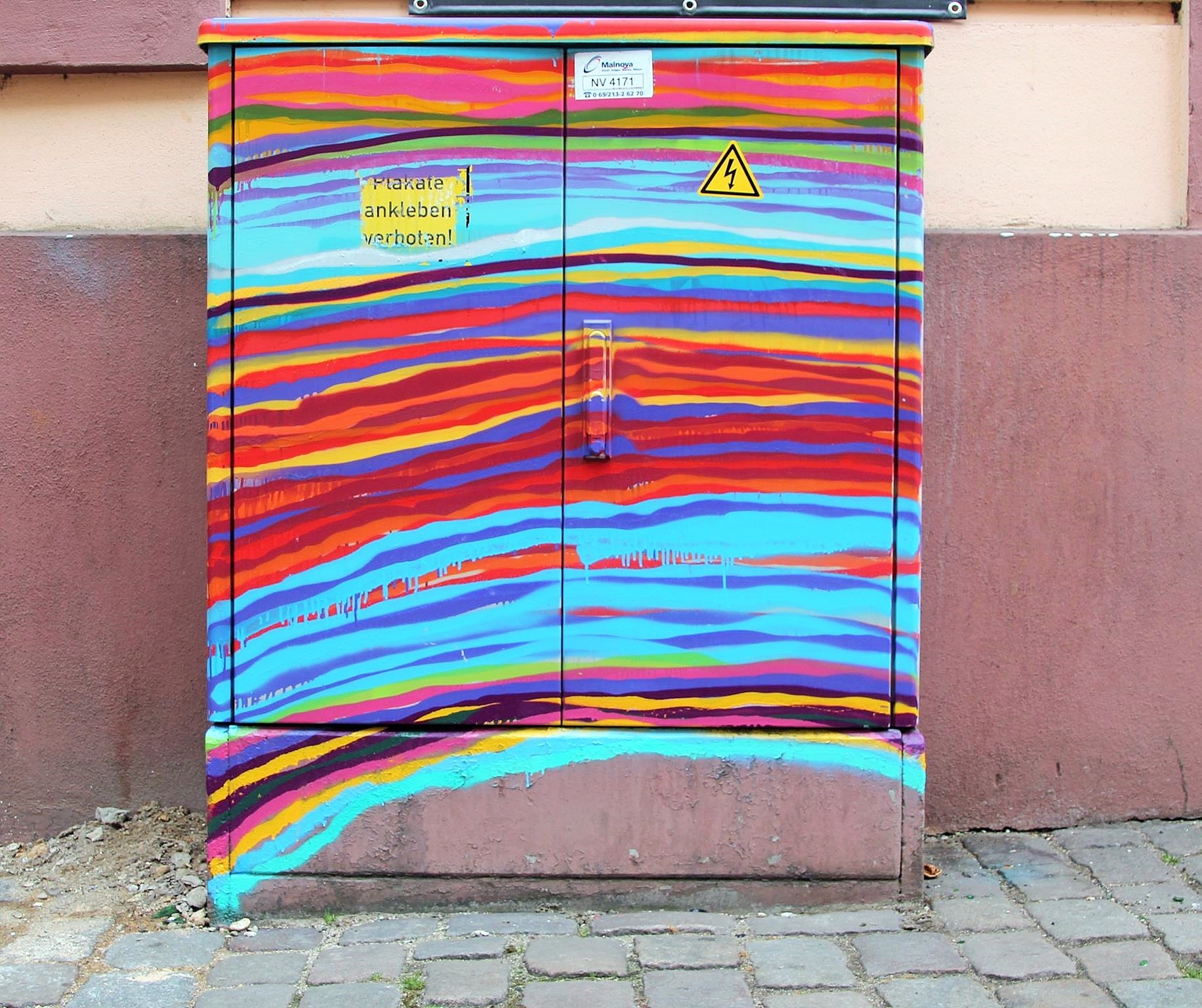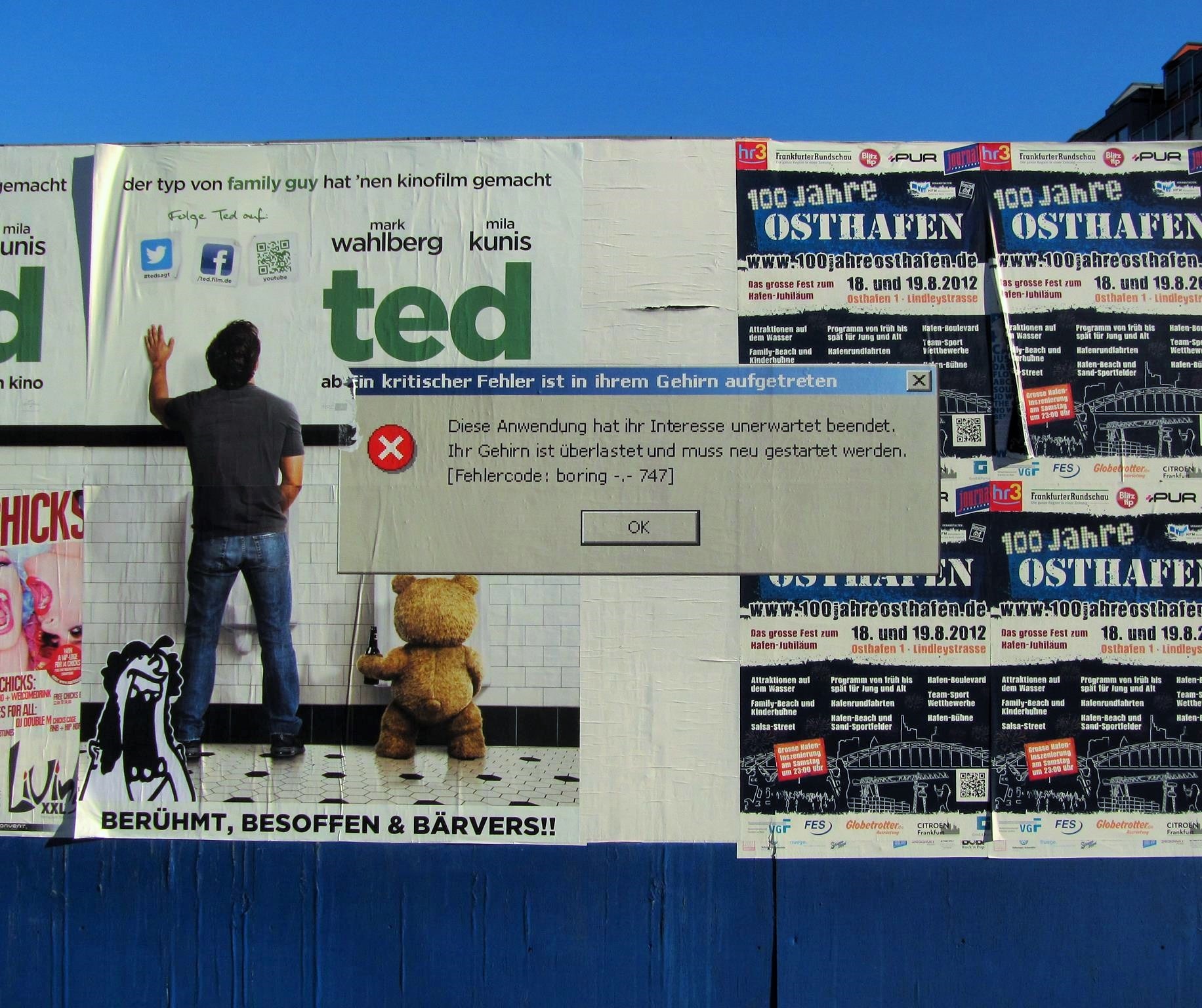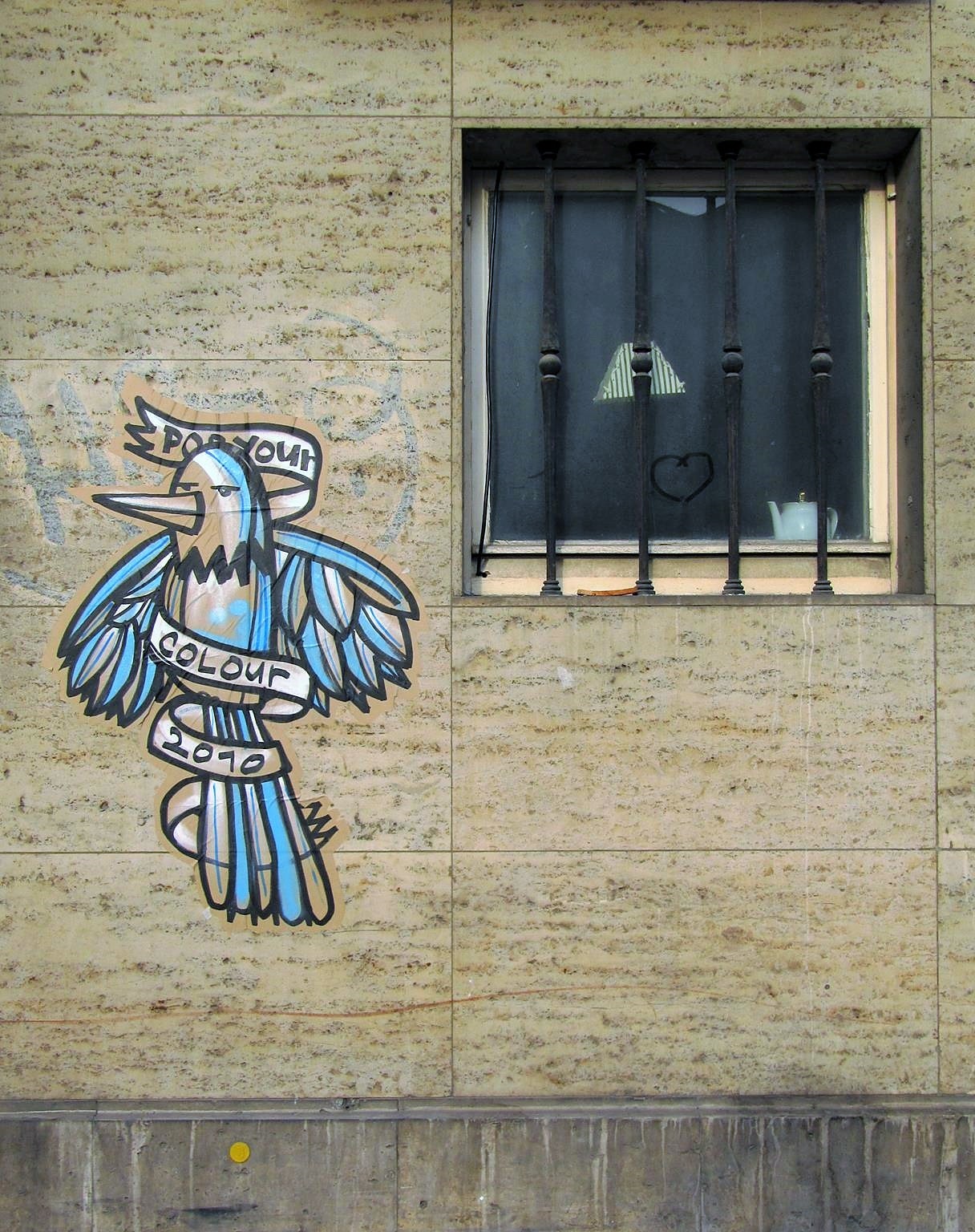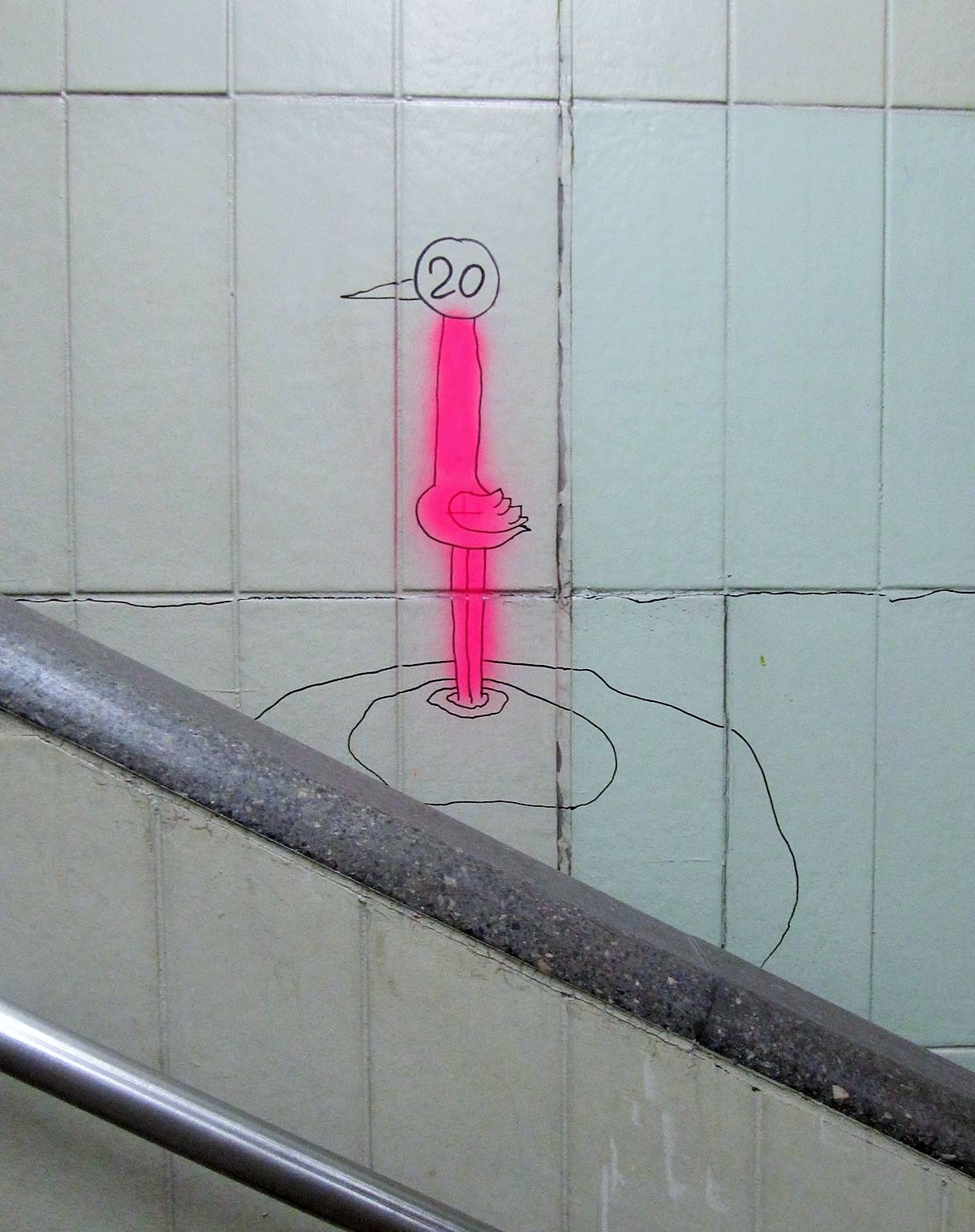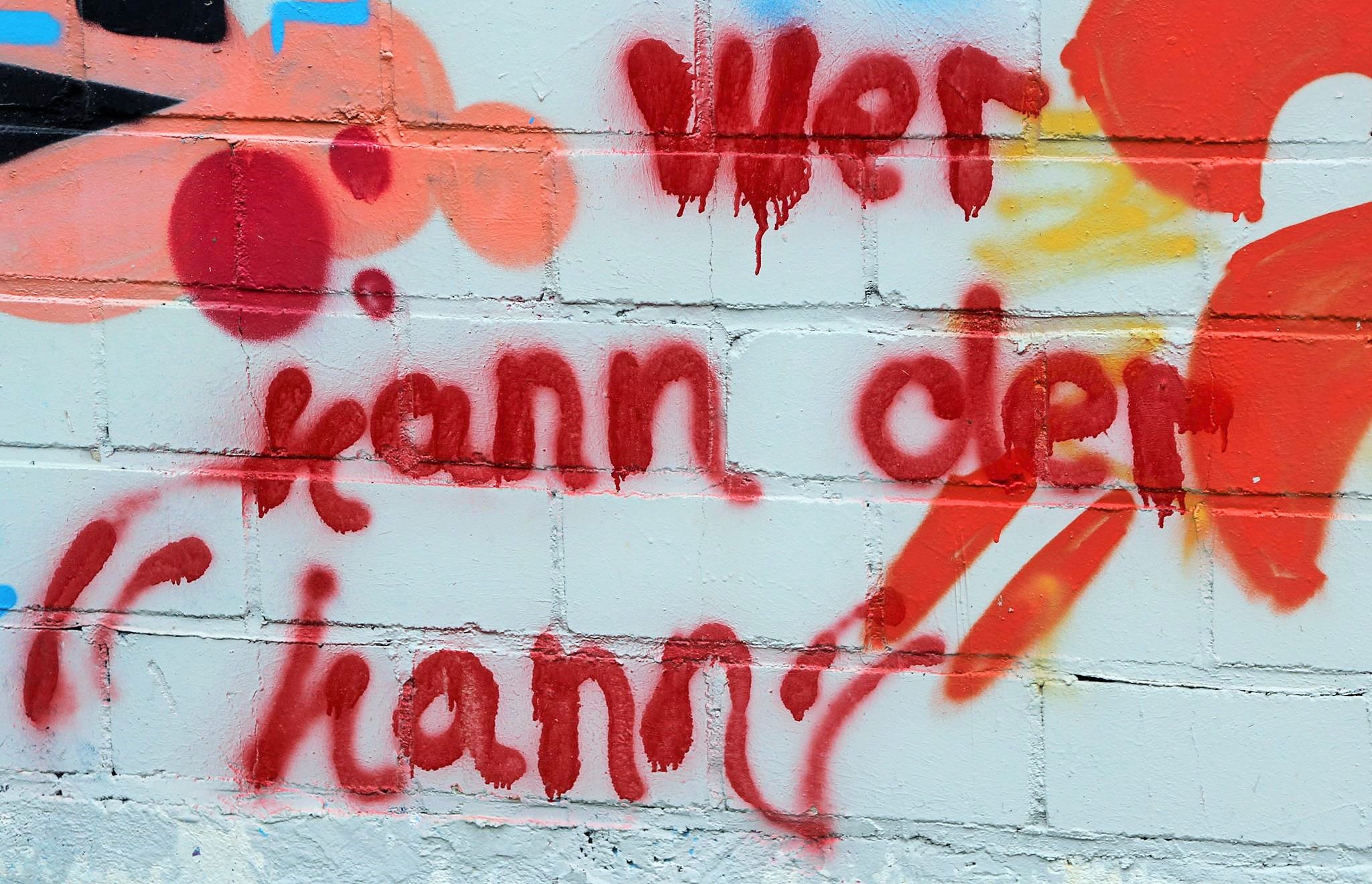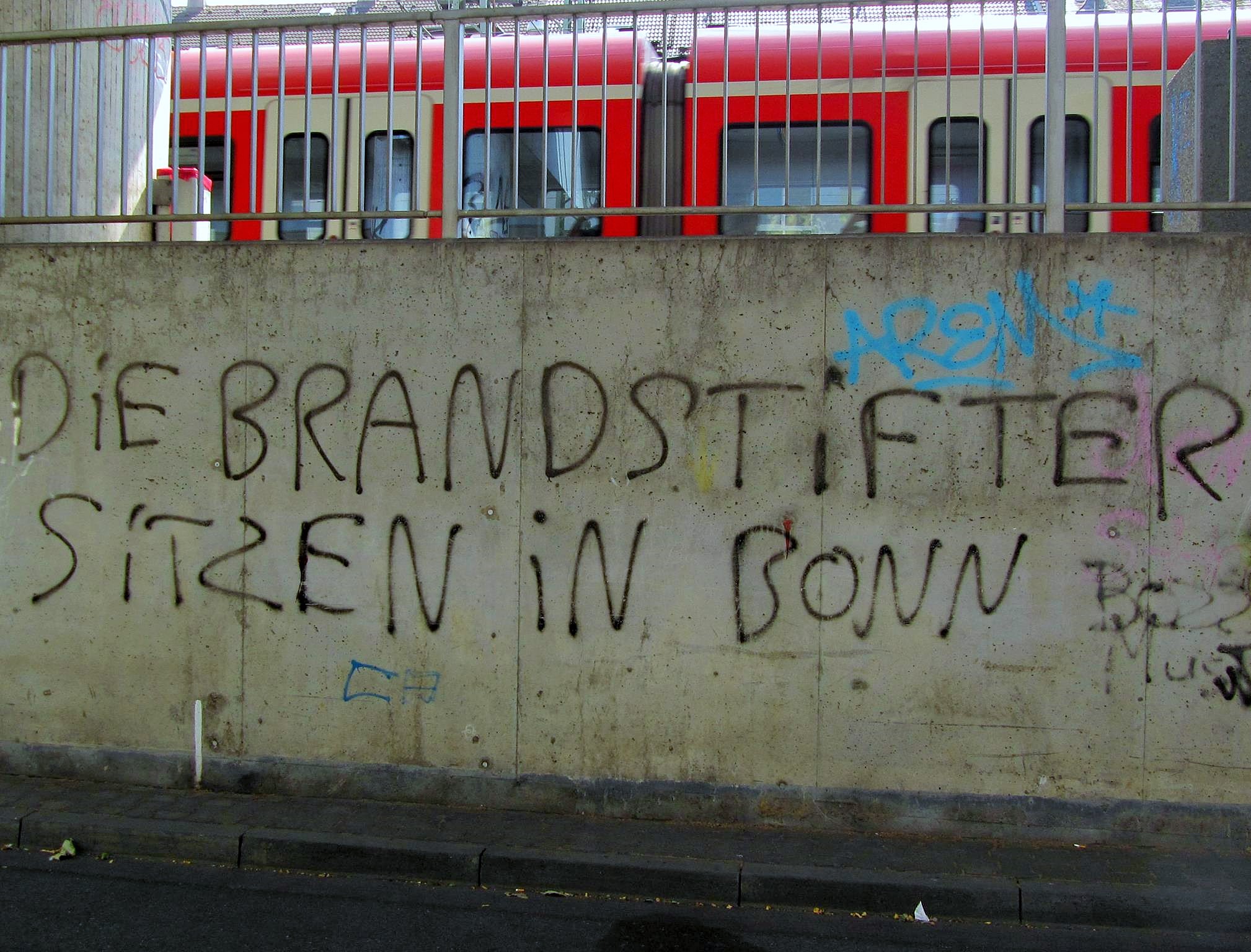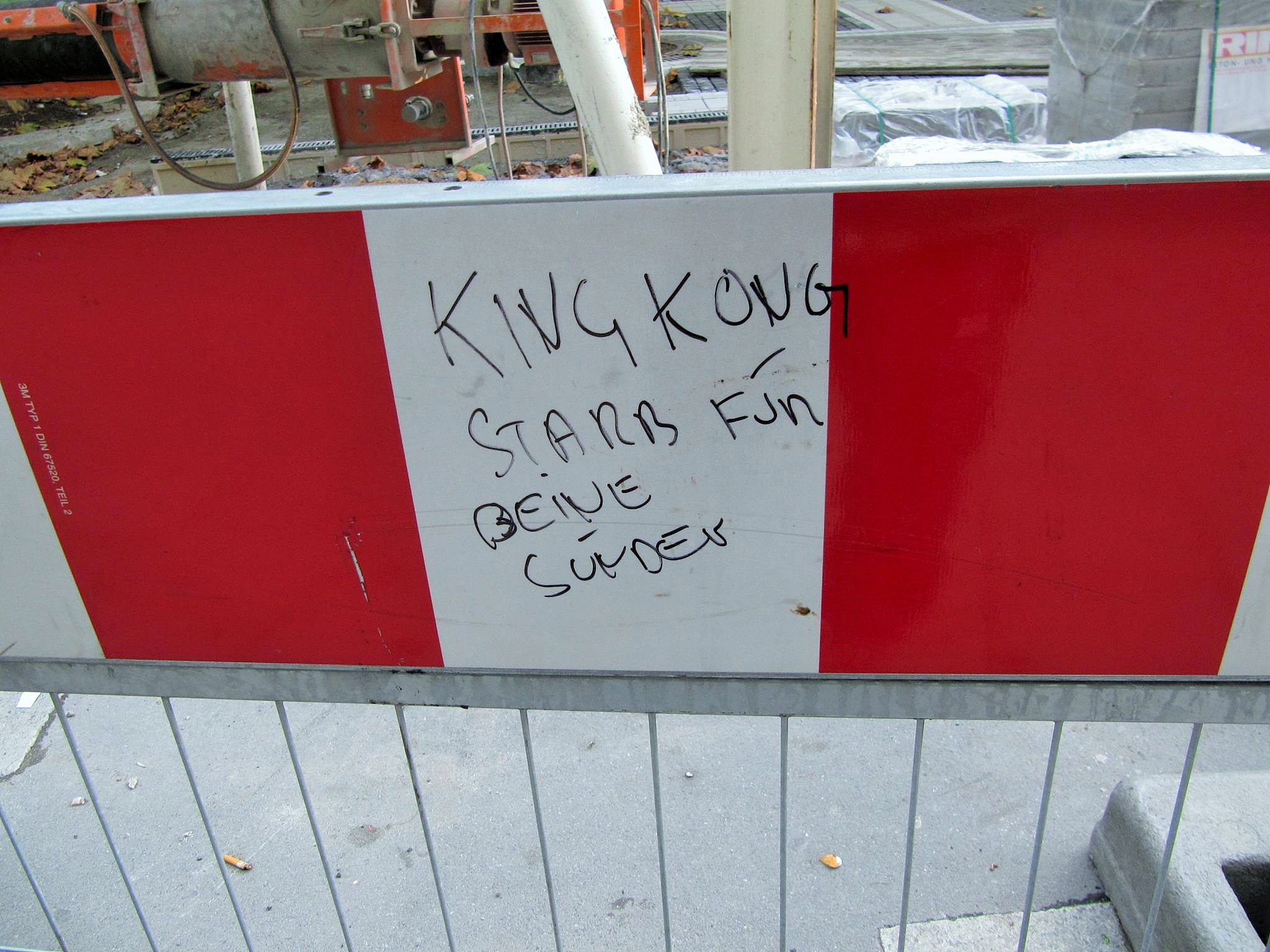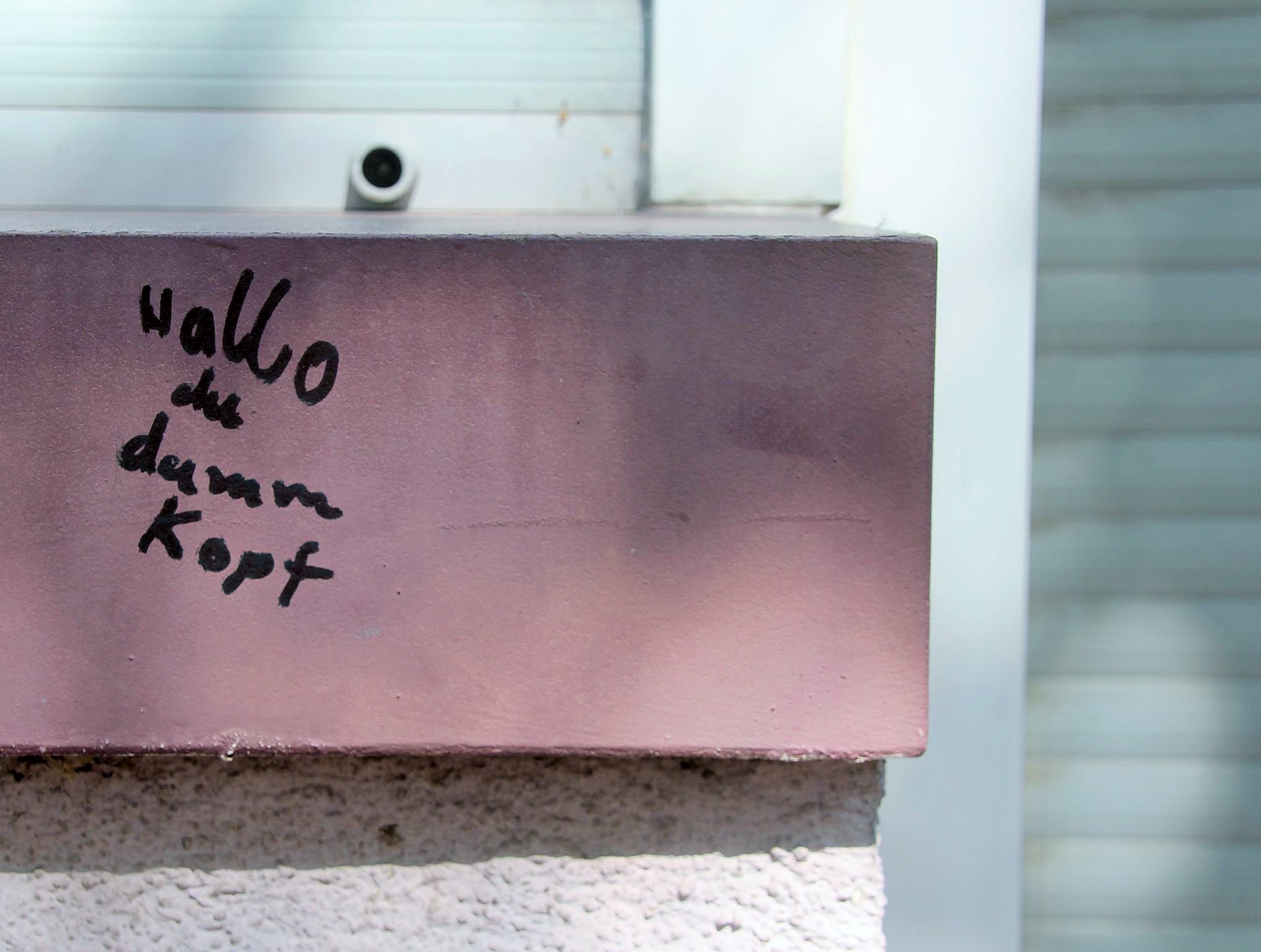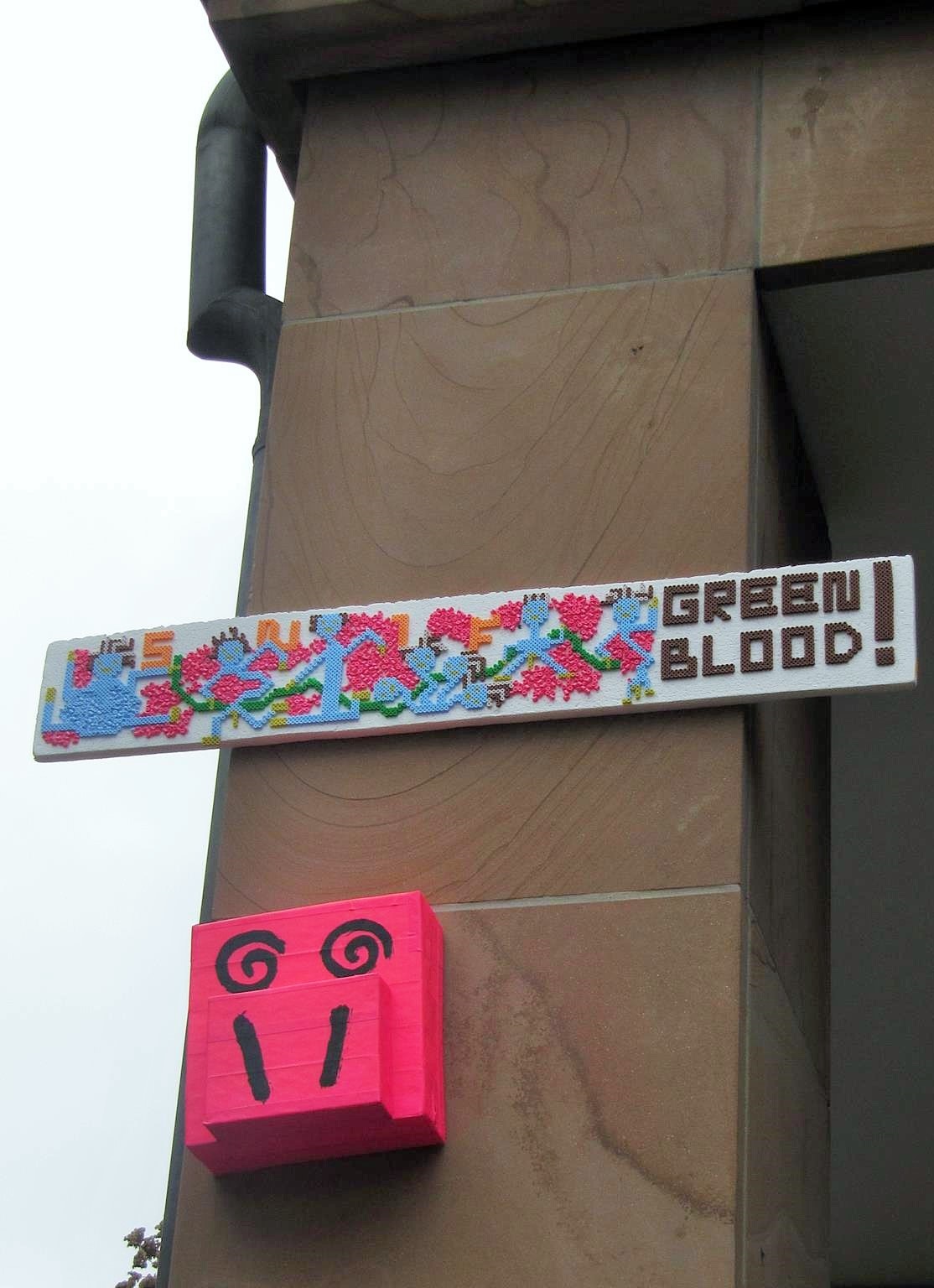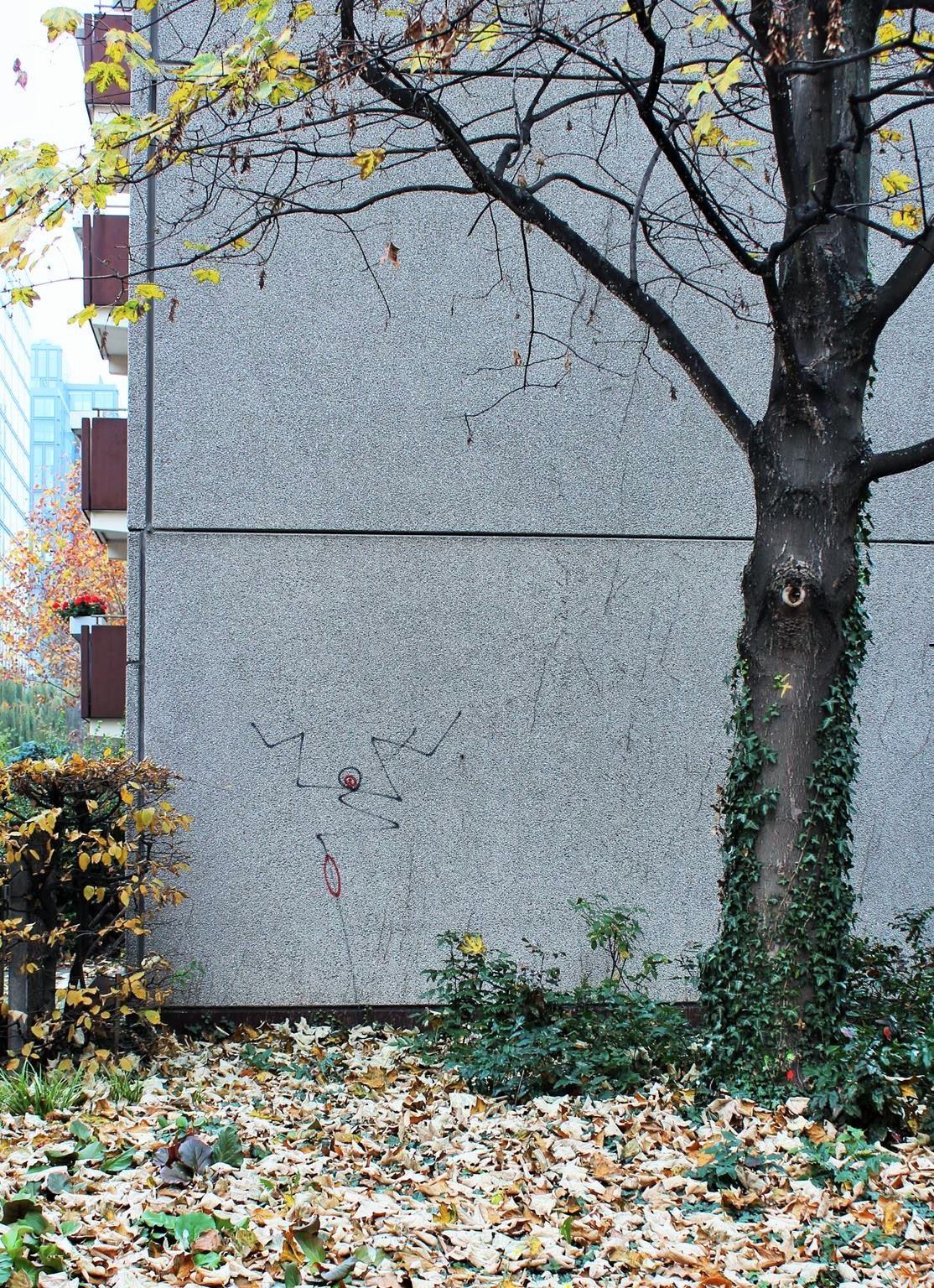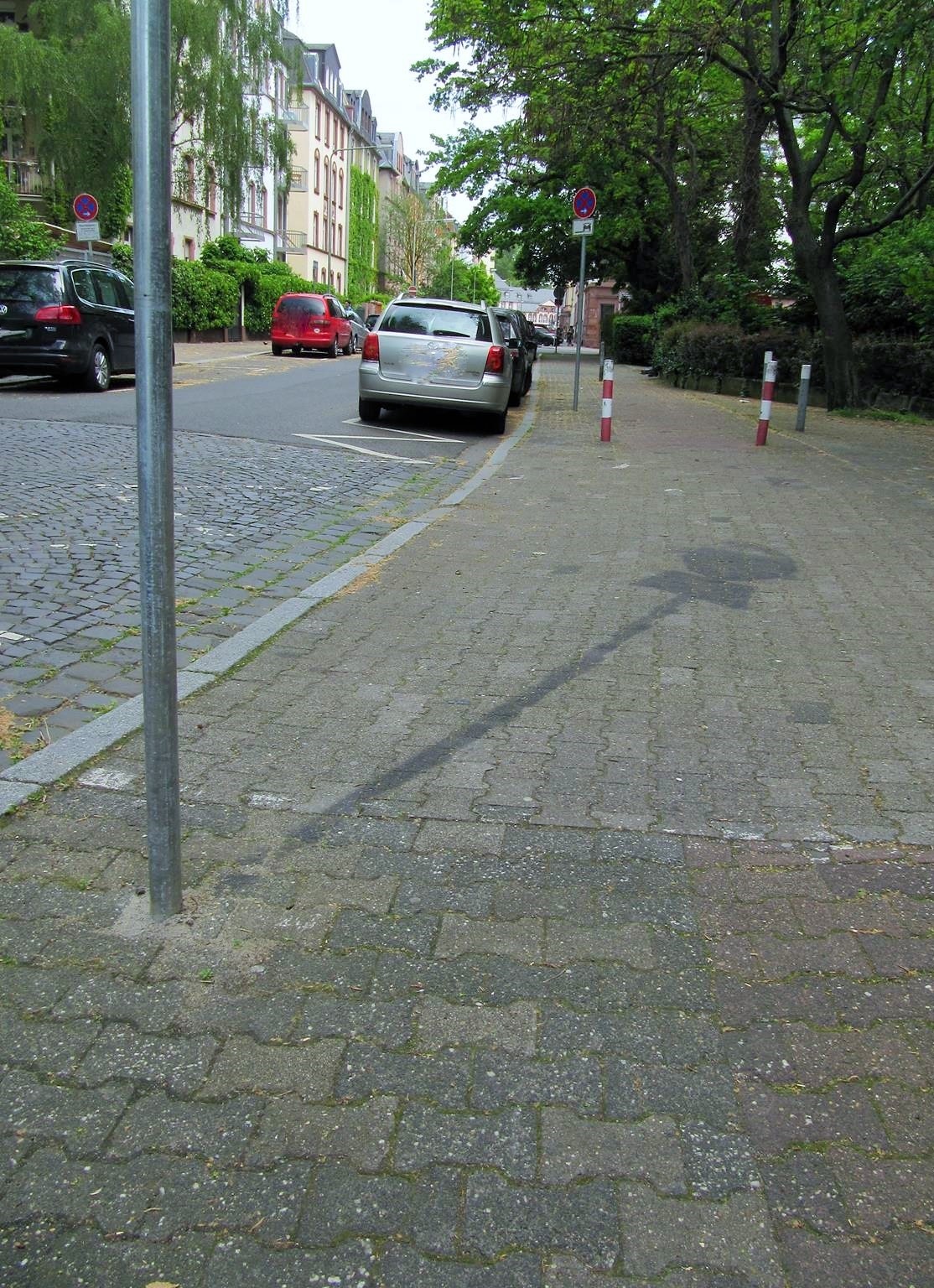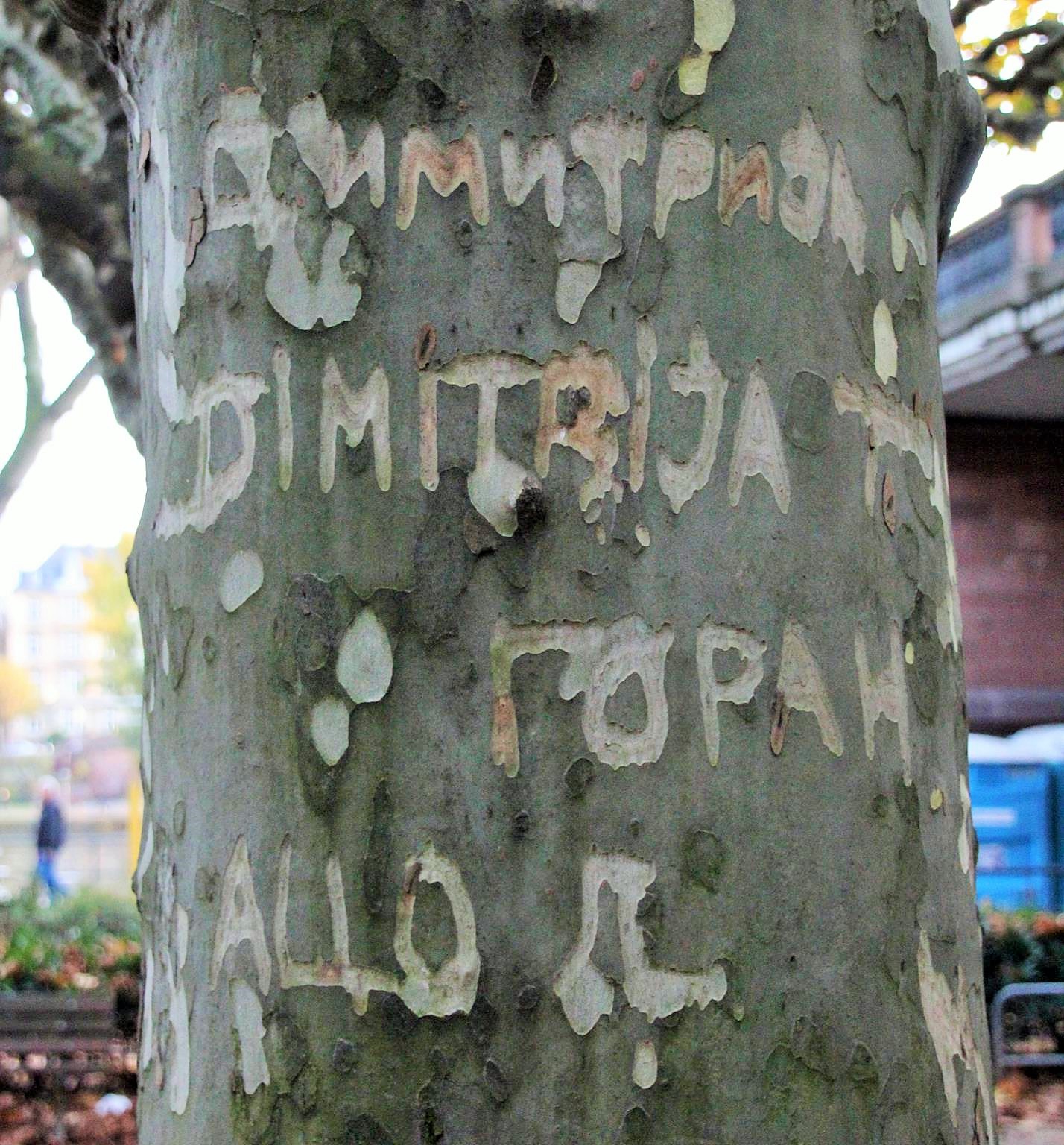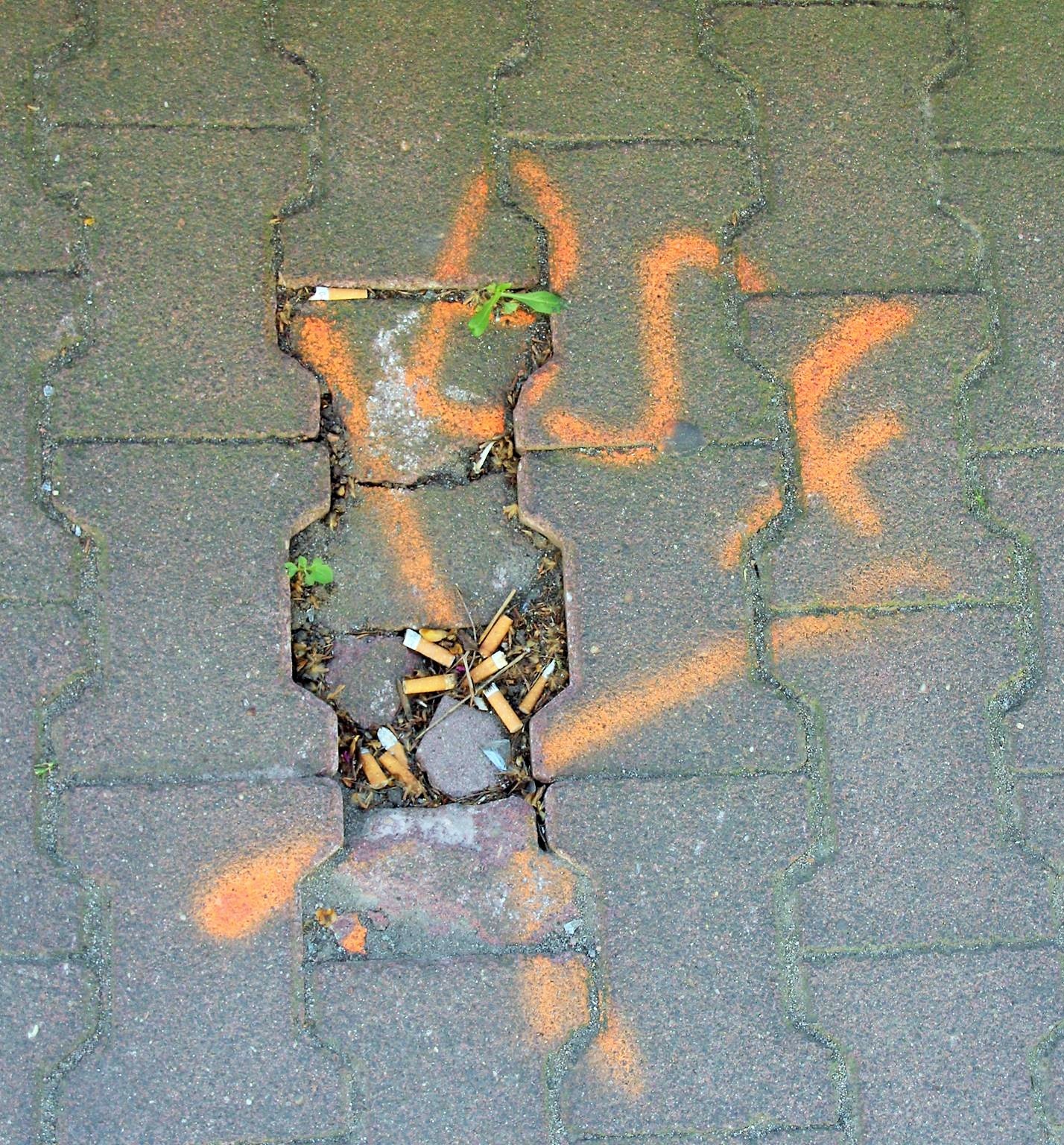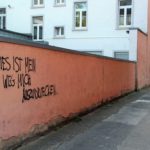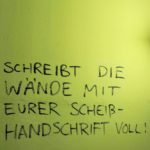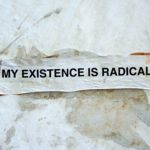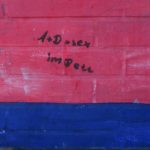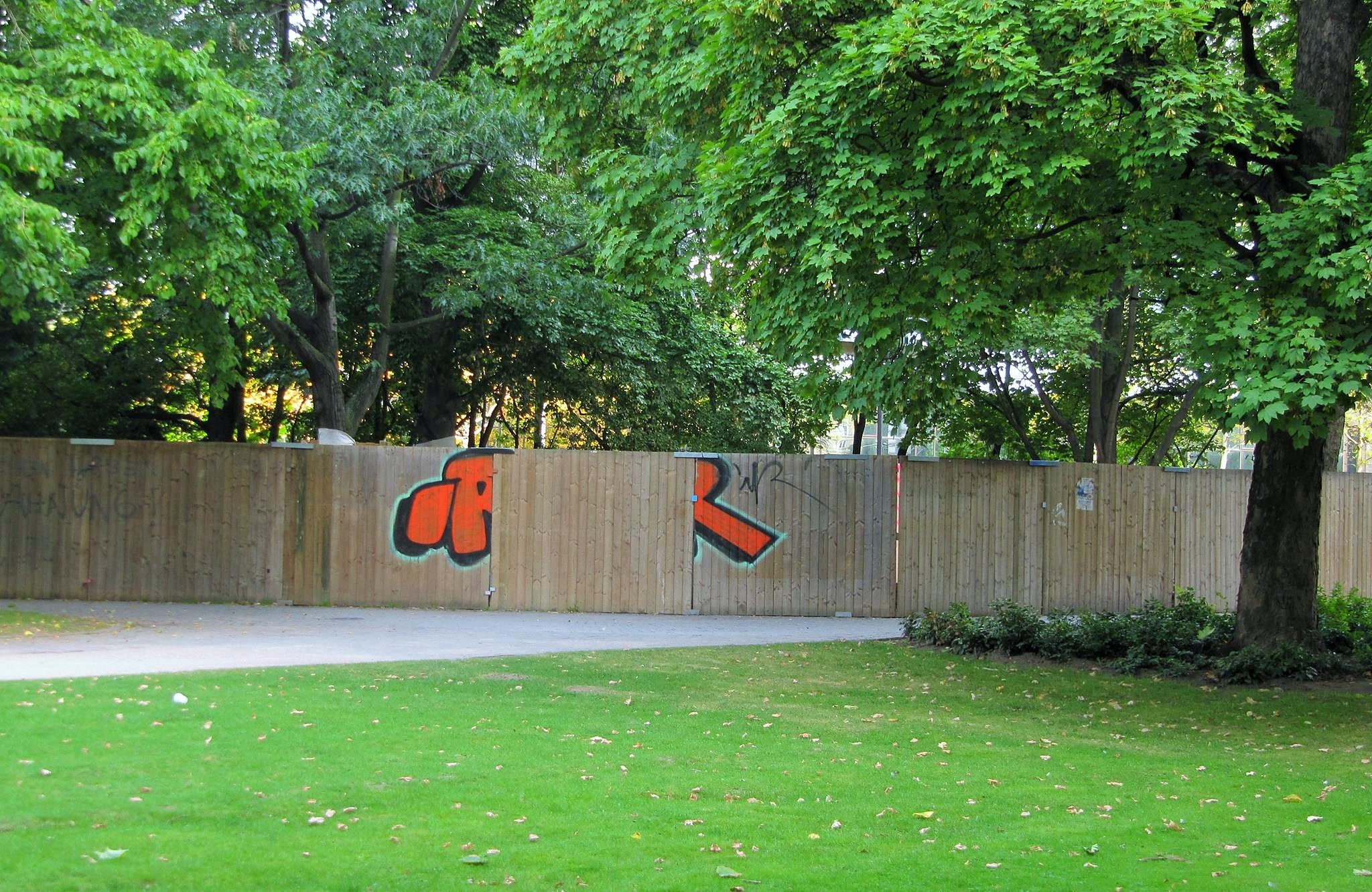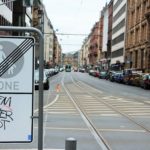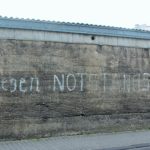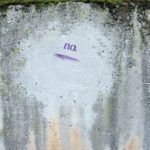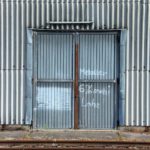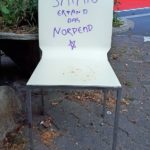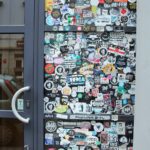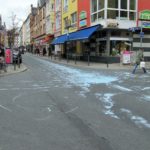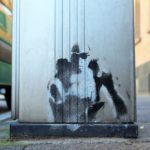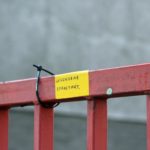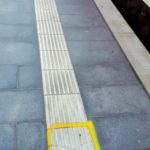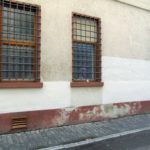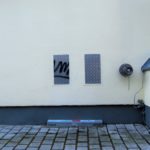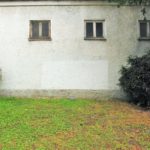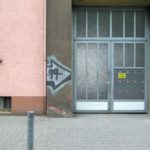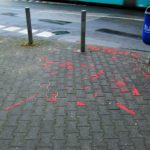Colours on the wall! Today we have another special graffiti article for you. We introduce you to the group Kollektive Offensive from Germany. They are photographers, documentators and historians for urban art, street creations or just odd things you find behind a bench. They are preserving the interesting stuff from the city for more than a decade on their platform. Since 2010, the collective has been extensively documenting graffiti, creativity and oddities around town.
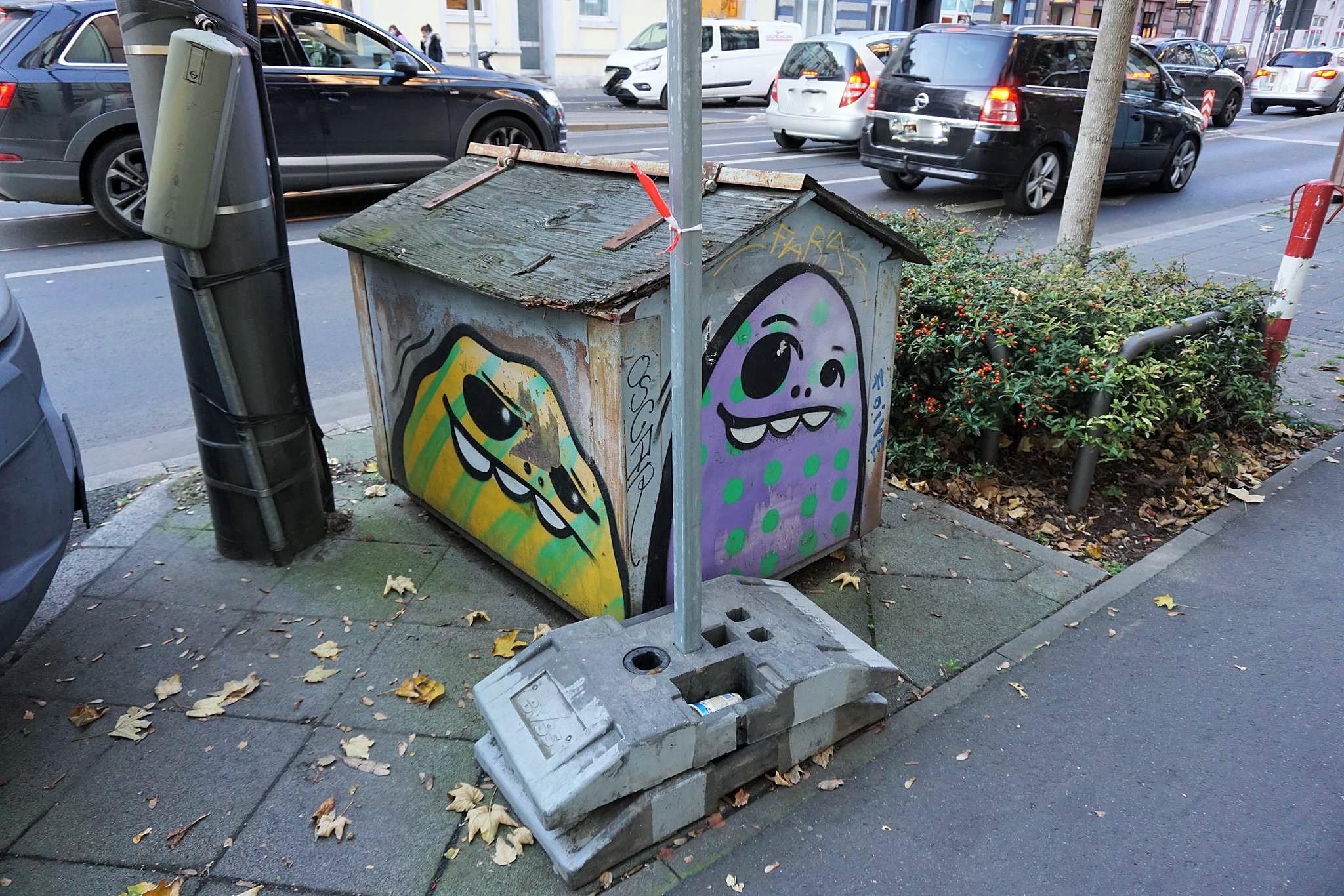
The website that the collective has built is just terrific and entertaining. Over the years the group expanded and besides Frankfurt they now also have colorful news from Erfurt, Jena and Berlin. A big thank you goes to the operators and the whole Kollektive Offensive! This platform has informed, motivated and provided impulses with its great reporting and interesting writings long before Vagabundler even existed. Their work was inspiring, the blog was and is an idol. Over all their doings were an influential factor which gave impulses to start this Vagabundler project. You should definitely check their website later but first keep on reading.
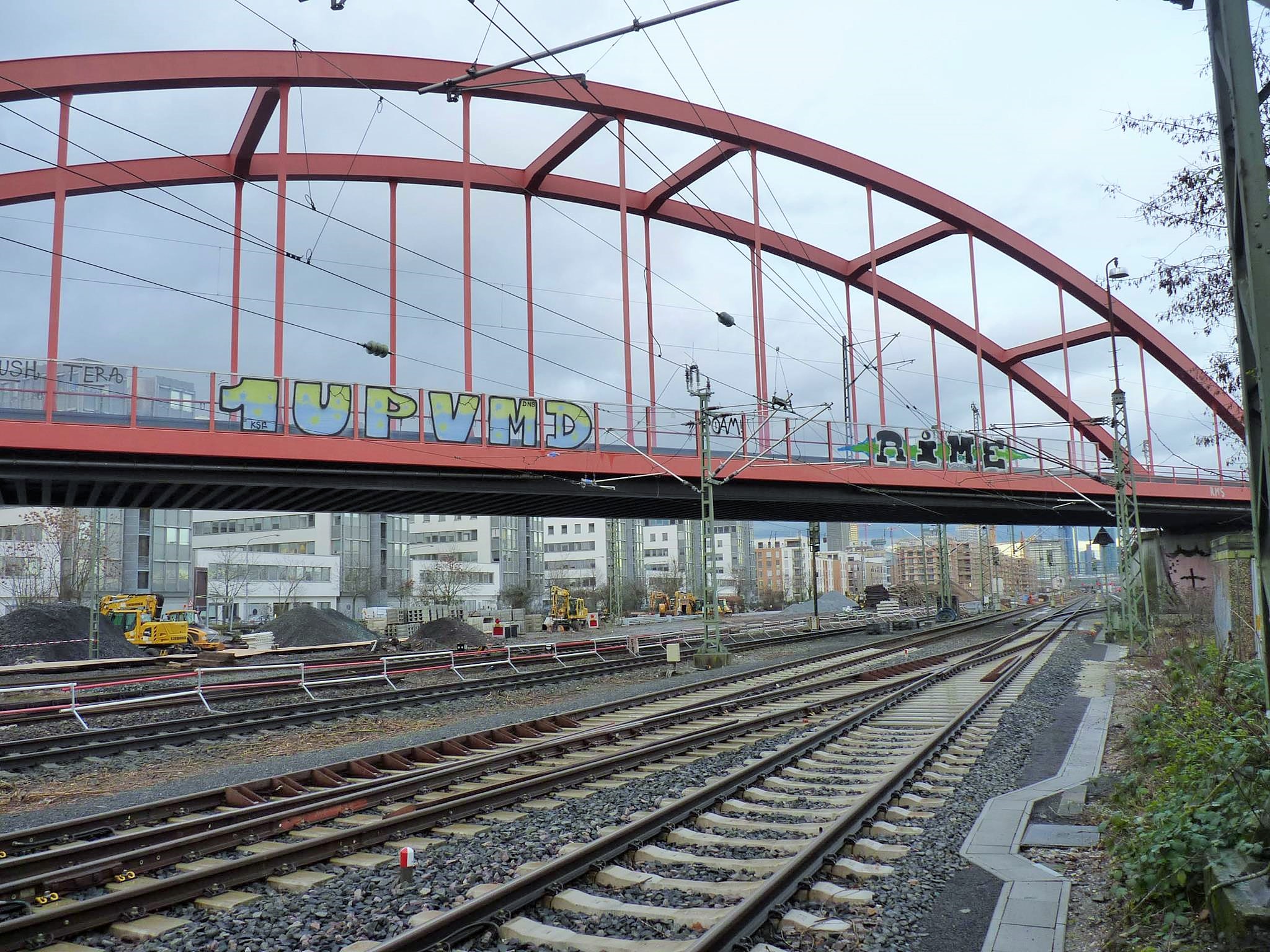
In a live broadcast on Radio X, the two crew members Olaf and Christian told us about the origins of the Kollektive Offensive and their concept. The audio from the show is in German, but below the conversation is also transcribed and translated into English. All the photos in this article are contributions by the Kollektive Offensive.
Today we have the two Kollektivistas Olaf and Christian from the „Kollektive Offensive“ as guests in the studio. We will speak about graffiti, urban art and the interesting online platform that the collective runs. There they offer a lot of information and photos on the subject of graffiti. The „Kollektive Offensive“ or the „Offensive Kollektive“.
Christian: Yes, sometimes we like to play with the names. You can also combine these words very well.
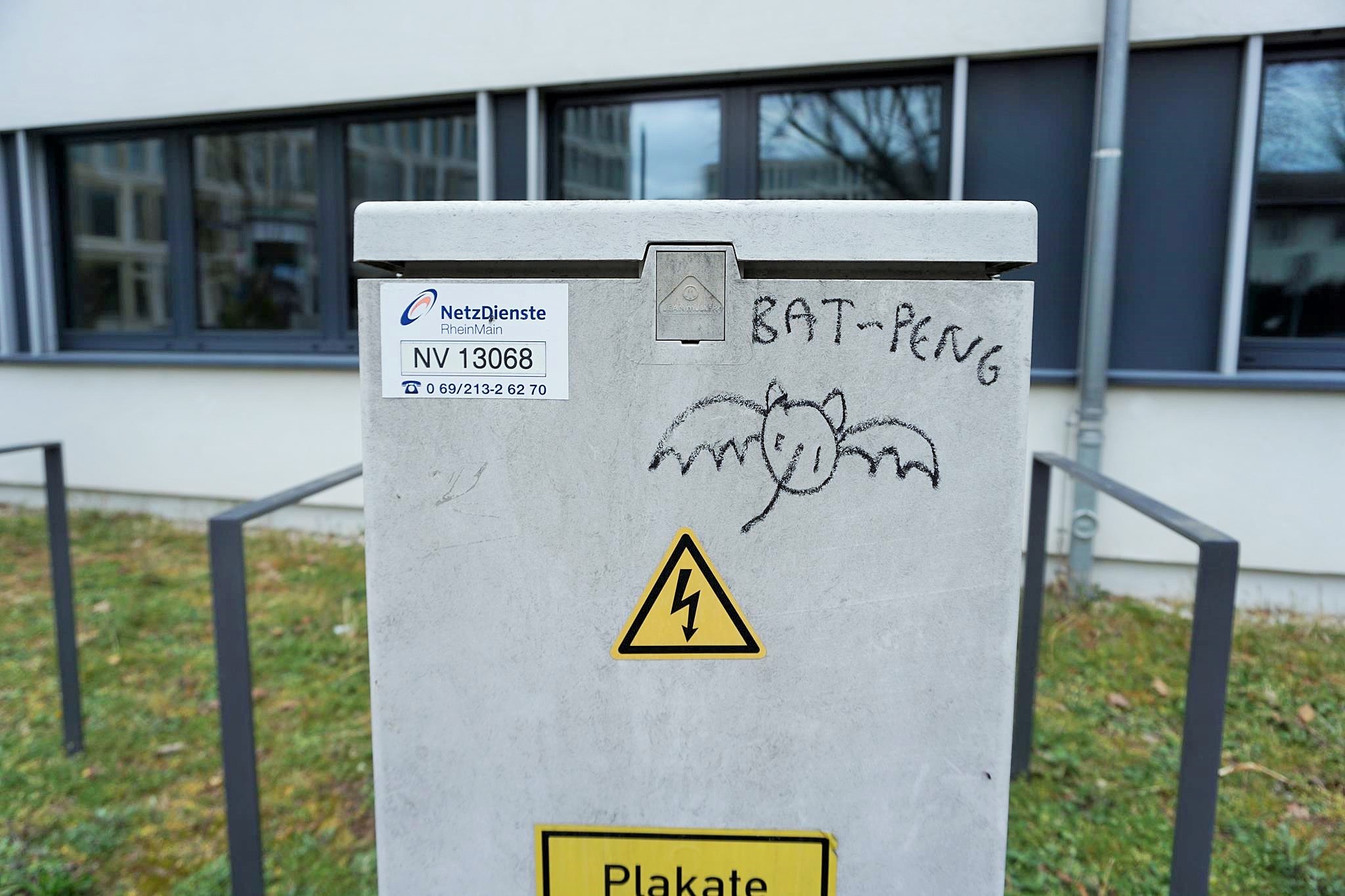
The website that you created and that you are constantly expanding has been around for eleven years now.
Christian: Exactly, since March 2010. I founded the whole thing back then and it wasn’t so primary that I now want to start a graffiti website. Or a page on street art or urban art. At first it was simply an interest in the subject. My brother has always had a strong internet affinity and I think he had an Ebay account and things like that as early as 1989. He also had a blog at Blogger at the time. At the time, it wasn’t with Google, it was still its own company. I thought it was really cool what he had done there and I was also interested in blogging and doing something myself. I started out by presenting my interests in general and writing a few links to websites, but then it quickly went in the direction of urban art and graffiti here in Frankfurt.

Frankfurt was the first city?
Christian: Yes, Frankfurt was the first city, exactly. And then, after a while, my colleague Olaf joined the project. Because Olaf already had his own account on Streetfiles. At that time there were quite a lot of people on Streetfiles and Olaf had a lot of pictures on it. I then asked him if he didn’t want to take part. I can’t remember exactly when that was, but then Olaf came along.
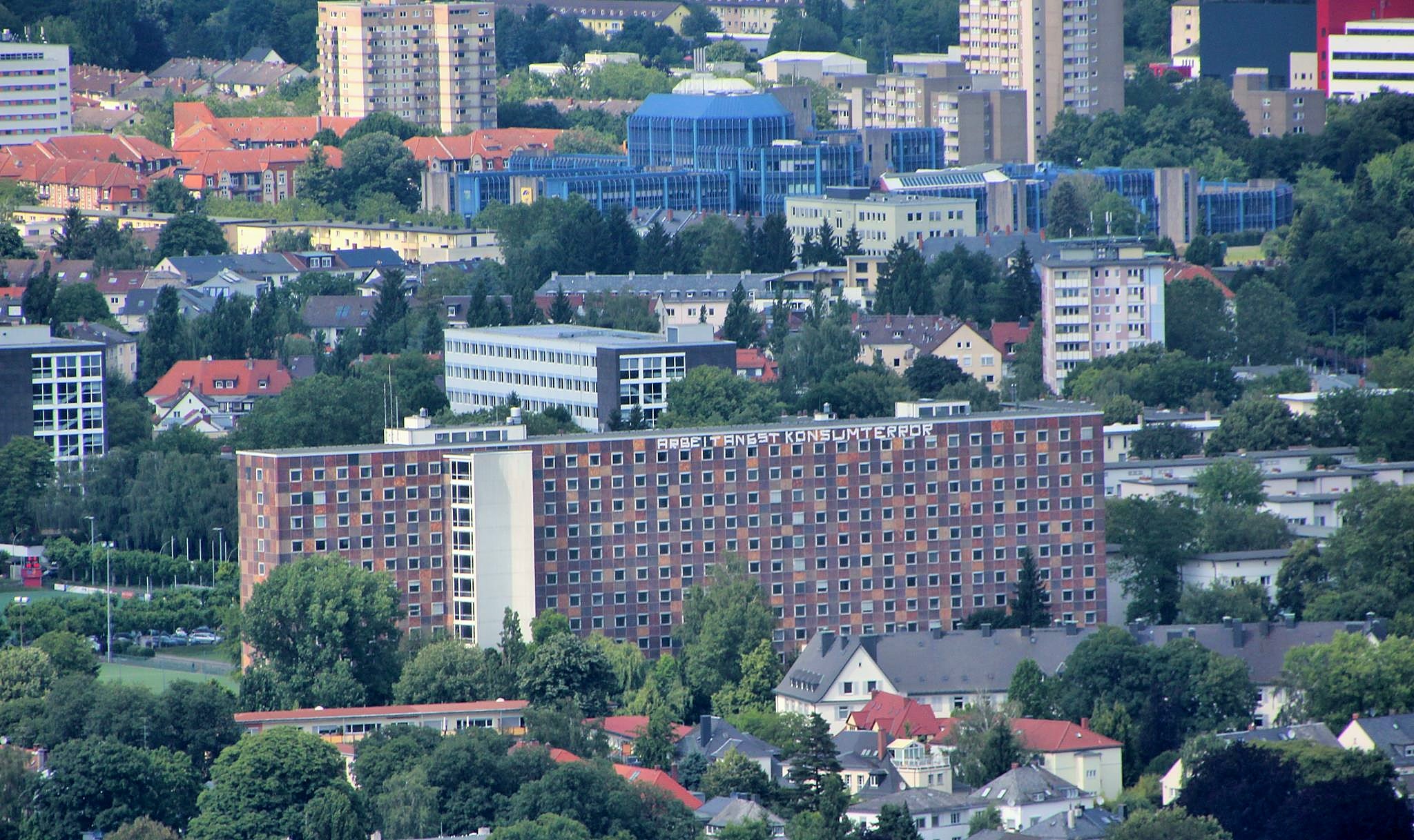
Olaf: I don’t really remember that either exactly. It’s all a long time ago. But yes, since then we have been using the Kollektive Offensive to present photos of street art and graffiti from Frankfurt or other cities or even from abroad to the public.

In addition to Frankfurt, there are other cities involved. You have a lot of material from Erfurt and Jena. Berlin came along at some point. And you are also traveling outside of Germany yourself and there are also great travel reports with interesting things that you can find in other cities.
Christian: Yes, but I wouldn’t really focus on that. We had that for a while, but I wouldn’t even say that we have a special point there. Well, I found it more so that the city focus is already very much in the foreground. So for me it’s the case that the foreign stories come about more or less by chance. Of course, there are sometimes really cool things. We also had interesting things from Istanbul as user submissions. A lot of interesting stuff happens there. At least for me, when I’m abroad, I don’t focus so much on it that I would definitely take photos there for the website.
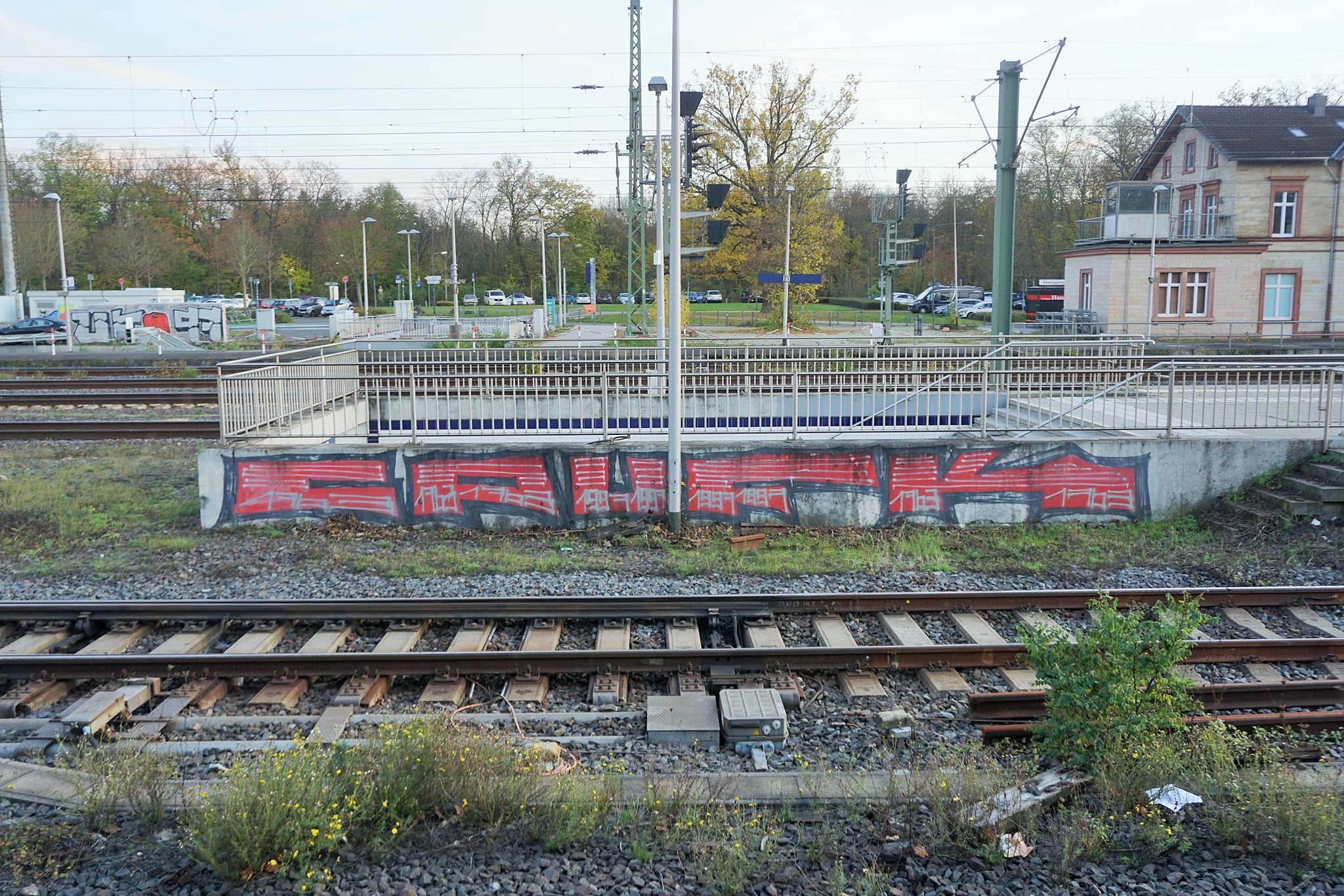
It’s already clear that you’re going inwards or into the small things. The foreign things are more like specials that are also included. But you are very local there and not just the large murals that you may also see on other channels and that are known for a long time, but you go more into detail, including the small streets. We also talked earlier about the fact that you also include odds and ends, so to speak. So if, for example, someone would create small figures with chewing gum it would be there. Basically everything and all kind of urban creation is there.
Olaf: Yes, well I think that’s a bit of a feature of the blog. So in terms of the medium on the street and the location. It’s less of a journalistic approach now and more of a documentation of what we’re seeing and what catches our eye. That’s the approach that runs through there and has been for a very long time. And that’s why it’s finally become an archive.
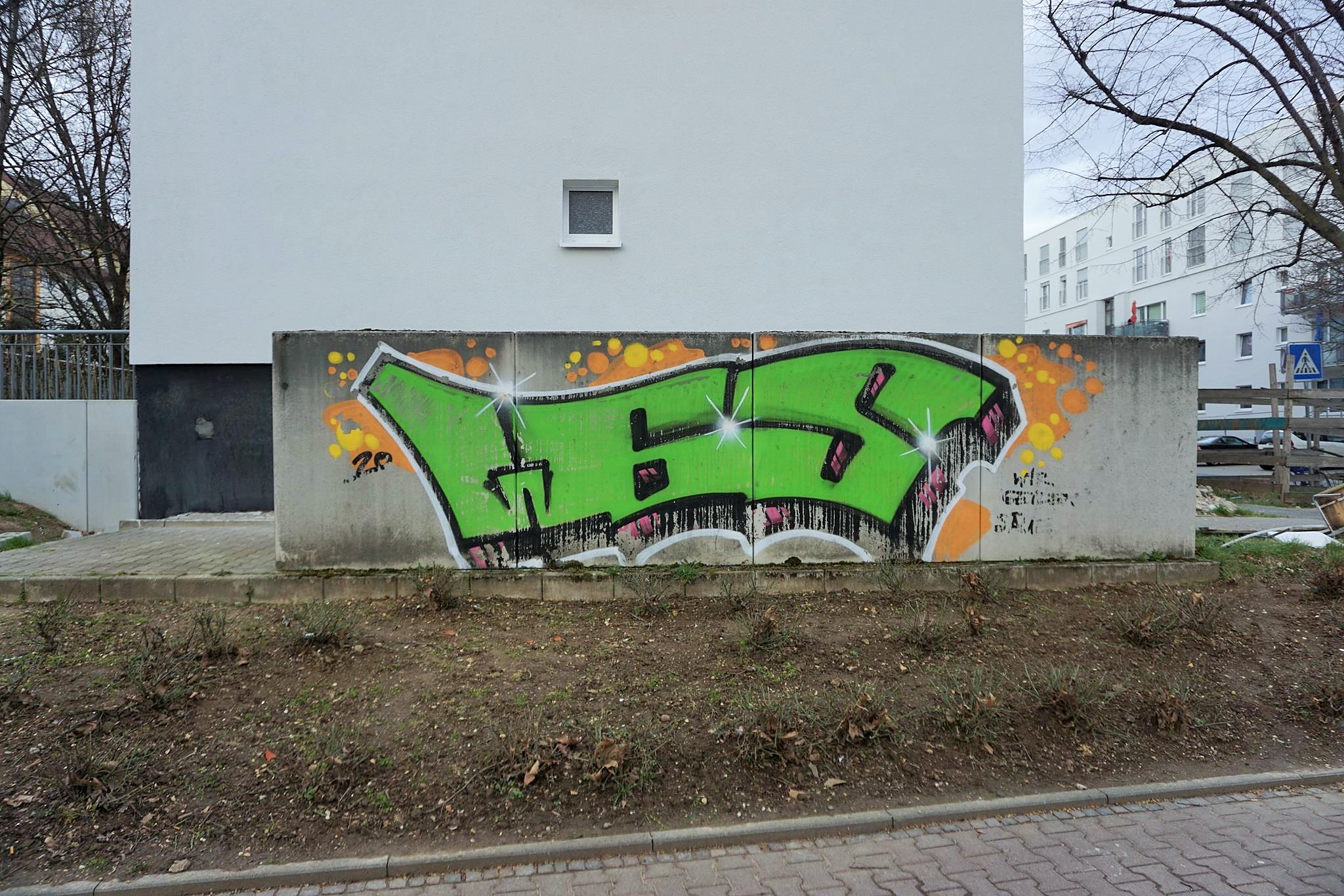
In any case. It has become a very large archive. You also have interviews on your platform. I find those very interesting and they are always part of the specials. There is as well a summary with a kind of monthly review. So to explain a little bit about the blog structure and what can be found there. So of course, the things from the cities. But you also have subject areas such as Frankfurt S-Bahn stations or a lot about the Ratswegkreisel. That’s one of the hot spots in Frankfurt.
Christian: Yes, although I have to say that we haven’t been doing the Ratswegkreisel that much lately. If so before, then I and Olaf had just done that. It’s not that big thing for me and I think for Olaf too, but the Ratswegkreisel is still interesting and a lot happens there, but we’re more interested in the illegal area. The legal is sometimes a bit too licked off and too perfect for me. And it’s more interesting when you look more at the illegal aspect. In which part of the city was it painted and on which building was it painted. So that you also think about how the person got there in the first place and what is the story behind the whole spot. And all these stories don’t exist at the Ratswegkreisel. That’s why it’s a bit like that for me and for Olaf too, so we don’t find it that interesting to walk over it at the Ratswegkreisel, because that’s not the case there. And maybe the other point as well, things like the ones you mentioned earlier with odds and ends, that’s more interesting for us. So if it’s not quite so conventional and not quite perfect. Sometimes we have a better eye for those things.

That is the adventurous part about discovering things. And there are often completely different perspectives that you have on it and how you walk through the city. You might look under the bench or behind the bush and suddenly discover something totally bizarre there. I always find it very interesting when you have a collection like that, and when you see a lot of things from one genre, it has a different effect than if you only have a single picture. The visitors can linger in your archive and scroll through the photos for quite some time.
Olaf: Yes, that’s also our approach to make the whole thing a little more visible. We also notice ourselves when we look at other websites that the small sticker is lost under the big pieces. Our goal is to choose categories or forms of presentation that will structure the whole thing and structure it thematically. And yes, then people can look at what interests them. But we also notice that many people also watch what doesn’t interest them and then complain about it. But I think there’s just enough on the site for everyone.
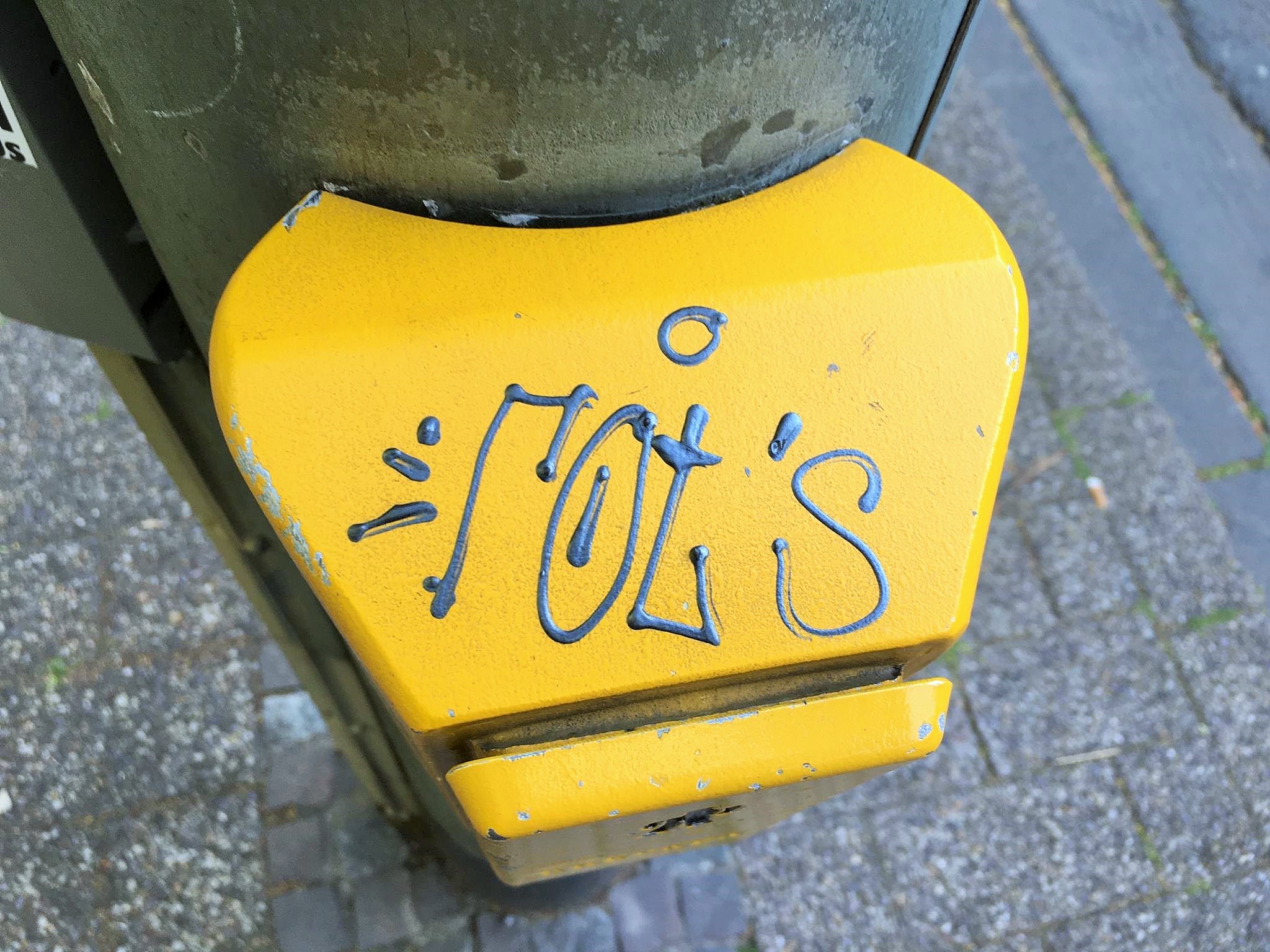
Yes, we also have to talk about your comment function. But I would say we play another song. The opening song we had was Wholetrain by KRS One and El Da Sensei. Something you want to say about it? Who in your group wanted that?
Christian: That was the Jena part of our collective.
Olaf: Exactly. Yes, that’s a classic. We had it played that at the beginning of the show.
Exactly. This was the first song from you, I wrote you before the show to pick a few songs. And now I would play Scarf Face’s song Mercy.
Christian: I chose it because I think the beat is pretty cool and because it reminds me of the old Wu Tang stuff.

Back to our guests from the Kollektive Offensive. Since we are here in Frankfurt, of course we also have to talk about football graffiti and the local club Eintracht. So UF97 and SGE in particular, that’s also very present here. And also political graffiti, sayings or slogans. Those are two genres that can often be found in the illegal section. They are often made illegal and you won’t find them in places like the Ratswegkreisel. But that’s a completely different and interesting thing to do with things. With football graffiti, it often comes from the fan community. The background to this is completely different. Or with the political slogans. There’s a whole different story behind it. It’s not just a few letters, you have to understand the whole phenomenon of graffiti a bit more comprehensively.
Christian: Yes, yes, but I would add something here, because I just noticed that you’re pigeonholing it too much. I would separate that a bit. Because Eintracht in particular have done a lot of murals and recently done a lot of new things in Frankfurt. So there is still a relatively strong legal area.
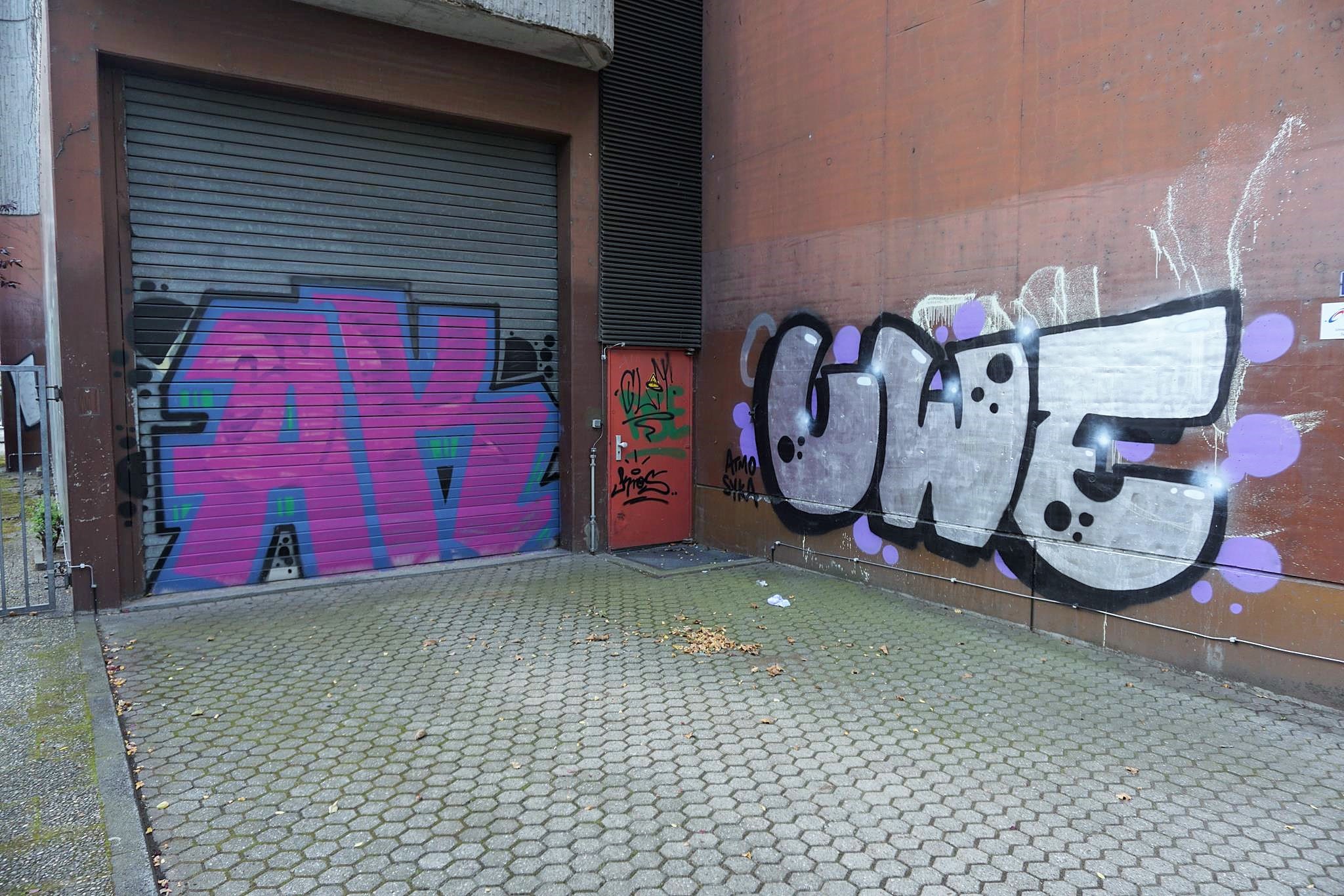
Yes, definitely. Of course there are also many legally made works about the Eintracht or great fan projects.
Christian: It’s also very popular in other cities, too.
Olaf: I think these are the areas that are becoming more and more controversial among writers, because they don’t necessarily derive their origins, as writers might otherwise like to do, but because they come from somewhere else and also bring in other or more specific topics. On the one hand I can understand that, but on the other hand I also find it interesting. So what happens on the Eintracht side in the city is mostly well-done street bombing. There is definitely something behind it. So a lot of work and a lot of effort. And that’s why we document it. It’s the same with political slogans. That was there a long time before classic style writing even existed. It’s often portrayed that way that some say, so now they come and somehow steal the methods from us. Historically this is not correct. So I just find that interesting. So actually this aspect of using materials on public walls without being asked and using them as a projection surface for whatever. Be it your own style or your own message. And that’s actually what I find so exciting about it, that’s why I notice it and that’s why I deal with it.
Christian: But that’s not all. We also see ourselves as a political blog. And that’s why we naturally also make a certain selection. A headline that could also be put there would be Antifa. That’s how I would describe it now. And yes, after the selection, more or less, the documentation follows. With possible additions to current topics.

I already mentioned it earlier with precisely this perspective when you look at something. So the question of who decides now whether something is valid or legal or allowed. From my point of view, when I look out the window and have to look at a huge advertising poster for a bank, I wasn’t asked whether I think it’s nice to look at and whether it has to be there. So I think the first thing you can do is ask yourself that question.
Christian: I agree. Who owns the city?
Yes, who owns the city. There are two parts that you have in your project. So one thing is initially the simple documentation, maybe a bit value-free. But then you already have a left-wing style, how you approach the whole thing and also in relation to the messages that you give away.
Olaf: Yes, I don’t think you can afford not to have an attitude, especially these days. And we have this attitude and we stand by it. With many things like football graffiti or anti-style or style writing, you can have different opinions. When it comes to racism, exclusion and discrimination, for me it’s not a question of gradation, it’s also about saying a clear no. That’s what we do, and we do it transparently. And if you don’t like it, you don’t have to look at it. But for us that is also part of our self-image. And I also think it’s good if more people don’t always describe themselves as apolitical on these points, but I think it’s good and important to show an attitude and behave accordingly. For example when people show up and try to do fascist graffiti. You just have to intervene early on to give these people no space.
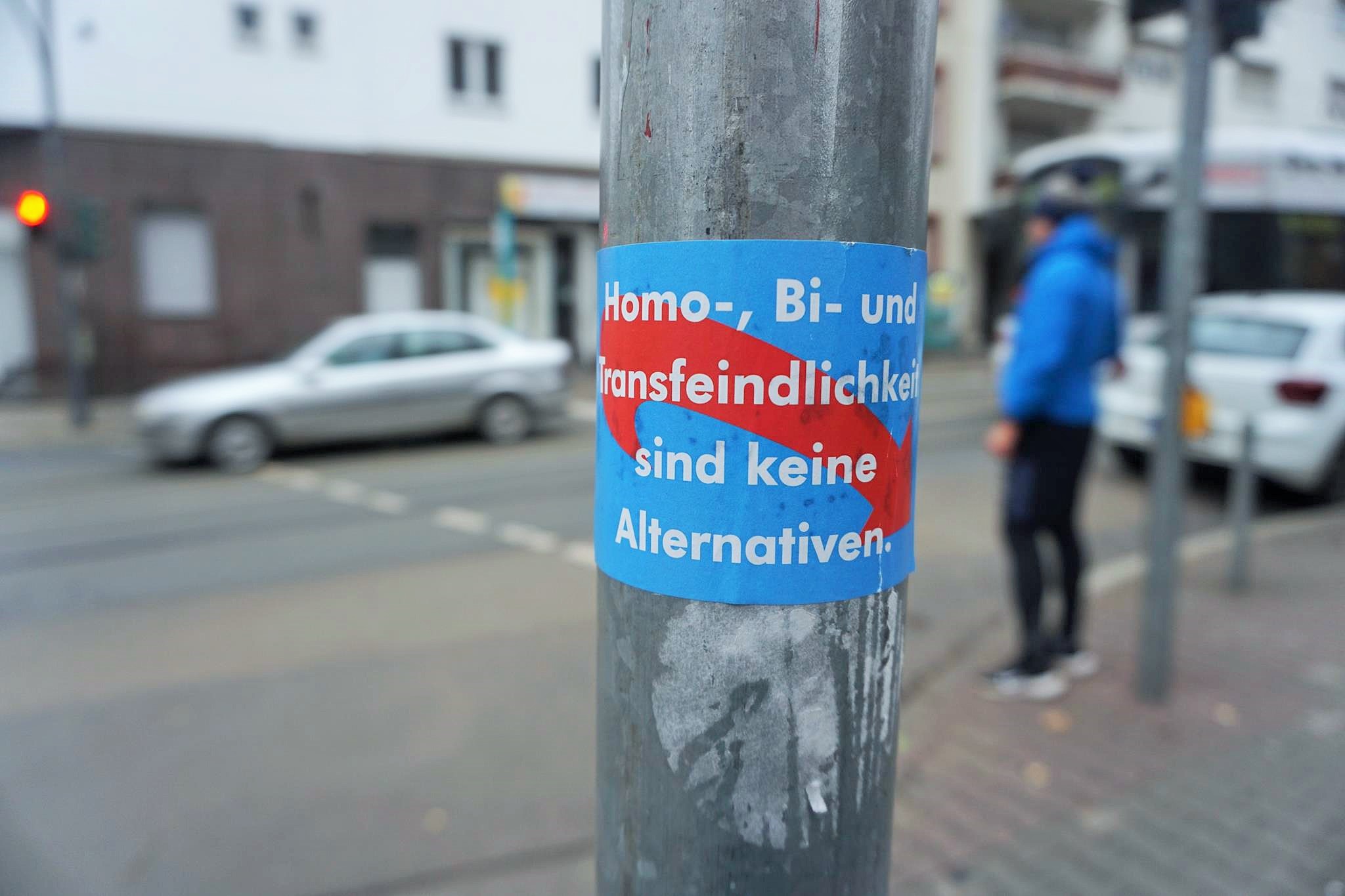
Yes, in any case. What I also think is very cool about your blog is that there are other websites that only show photos. Some may also have articles and texts, but on your blog you also have a very large section where you can also communicate with other users. That‘s your forum. You discuss and you also stimulate discussions. Of course, it is sometimes very chaotic, not quite so nice and sometimes it even degenerates a bit. But you give the opportunity and you continue to do it. I also know others who then suddenly closed their forum because it went too bad in the communication. But you face it and I think it’s very important to offer something like that.
Christian: Yes, exactly, I think so too, that also reflects the scene. The way it is commented on there or somehow blasphemed and you don’t treat yourself to anything. Sometimes that is also perhaps too much for us. But on the other hand, if you now draw a line and see what is left at the end, then there is a certain added value. And often the comments are actually quite funny and therefore have their own entertainment character, or as with the user Schwippsi for example, some people establish themselves there. I actually find it really cute and funny. There’s movement in there, too, and if you were to completely deactivate the comments, then a part would break away, which would be a bit of a shame. And the other point is also simply against the background that it is also difficult to describe with other specials or with other painters, for example the artist XY is often active here and there in the city area. Or if you try to start any description. That’s why we hardly have any texts, because you don’t want to offend anyone and because there’s always the danger that you’ll give out too much information or that someone won’t like it. The comments mean that there is a little more text or that the post is then commented on and described a bit and something is added that way.
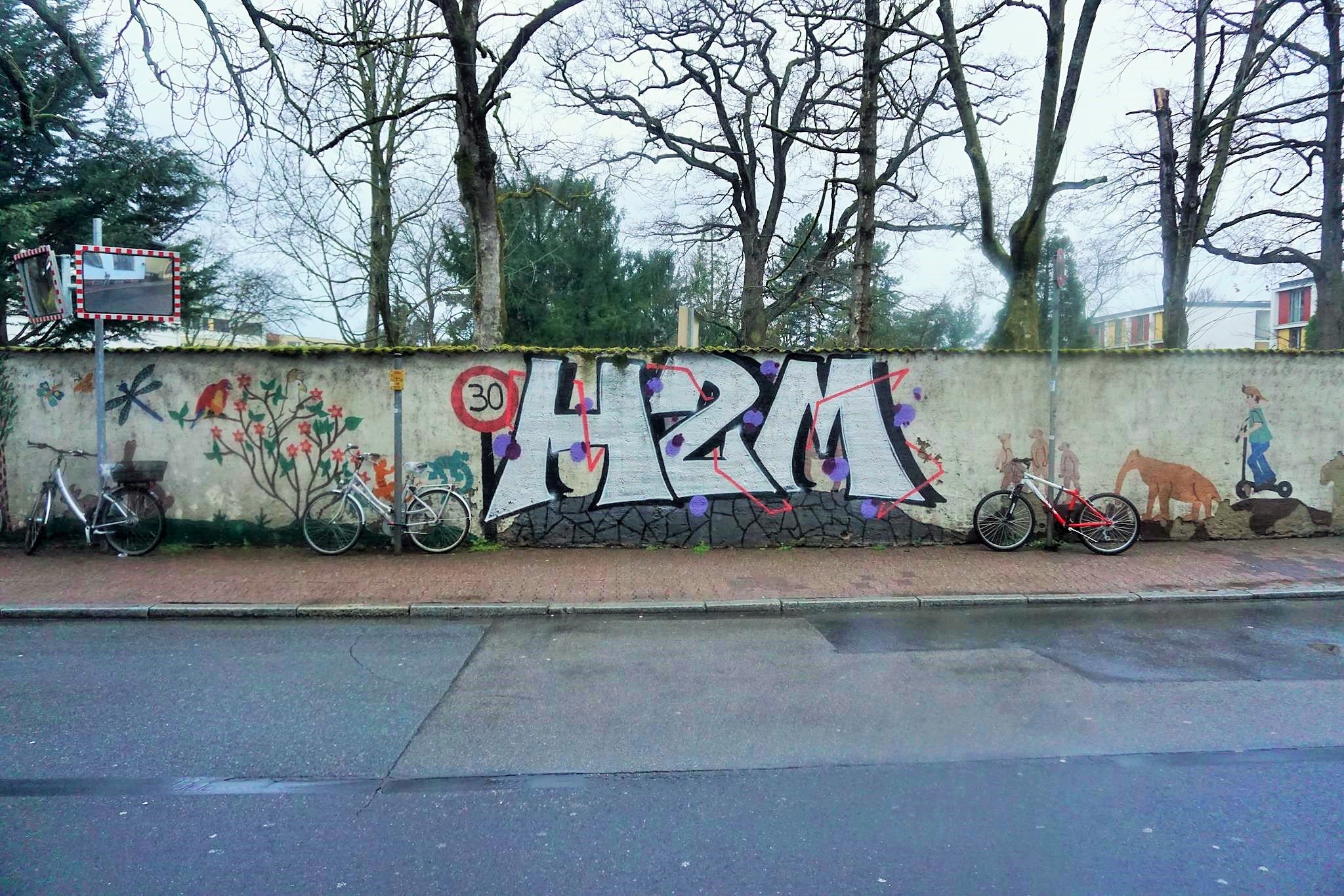
The nice thing is that people then communicate with each other. So exchange ideas or argue. This is how conversations develop between people.
Olaf: Yes, I think that at the beginning we also relied more on the self-regulation for a while. So that people intervene when it gets too detailed. So that there is no reaction at all and that people say certain things don’t belong in the comment column. But at some point it didn’t work that way anymore. So whether that was because of Corona and that more people then sat at home and wrote their frustration in the comment columns, so no idea. But then we decided to moderate things. This is more strenuous and of course takes more time. And of course you also notice when moderating how it is a tightrope walk, what is allowed and what is not. Another negative point is that one is always easily tempted that when one sees comments and approves them, one then reacts immediately to them. Of course, this also influences a conversation and a discussion. In that sense, it’s all a challenge. We have also discussed this for a long time in the entire collective and now we also think that it is a compromise that also works well. In that respect it might be worth it and that you don’t always have to get up with the feeling, oh god, what’s in the comment column again tonight, but now you can approach it all a little more relaxed.
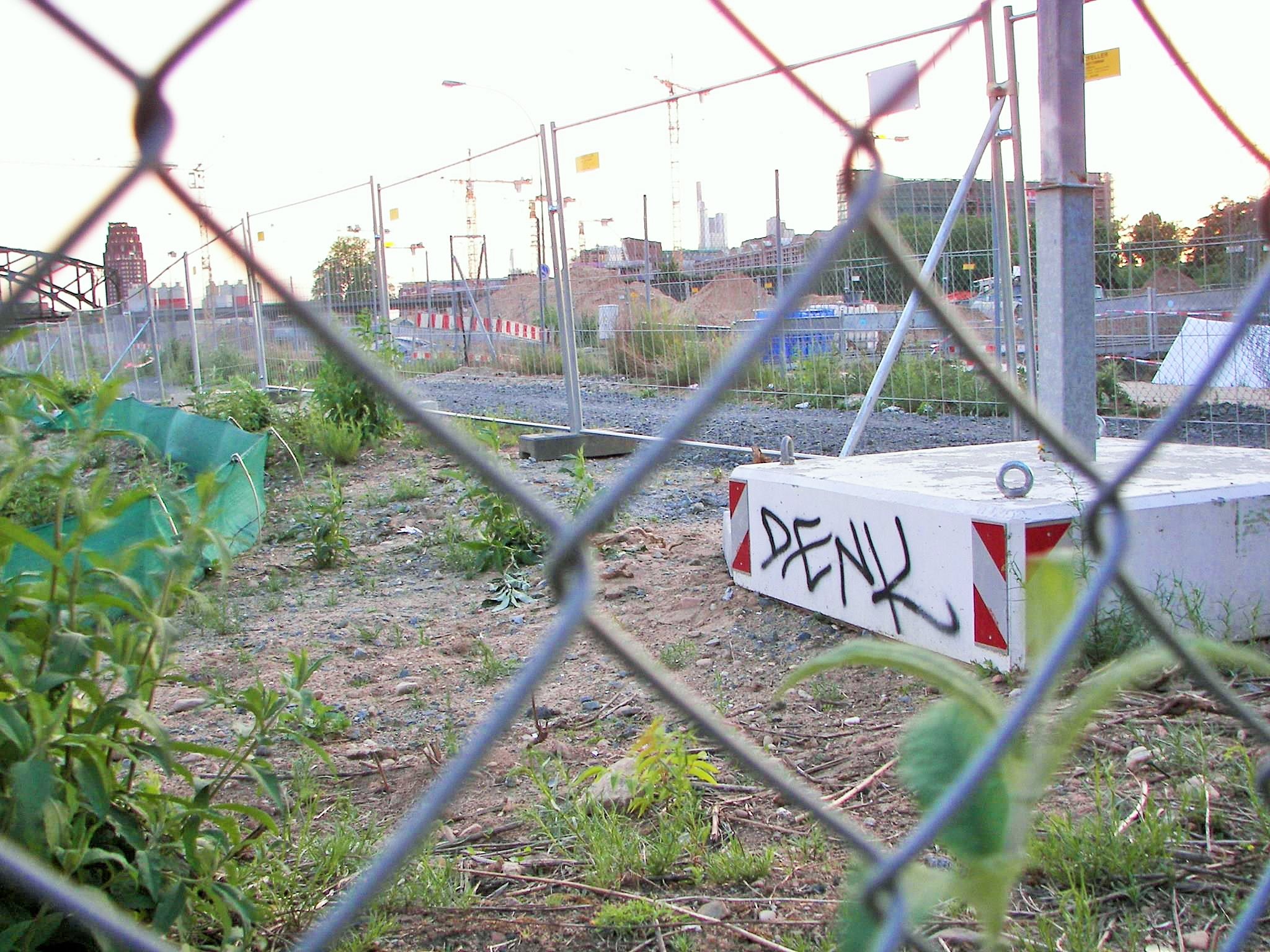
Yes, but you also live participation in your blog. So it’s nice when people get involved.
Olaf: Exactly. And that is certainly the difference to some other sites. Although I can totally understand that if you don’t do it. In other words, in the area that is perhaps also a bit sensitive. At the same time, it’s also nice that there’s more happening than any flames, bombs and fists on Instagram. So I think there’s a chance and we’re trying to deal with it responsibly.
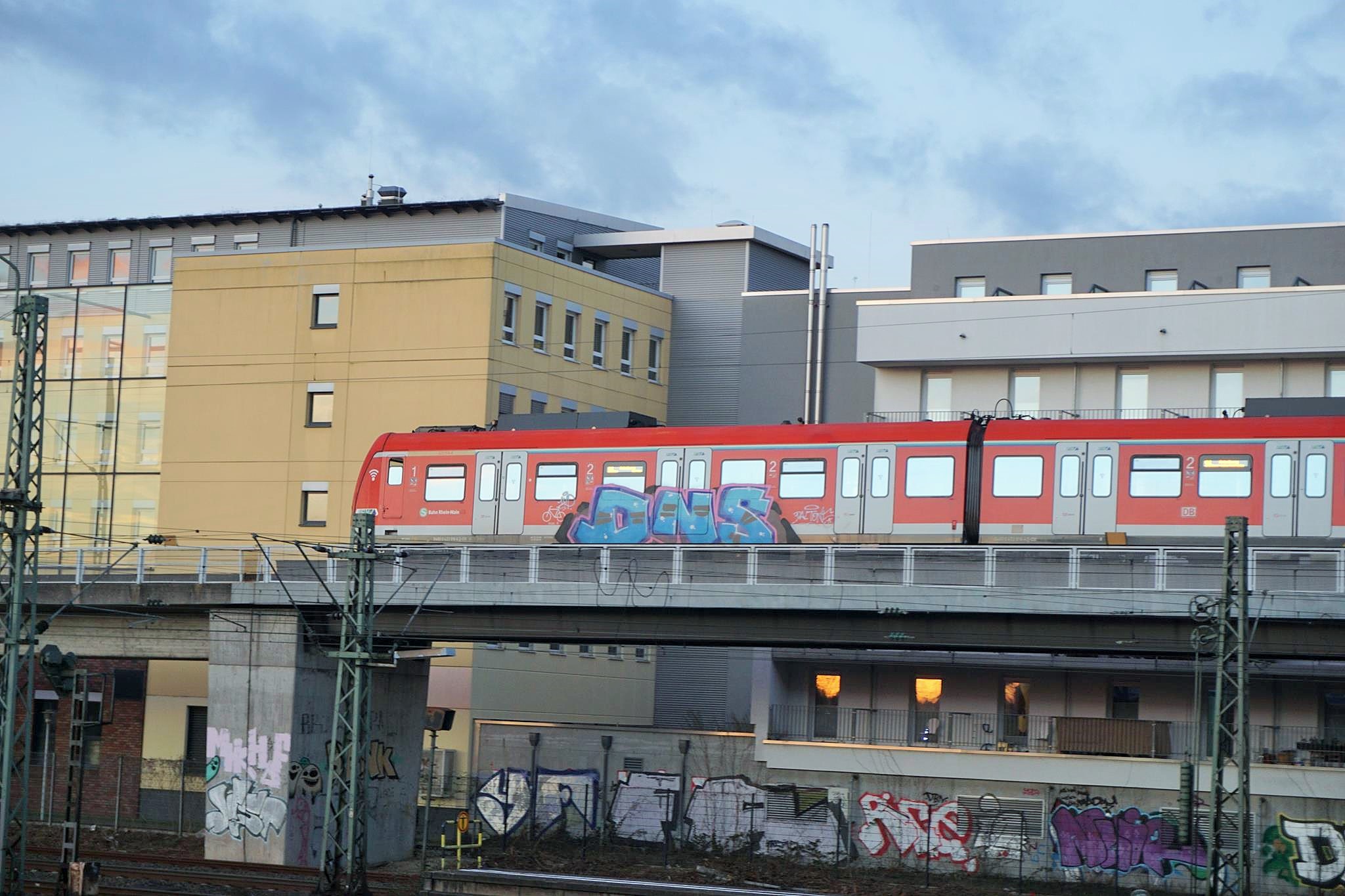
Another song was just playing and in the meantime we of course continued to discuss and talk about the little delicacies that you can find in the city. In other words, tags, signatures, stickers, paste-ups, pieces of paper that have been cut out or meanwhile also wallpaper, there are stencil sprayworks and much more. How do you see it? I remember these DHL stickers from the past, which some had used. But meanwhile there is a much larger spectrum, especially with the smaller works of art, which you can search for and find.
Olaf: In Frankfurt you actually have to be on the road a lot to discover a little something from the different sectors. It was actually very different when I started taking photos here in 2009. There was a lot more in that area. You can see that now on the block when you look back from Jena. So back in the day. Everything used to be…, that’s what we called it there. There were just a lot more and also a lot more bigger names that were also known in more cities. That has decreased a lot. But I think it has a certain appeal because it could be discovered anywhere if it were there. Well, you can actually go anywhere and if you keep your eyes open, you can also find some older things and smaller things. Personally, I’m very excited about that.

Is that only explicitly the case in Frankfurt? Because I had the feeling that more and more different styles had emerged over the years. Well, in the past there was only graffiti, then street art and more came along. So I felt like the range has gotten bigger over time and there’s more variety of styles that artists are using. But you just described that there is now less to be found in Frankfurt.
Christian: So I would say Frankfurt has never been a real “street art city”. So especially when you compare it with cities in Germany or especially with Berlin. The big problem is simple, well, there was a very well-known guy in the city, what was his name? Such a city cleaning guy. It was somehow in the media and even in the Bild newspaper. You can see him in a photo cleaning street signs or the junction boxes. I can’t think of the name right now. But in any case, this is here in Frankfurt and has always been relatively difficult, if you go out here with stickers, then you have to expect that some of them have already been removed after a week. Or just when you’re standing at the traffic lights, some of them are super clean. I’ve actually never seen it, but they’ll probably get rid of the stickers on a regular basis. And if you’re in Berlin right now, the traffic lights there are so taped up. Or in Leipzig. There is no longer a vacant spot. And that’s still a problem because street art in the narrower sense, for example if you only make stickers or less with the spray can, then you just don’t have many opportunities to develop. It’s sometimes not really fun to do something outside and that’s why you see relatively little there.
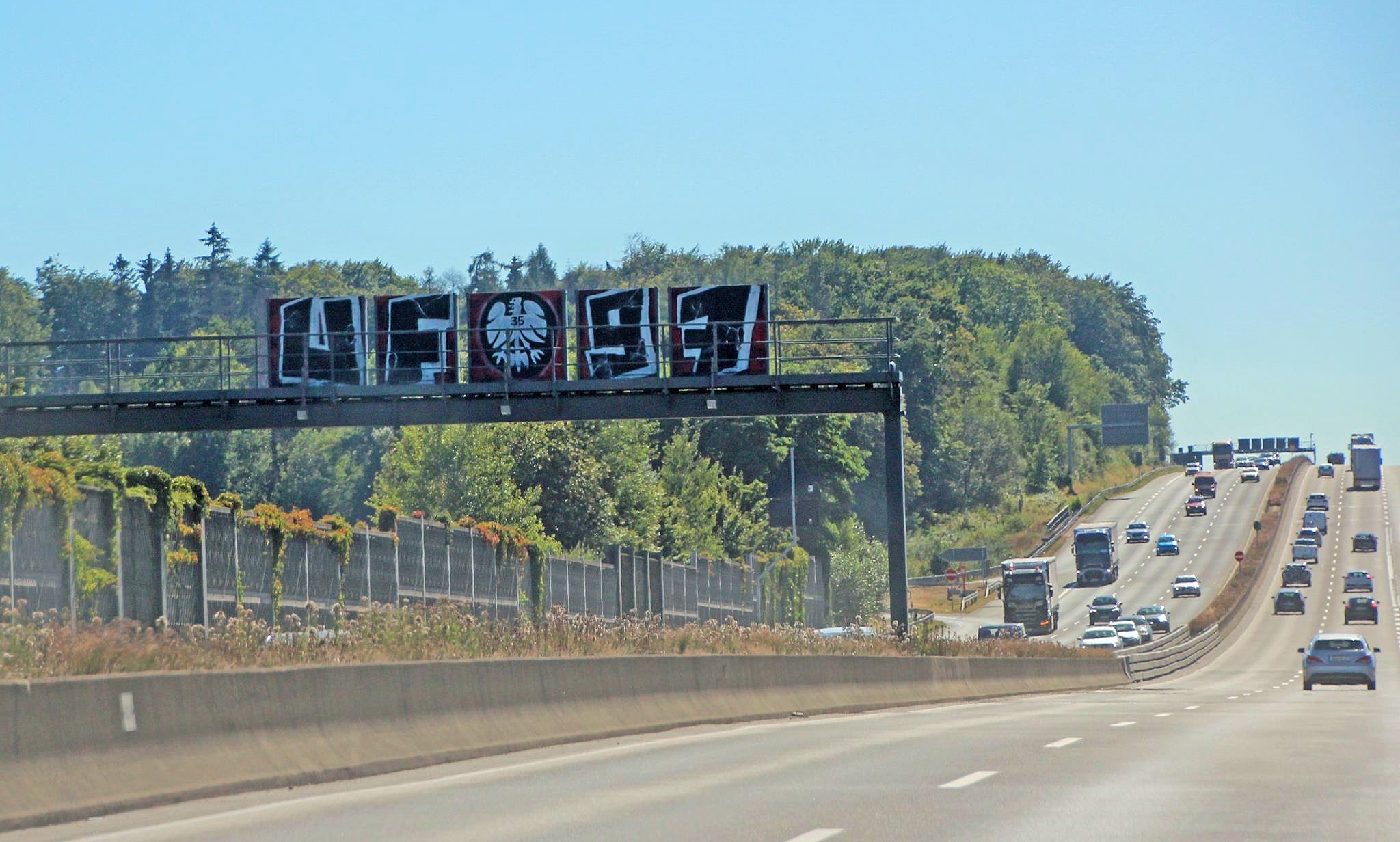
Olaf: That’s also one of the reasons why we’ve been doing the blog for so long. Because something is also recorded there by the documentation. That was always the feedback from people who did something. They said that if you’re also active, it’s often difficult to keep documenting things yourself. It might be a good idea not to go back to the same places afterwards. Those are the reasons why we ultimately do it. And also with regard to the street art theme, I would also say that it has never been so big in Frankfurt. I think it is also sometimes ridiculed by many from the style writing scene. But the actual hype, like in some other cities, is over, I think. I also believe that eight years ago it looked very different and was also much more considered in the media. This created such a hype that people really traveled a lot internationally with their things. That didn’t go down well in Frankfurt. But yes, it is what it is. We’ll find plenty of other stuff too.
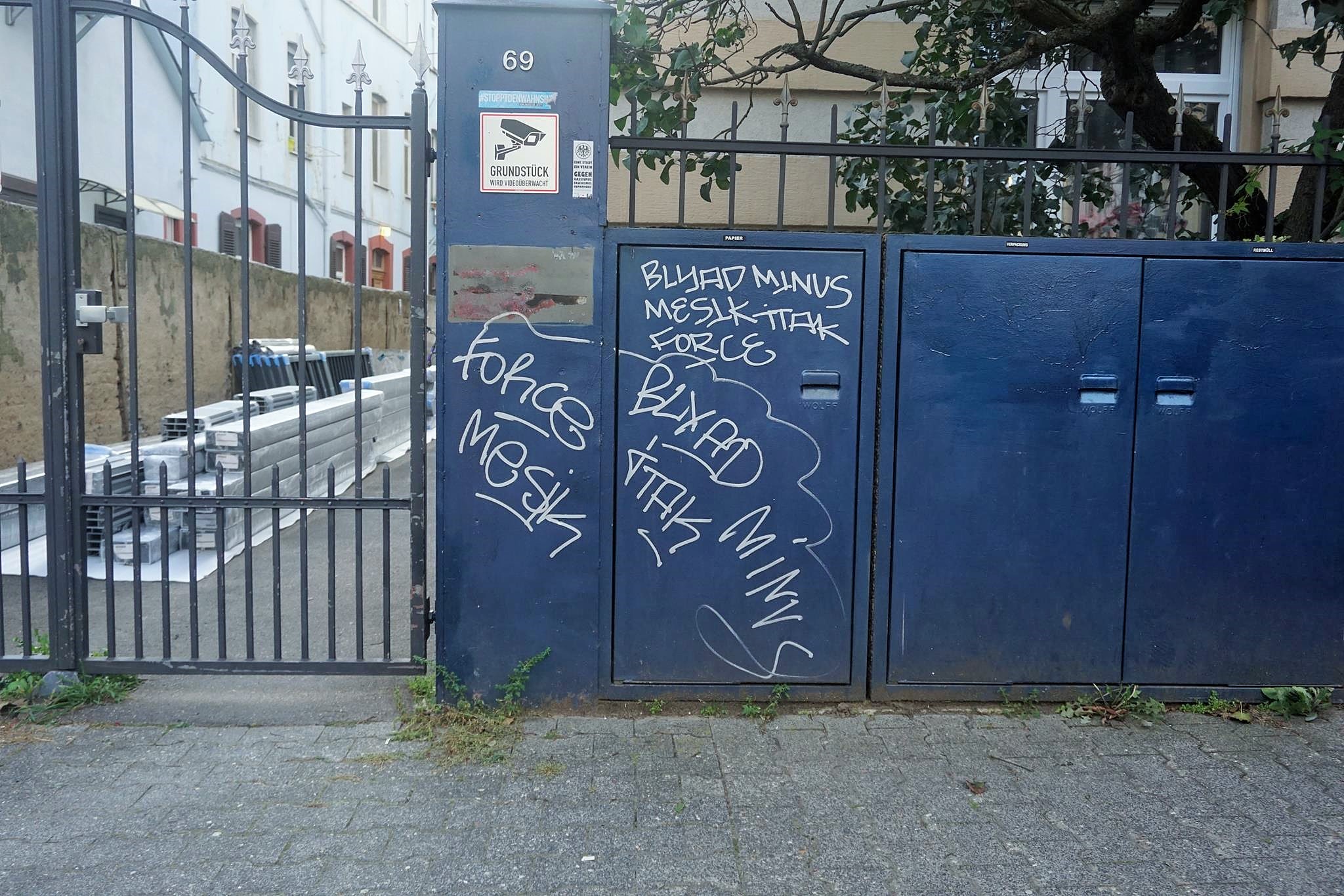
Yes, Frankfurt is a difficult place in many respects when it comes to art. But maybe because it’s more difficult to find something, that also makes it more interesting in a certain way.
Christian: I would still correct something here, because it comes across that less and less has been created here. In the case of street art, I would say yes, that’s true. But on the other hand, when I started taking photos in 2008 and before that I was already paying attention to what was happening in the city, even before the blog. That is significantly less than today. I think the scene has grown a lot and there are a lot of people at the start. So actually a lot of new crews too. So I find a lot there and even if you walk through Bockenheim or Bornheim, for example, there is also a lot going on there.

Time runs, we’ll play another song now, then we can talk a bit more, but that we get your desired songs through. I also found this one very cool, a track by “Vaio Flow” entitled “Boom Bap Easy” from the album “Rap de Colección”. She is a rapper from Colombia and raps in Spanish. Say something about the website, it was also interesting. This page to Feminista Rap.
Olaf: Yes, I actually stumbled upon it by accident. It’s called 365 Fe*male MCs and the website is www.365femalemcs.com. This is simply a very interesting compilation, which simply shows that women in hip hop are represented internationally on all continents and the goal is to document and depict that there and also to make it accessible to a larger public. And it was precisely when I was thinking about the choice of music that I noticed that it is often very male-dominated. So this is definitely a good website and you can find a lot of interesting things there.

We’re almost at the end of the show here, so I guess you’ll have to come visit again. Tell the listeners again how to find you.
Christian: Yes, the best way actually is via Google, where you simply give a “collective offensive”. I think Google suggests that on its own. So our main thing is on the blog, on the WordPress side. That’s actually where we do the most. We are also still on Instagram, although we represent and follow it there in a rather rudimentary way. Because we all don’t have the time for it and the main blog alone takes up a lot of time. But as I said, because Instagram is so extremely hyped and so extremely popular, that’s why we’re there too. But we tend to use this to draw people’s attention to it, and we always include a teaser post that refers to the current post on the website.
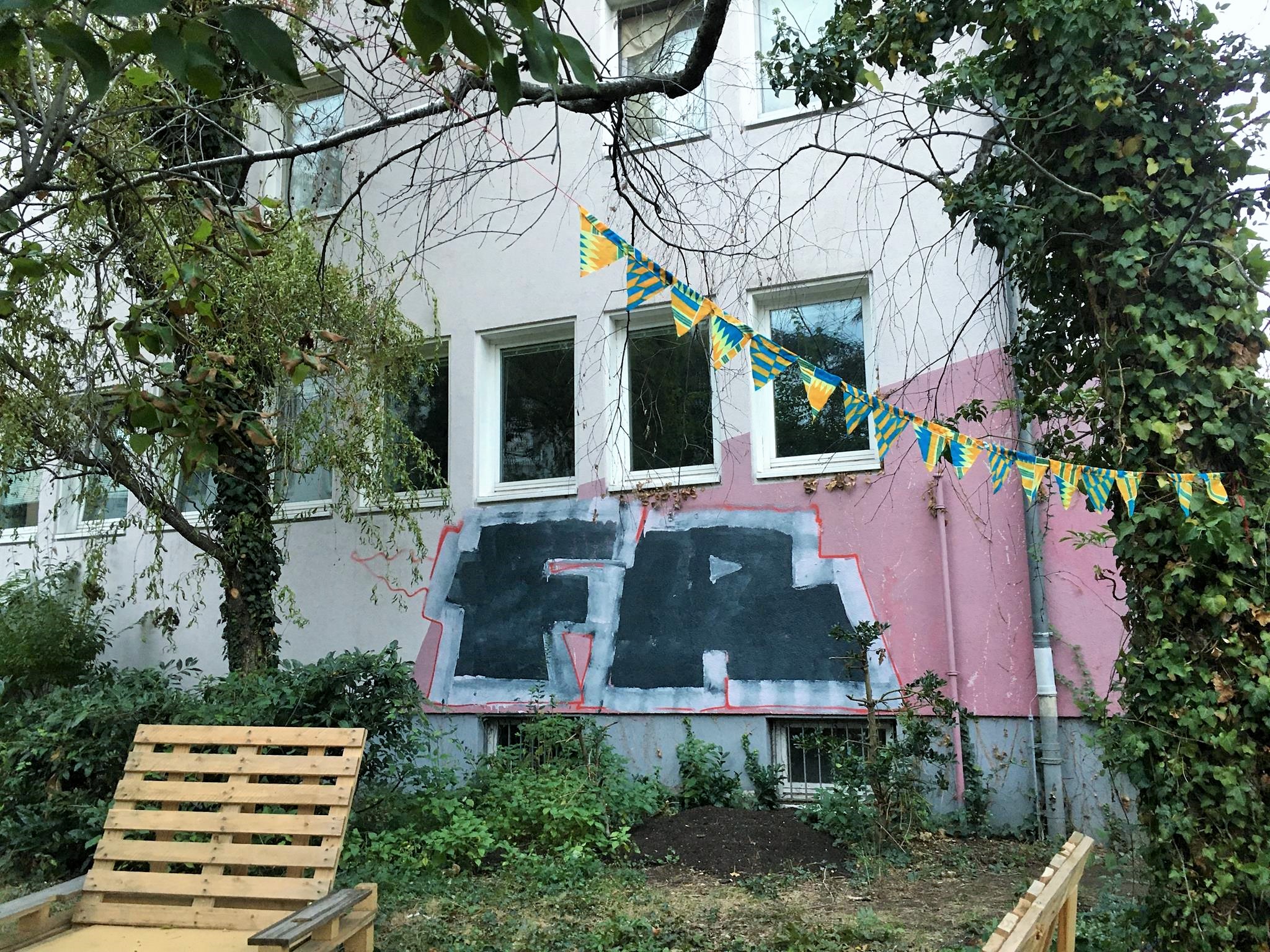
INFOTHEK
![]() Collective: KOLLEKTIVE OFFENSIVE
Collective: KOLLEKTIVE OFFENSIVE
![]() Email: kontakt@kollektive-offensive.de
Email: kontakt@kollektive-offensive.de
![]() Website: https://kollektive-offensive.de
Website: https://kollektive-offensive.de
![]() Facebook: https://www.facebook.com/die.kollektive.offensive
Facebook: https://www.facebook.com/die.kollektive.offensive
![]() Instagram: https://www.instagram.com/die.kollektive.offensive
Instagram: https://www.instagram.com/die.kollektive.offensive
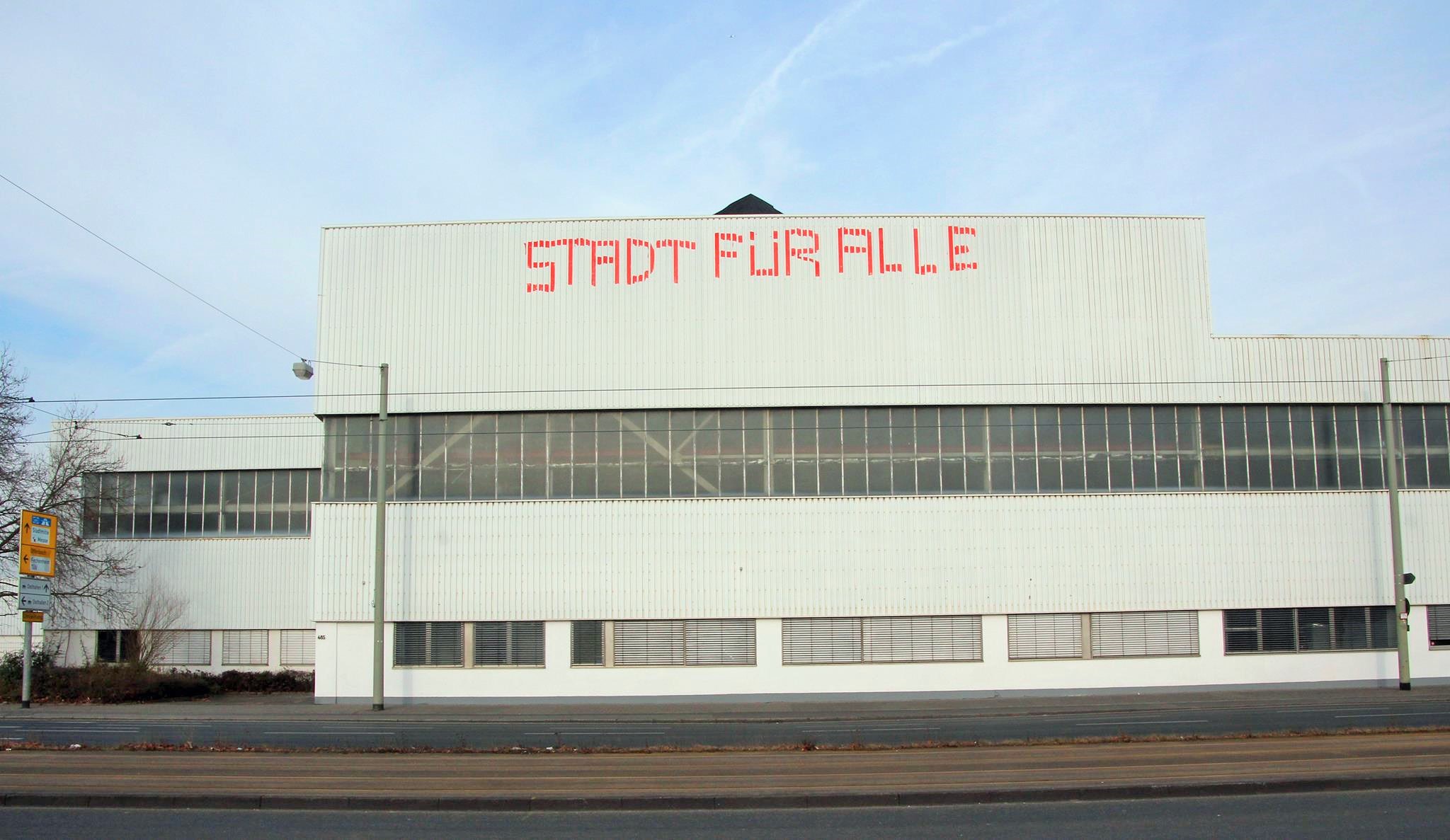
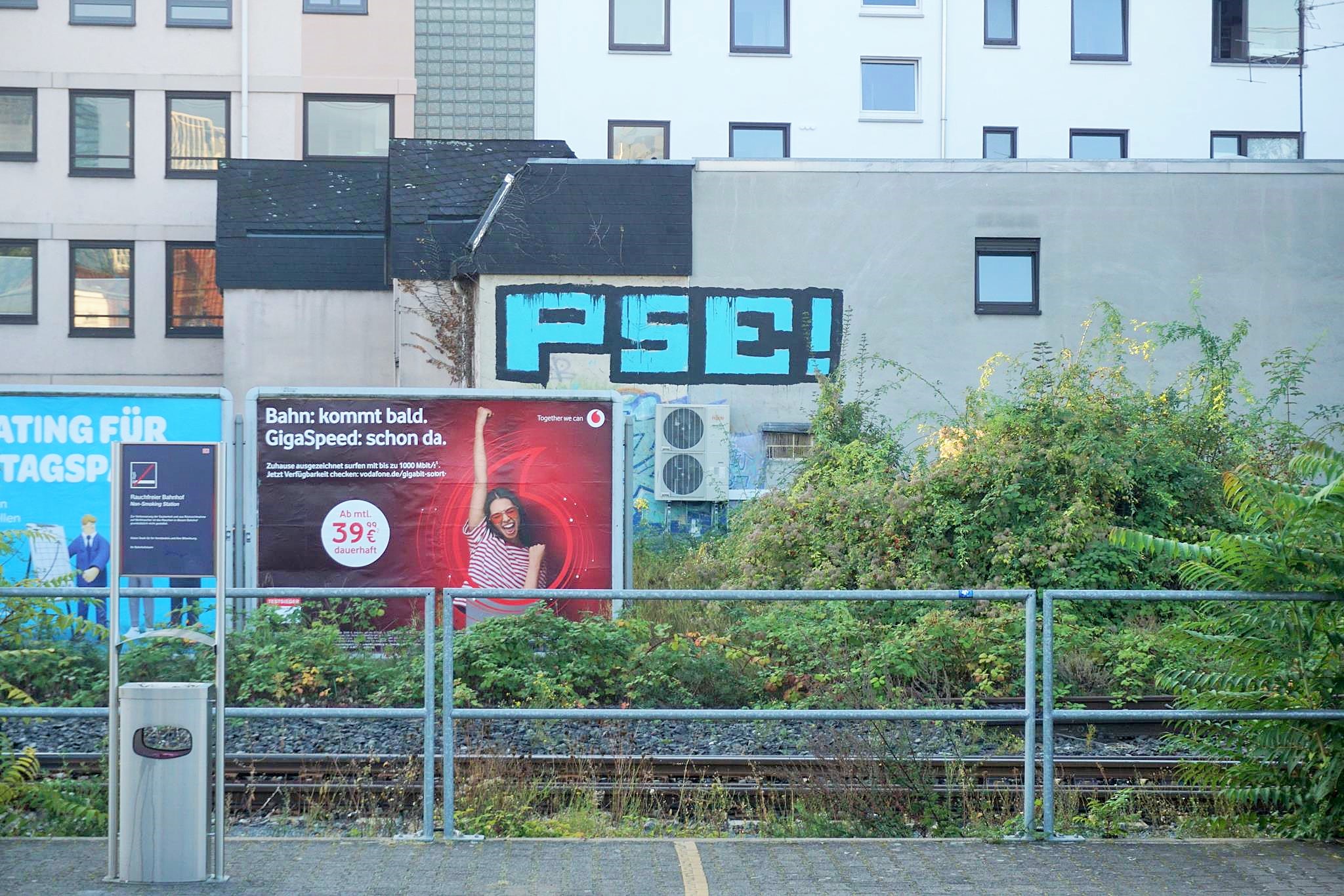
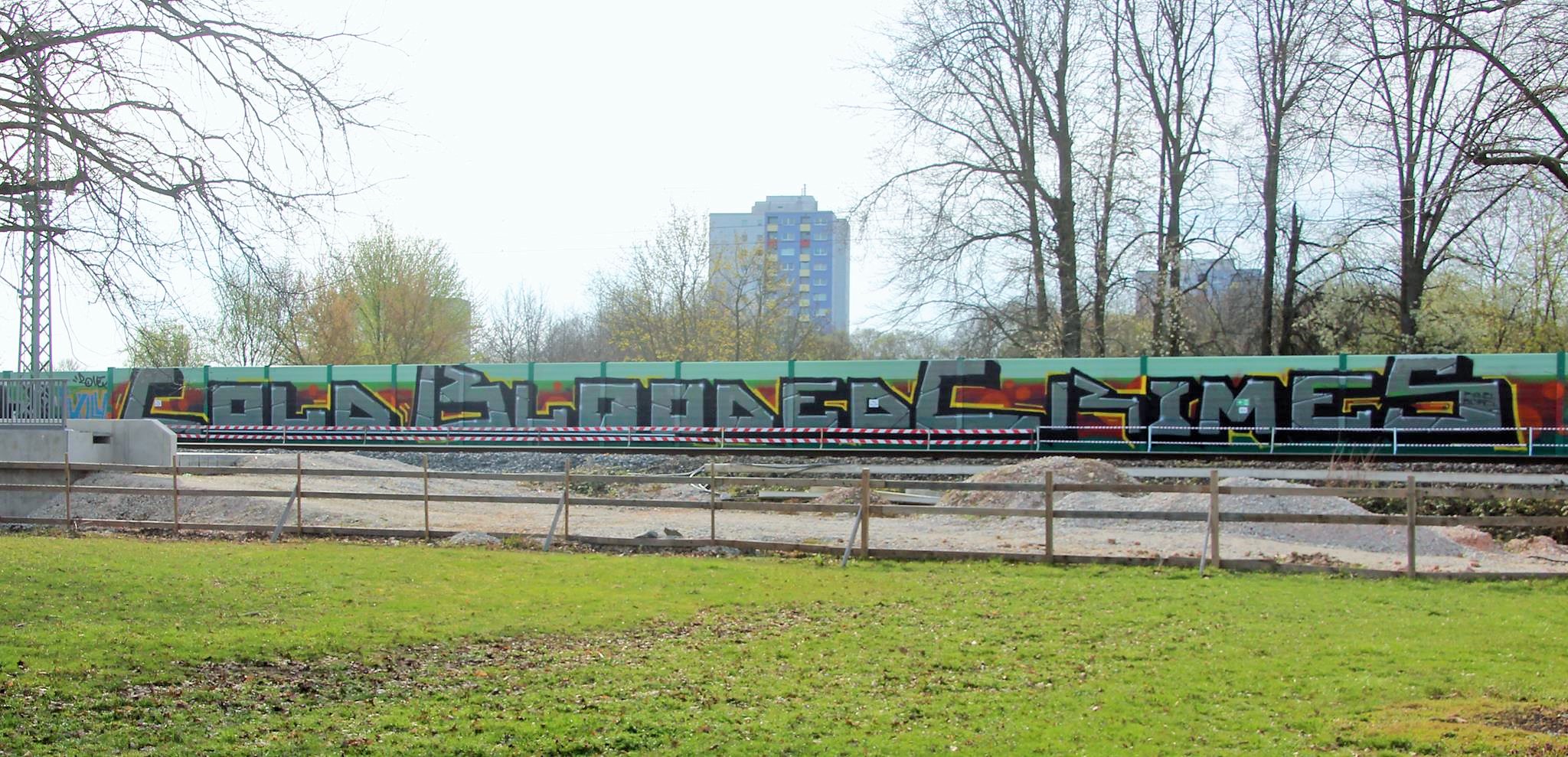
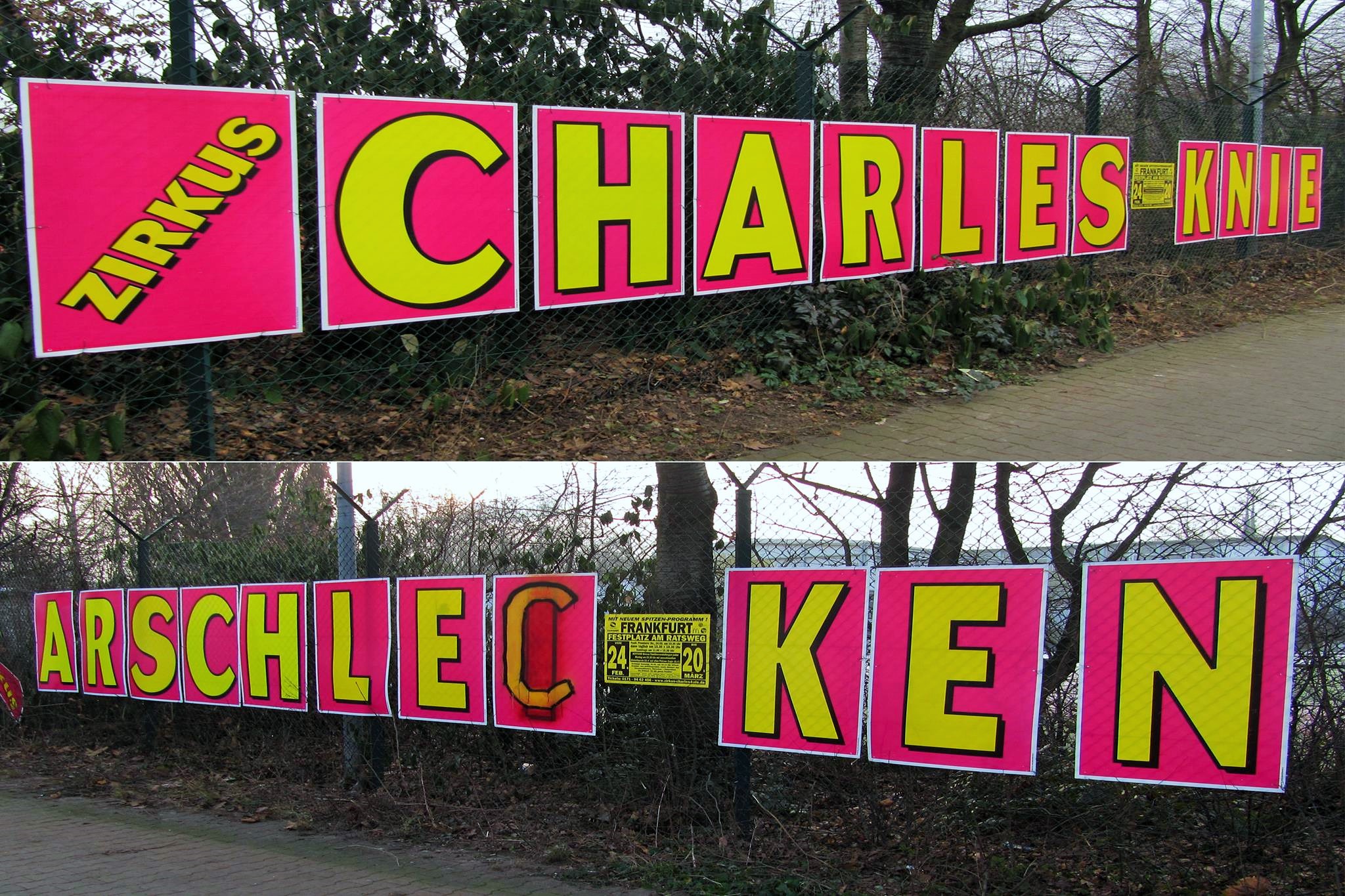
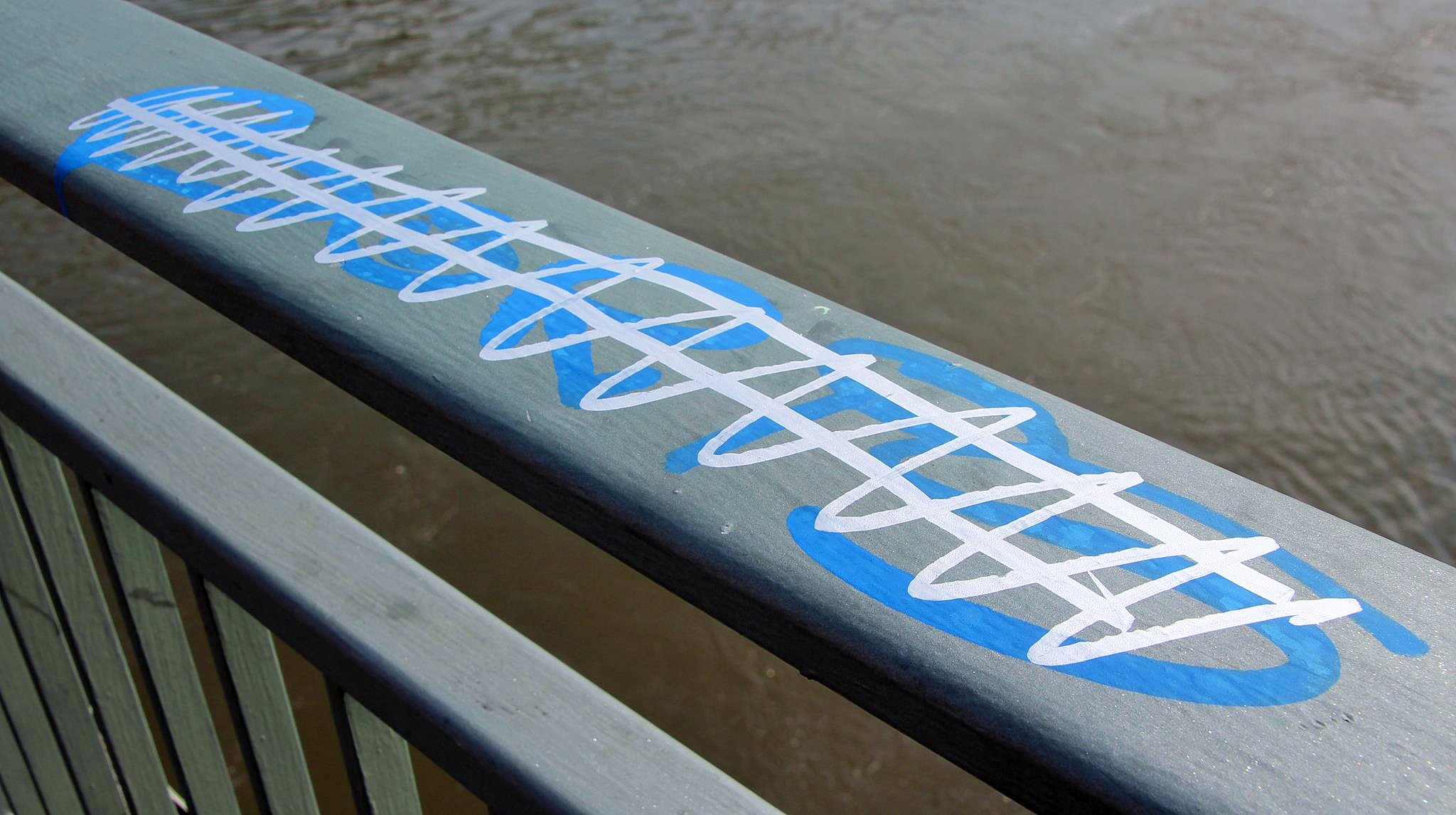
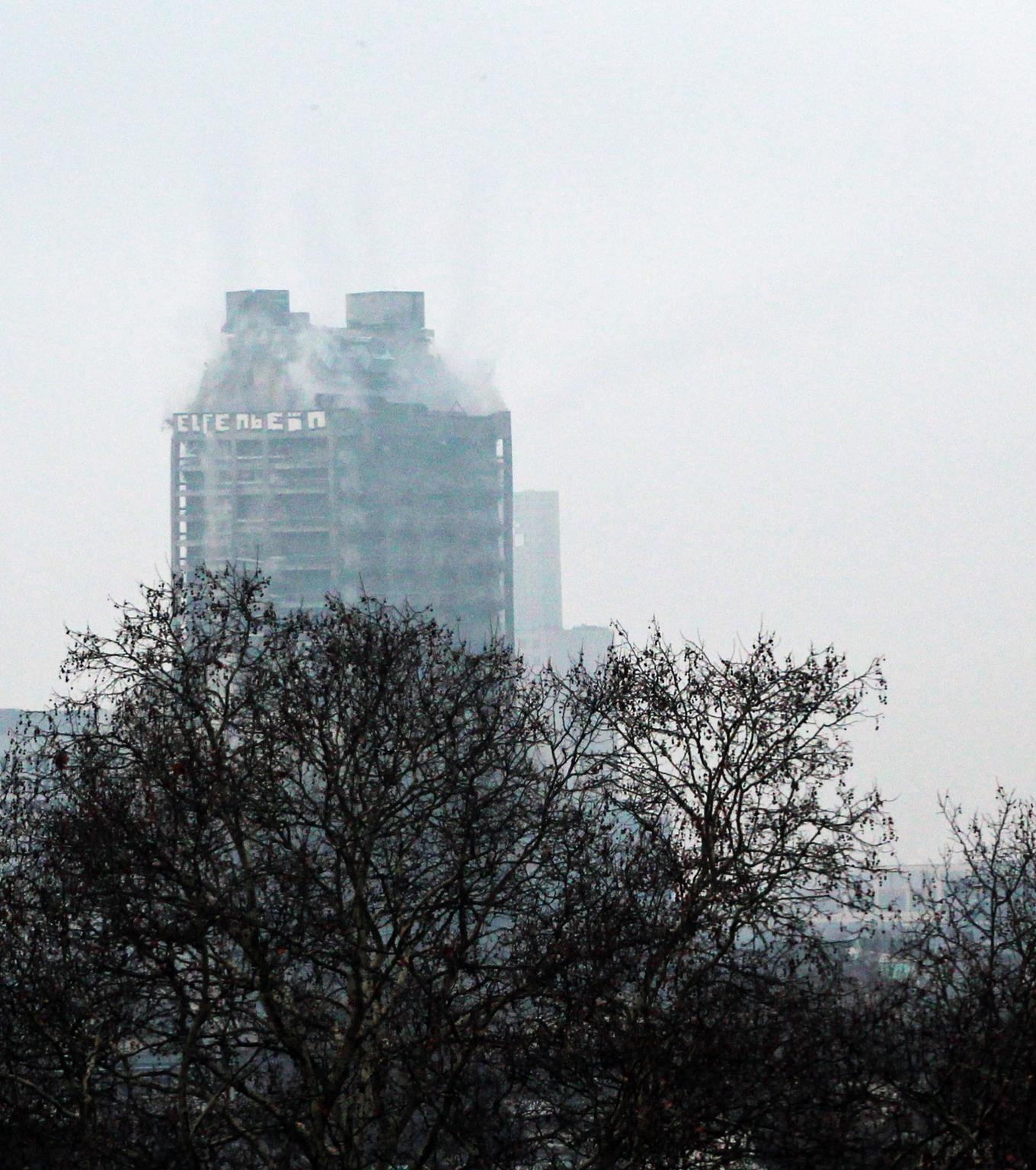
RECOMMENDABLE GRAFFITI SPOTS IN FRANKFURT
>>> Freiluftgalerie – Friedensbrücke <<<
>>> Character Jam <<<
>>> Das Dreckige Dutzend <<<
>>> Atelierfrankfurt <<<
>>> Niddatal – Pillar Paradise <<<
>>> We Love Bornheim <<<
>>> Café Koz <<<
>>> Wäldchen Underpass <<<
>>> Sticker Section <<<
CHECK OUT THE GALLERIES
>>> ![]() Category: Golden Nuggets <<<
Category: Golden Nuggets <<<
>>> ![]() Category: Train Stations <<<
Category: Train Stations <<<
>>> ![]() Category: Highway & Bridges <<<
Category: Highway & Bridges <<<
>>> ![]() Category: Complex Crafts <<<
Category: Complex Crafts <<<
>>> ![]() Category: Mighty Murals <<<
Category: Mighty Murals <<<
>>> ![]() Category: Hidden Secrets <<<
Category: Hidden Secrets <<<
>>> ![]() Category: Halls of Fame <<<
Category: Halls of Fame <<<
>>> ![]() Category: Open Spaces <<<
Category: Open Spaces <<<
>>> ![]() Category: Adventurous Art <<<
Category: Adventurous Art <<<
>>> ![]() Category: Good Ones <<<
Category: Good Ones <<<
>>> ![]() Category: Midrange <<<
Category: Midrange <<<
>>> ![]() Category: Low Quality <<<
Category: Low Quality <<<
>>> ![]() Category: Contract Work <<<
Category: Contract Work <<<
MORE STREETART MAPS FROM GERMANY
>>> Streetart Map Berlin <<<
>>> Streetart Map Frankfurt <<<
>>> Streetart Map Hamburg <<<
>>> Streetart Map Munich <<<
>>> Streetart Map Hannover <<<
>>> Streetart Map Heilbronn <<<
>>> Streetart Map Rheine <<<
>>> Streetart Map Insel Poel <<<
MORE ARTICLES ABOUT GERMANY
>>> Graffiti Mag MAINSTYLE <<<
>>> Stencil Artist TONA <<<
>>> Das Dreckige Dutzend <<<
>>> Sculptor Pit Ruge <<<
>>> Dosenkunst – Jörg Rudolph <<<
>>> Sprayer CESAR ONE <<<
>>> Filmmaker Bernd Lützeler <<<
>>> Lupus Alpha – Calligraffiti <<<
>>> Firedancer Cassiopeia <<<
>>> Collagist DeePee <<<
>>> Sprayer ARTMOS4 <<<
>>> Painter Serkan Goeren <<<
>>> ElectroClassics – THE OHOHOHS <<<
>>> Painter Frau Fenster <<<
>>> Photographer Niko Neuwirth <<<
>>> Performance – Dirk Baumanns <<<
>>> Graffiti Artist RAWS <<<
>>> Hannover Glocksee <<<
>>> TO5Z <<<
>>> Andreas Weingärtner <<<
>>> Sprayer BERK <<<
>>> Nashi Young Cho Jazz <<<
>>> Painter Serkan Goeren <<<
>>> AnniMalisch Techno <<<
>>> Tula Trash’s Trashland <<<
>>> Performer Tamara Zippel <<<
>>> Painter Angelika Grünberg <<<
>>> Kreativnomade Sam Khayari <<<
>>> Toy of the Ape <<<
>>> Painter Jay Gnomenfrau <<<
>>> Photographer Tom Hoenig <<<
>>> Frankfurt – Pillar Paradise <<<
